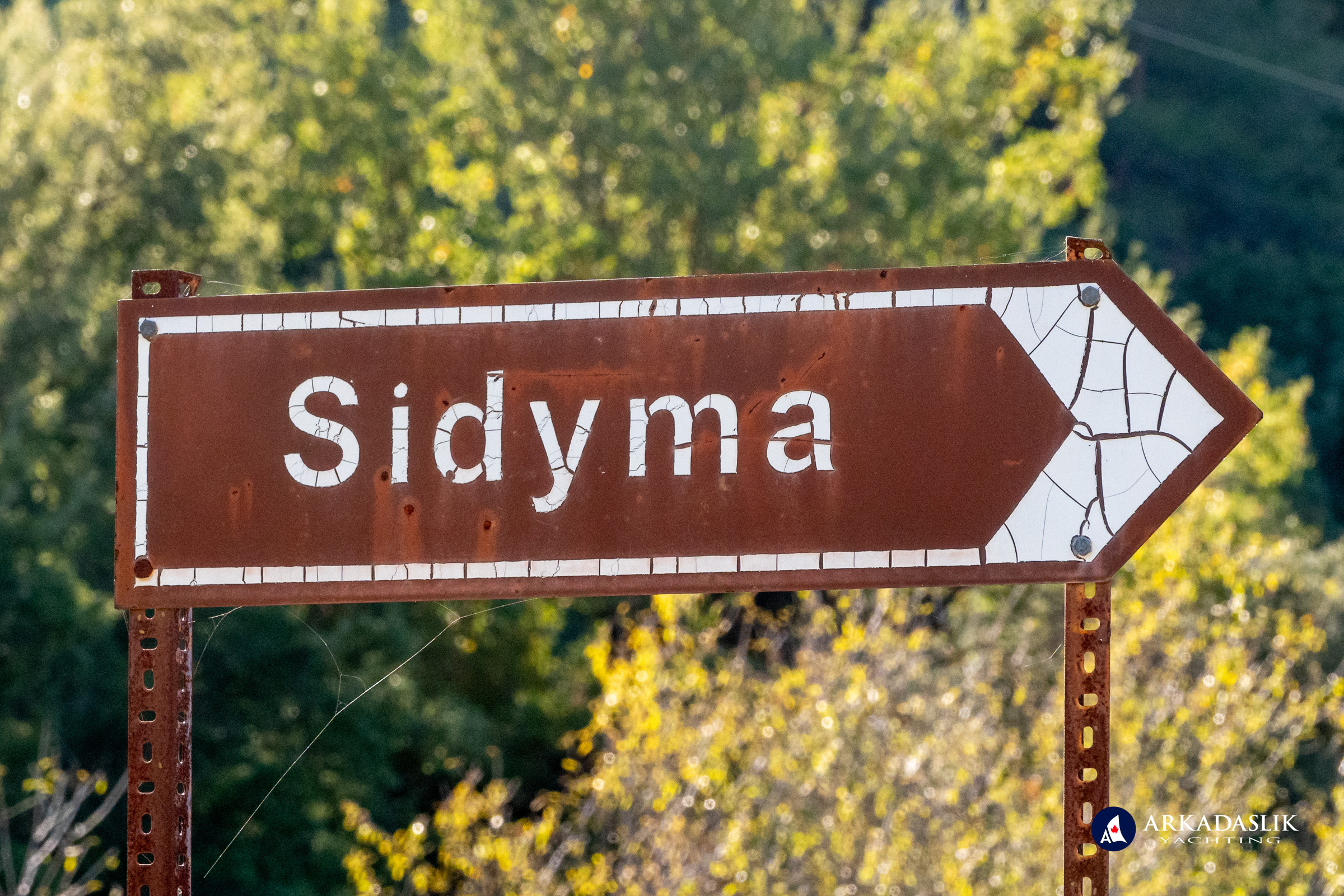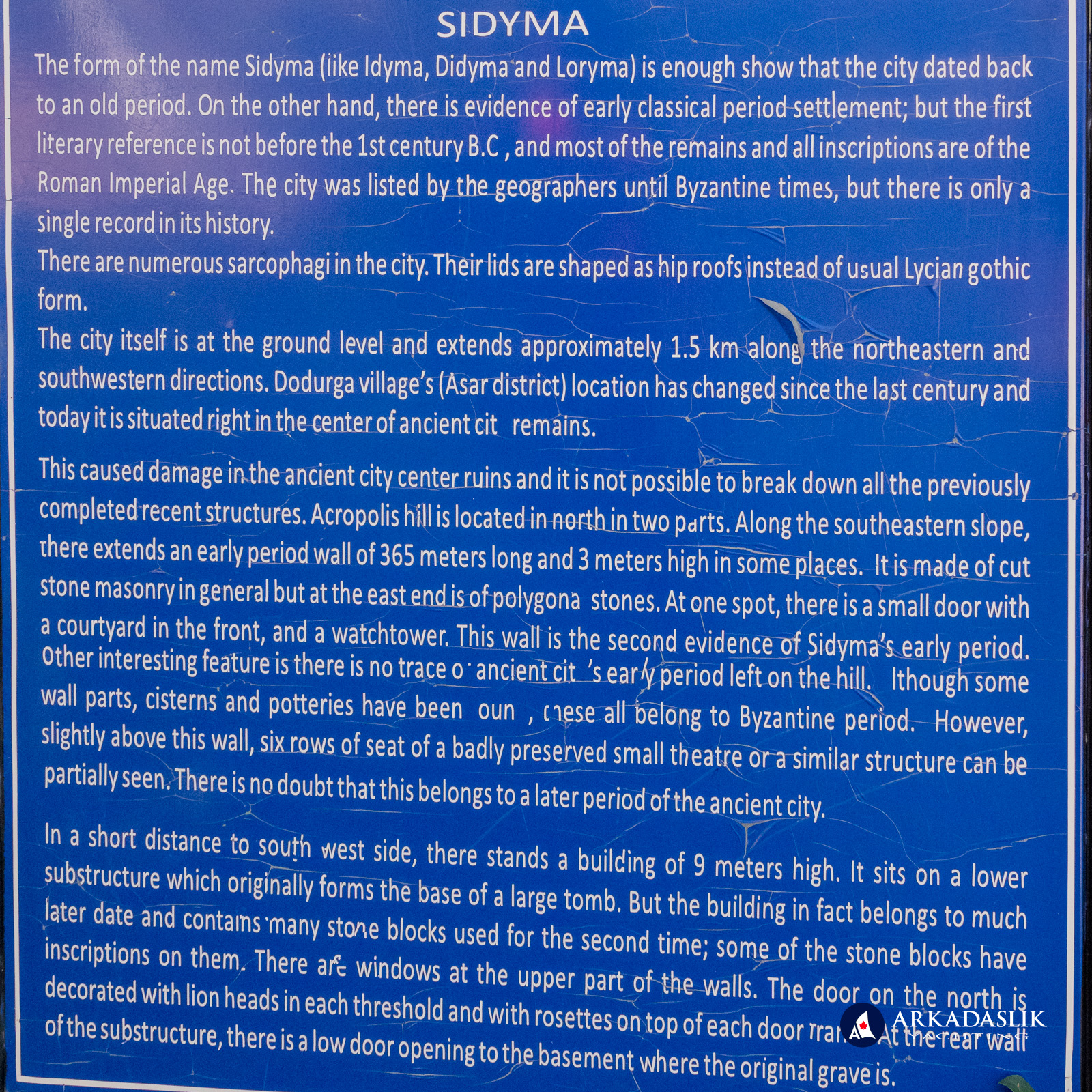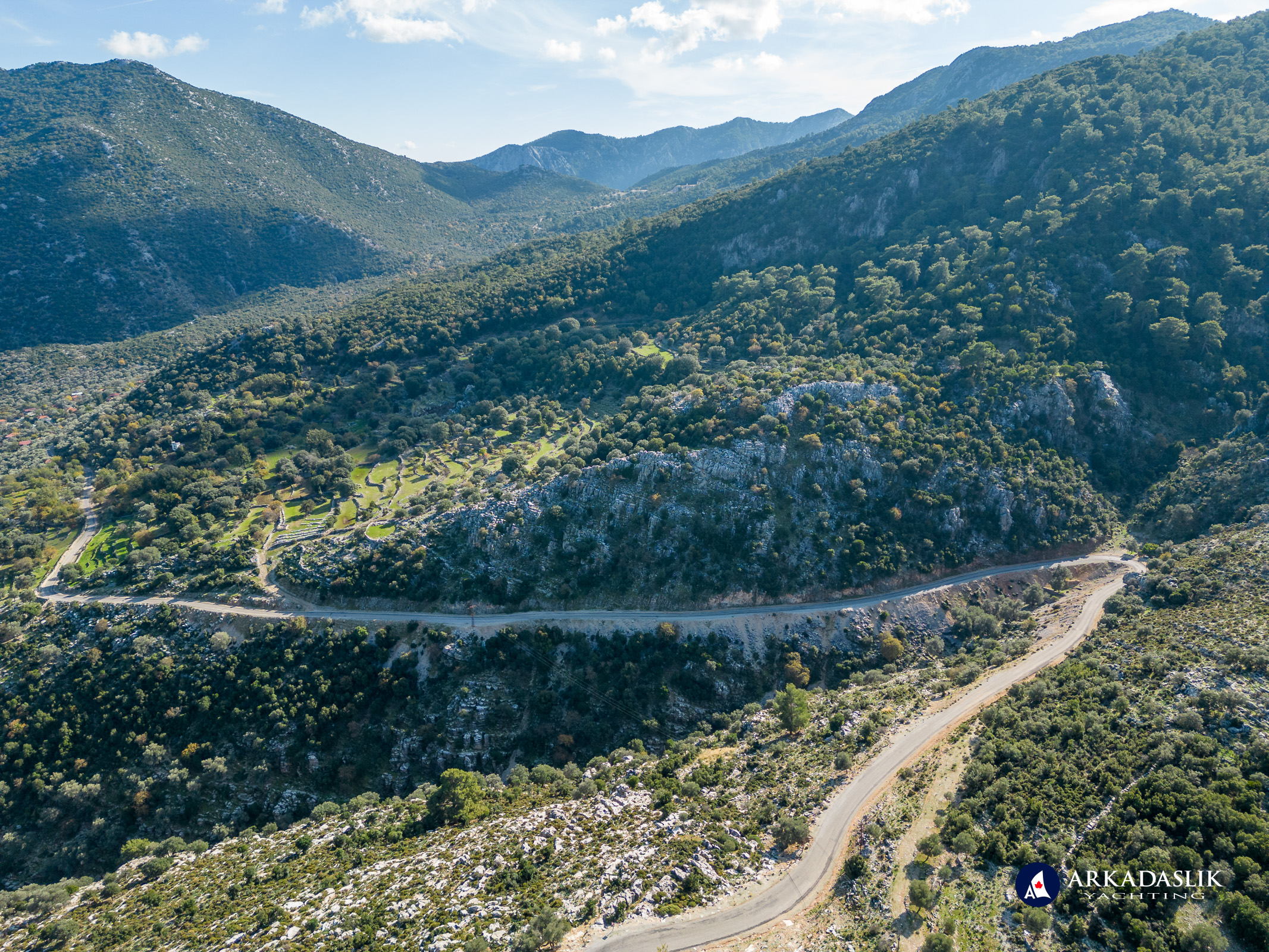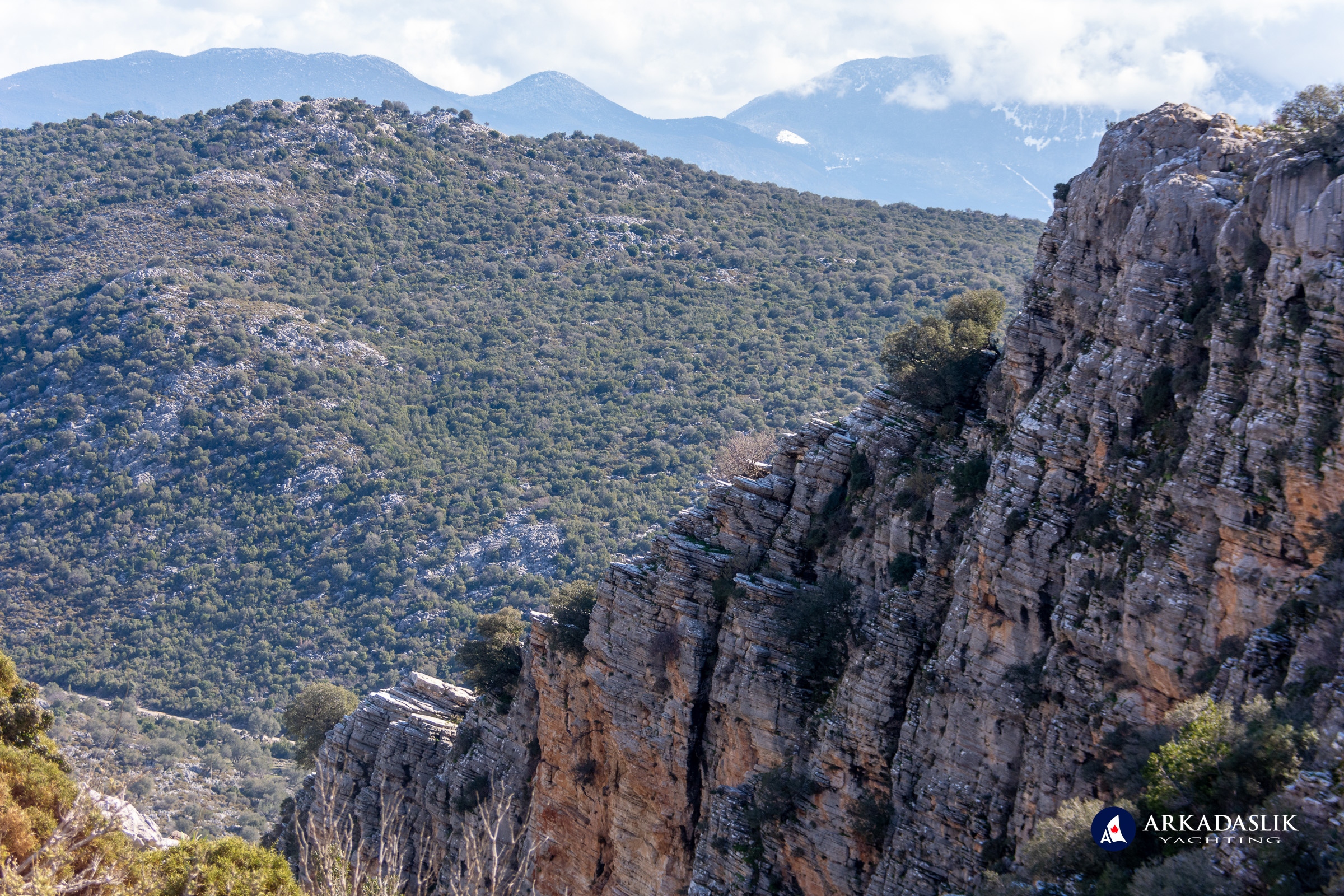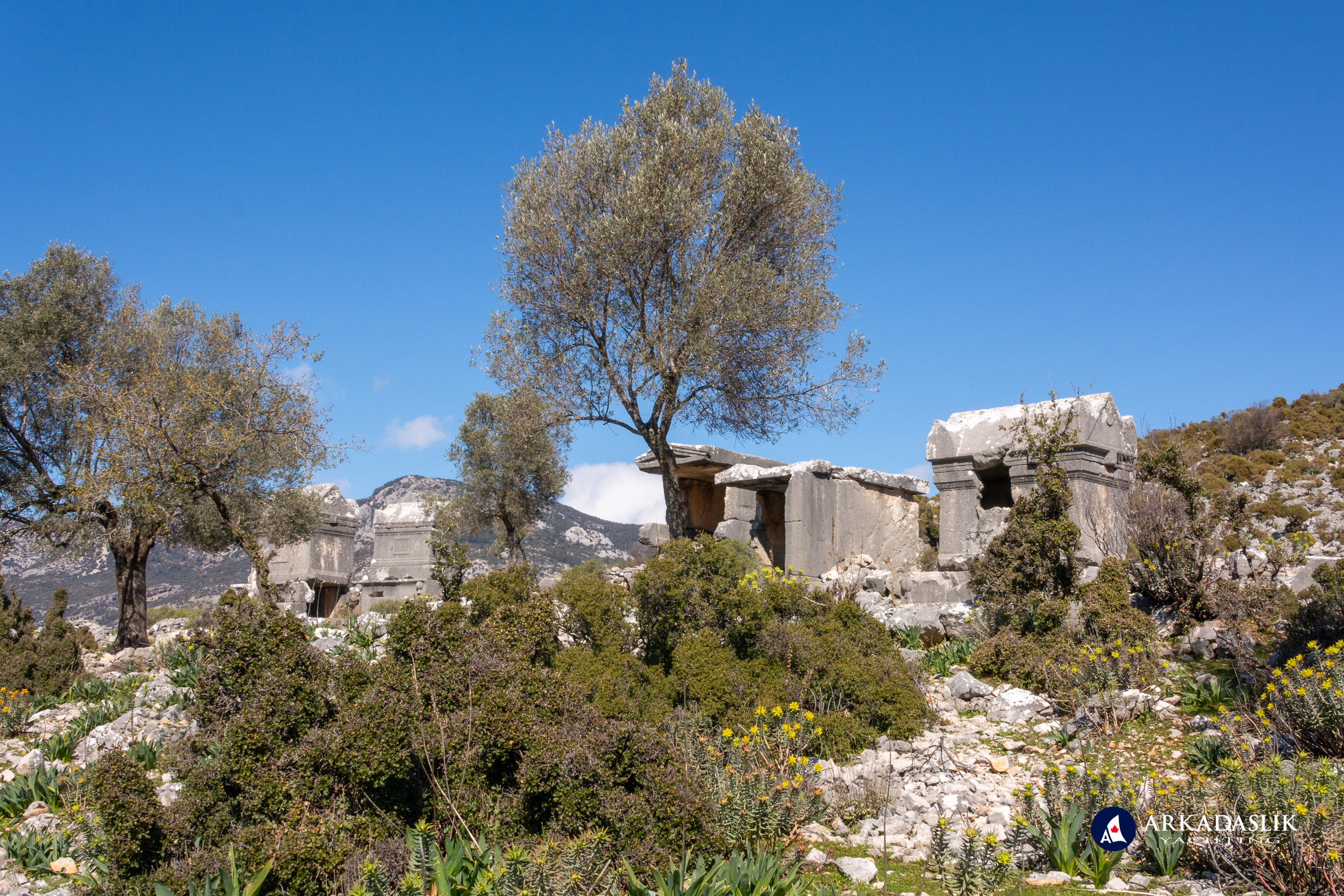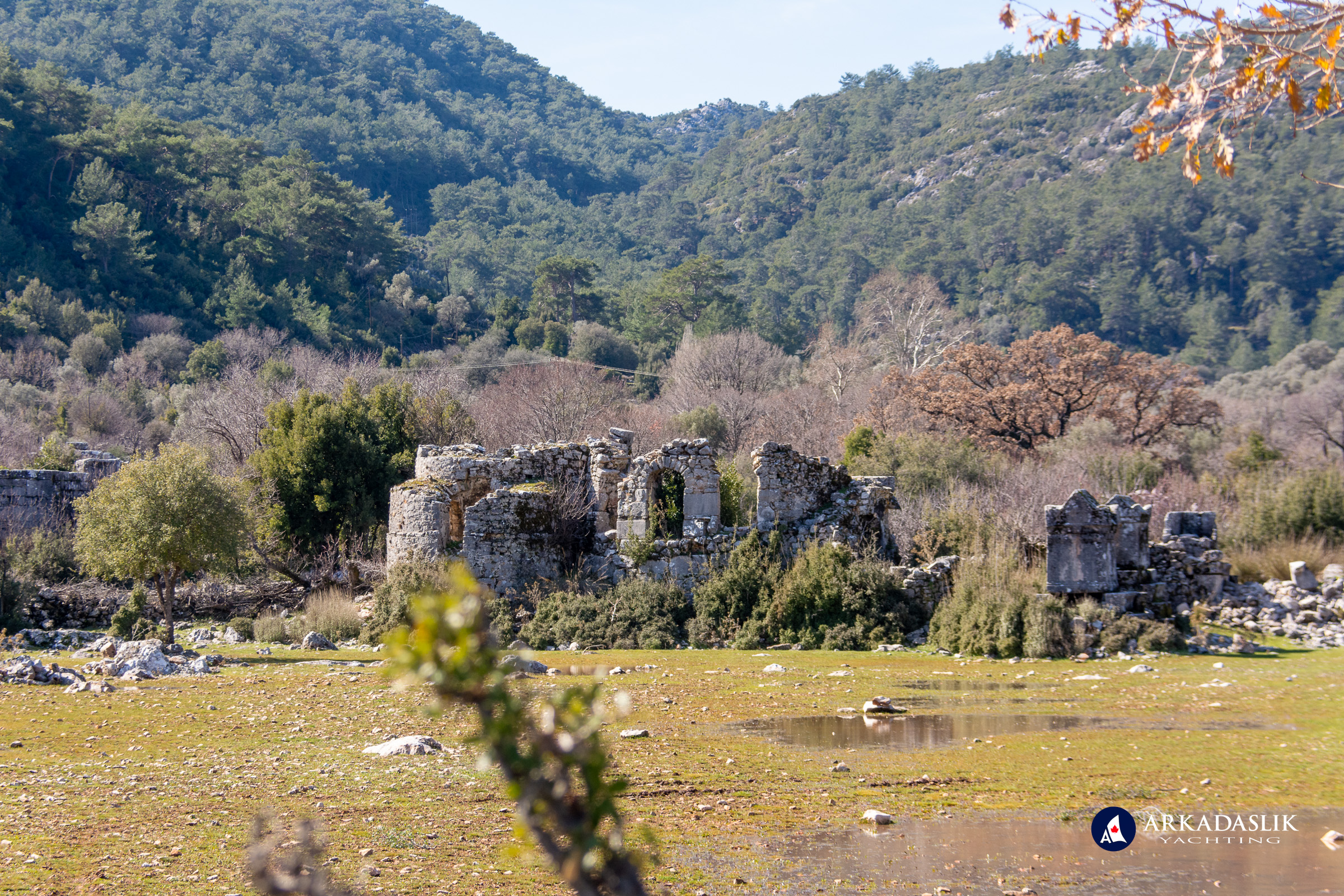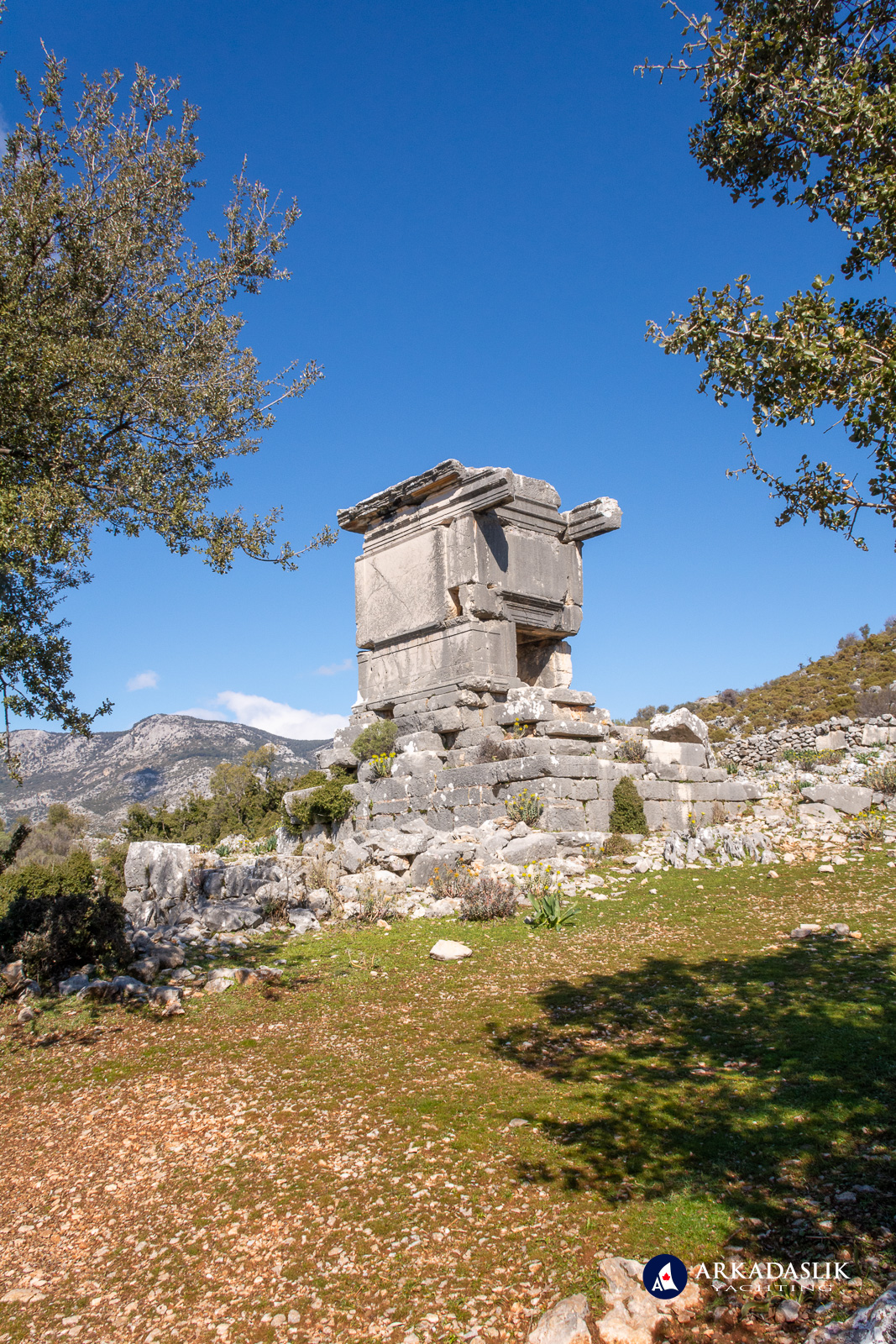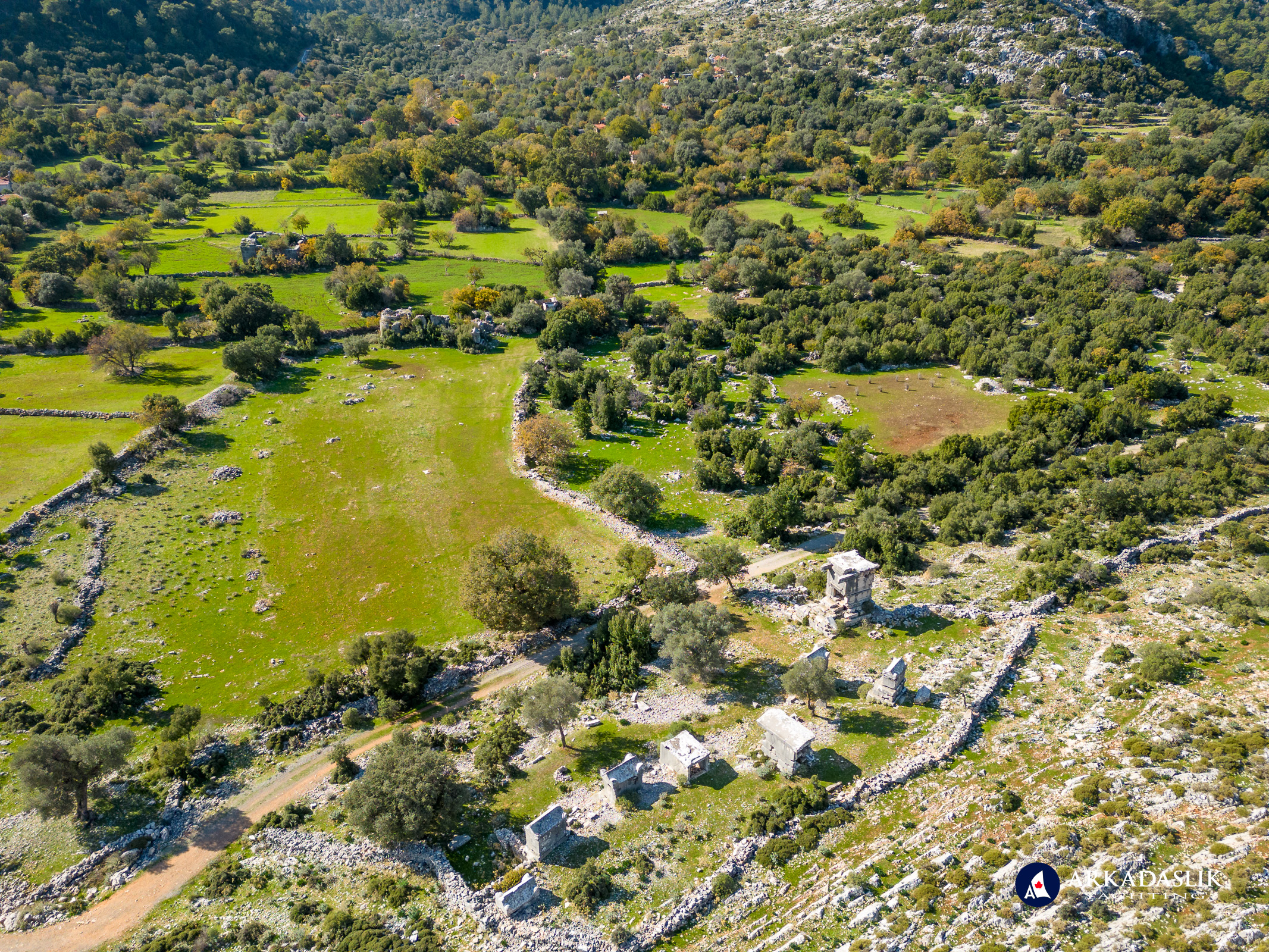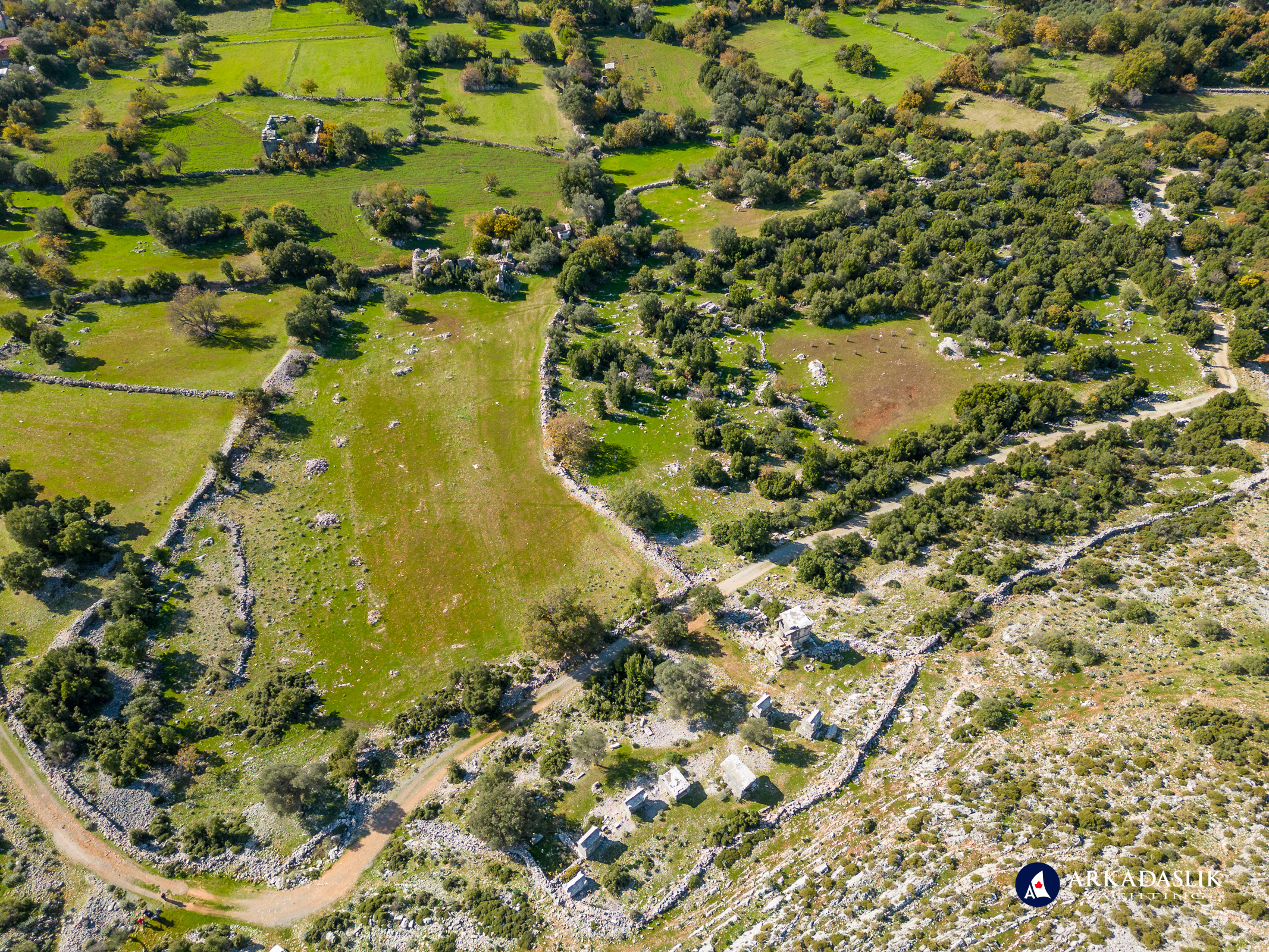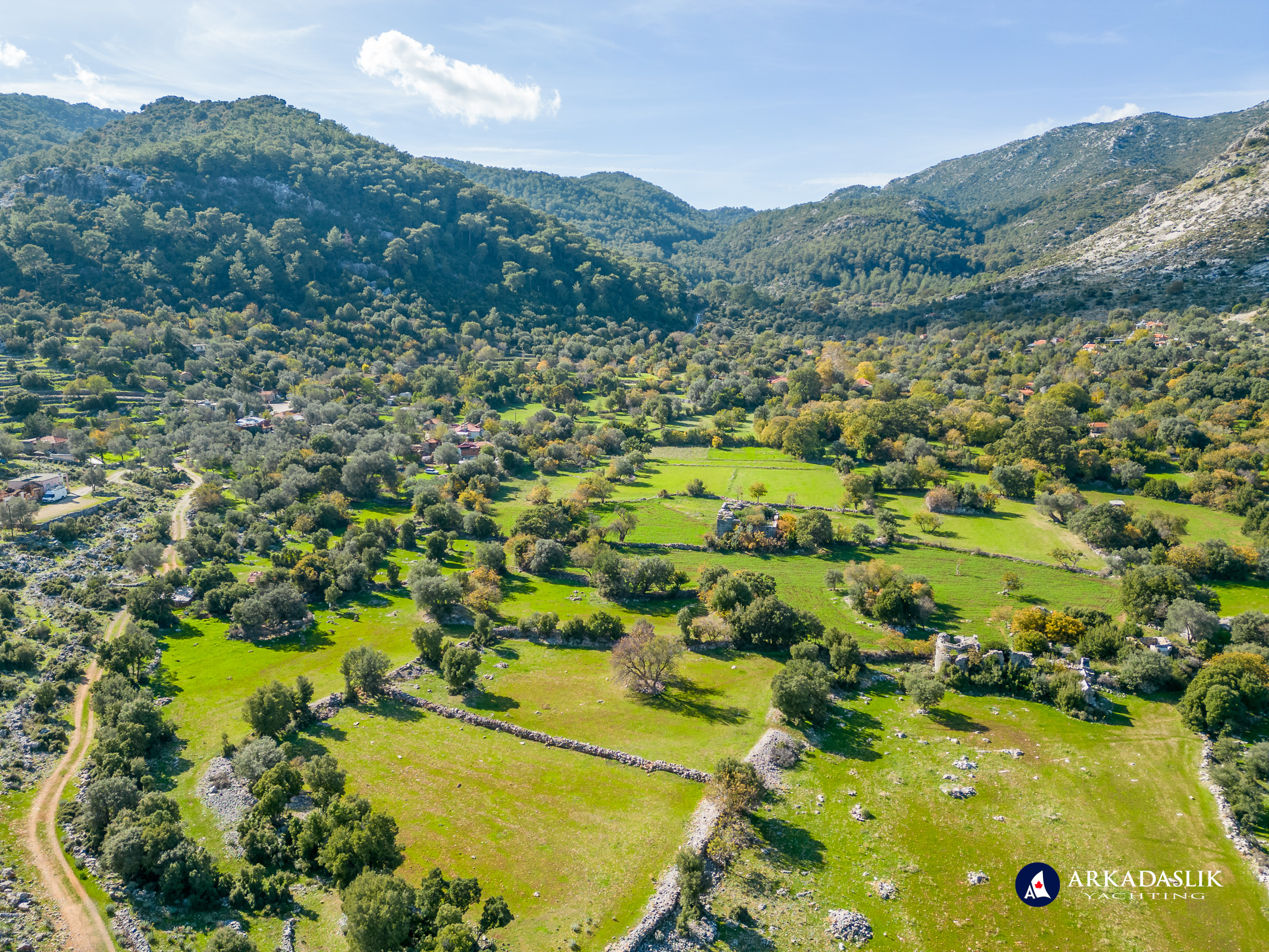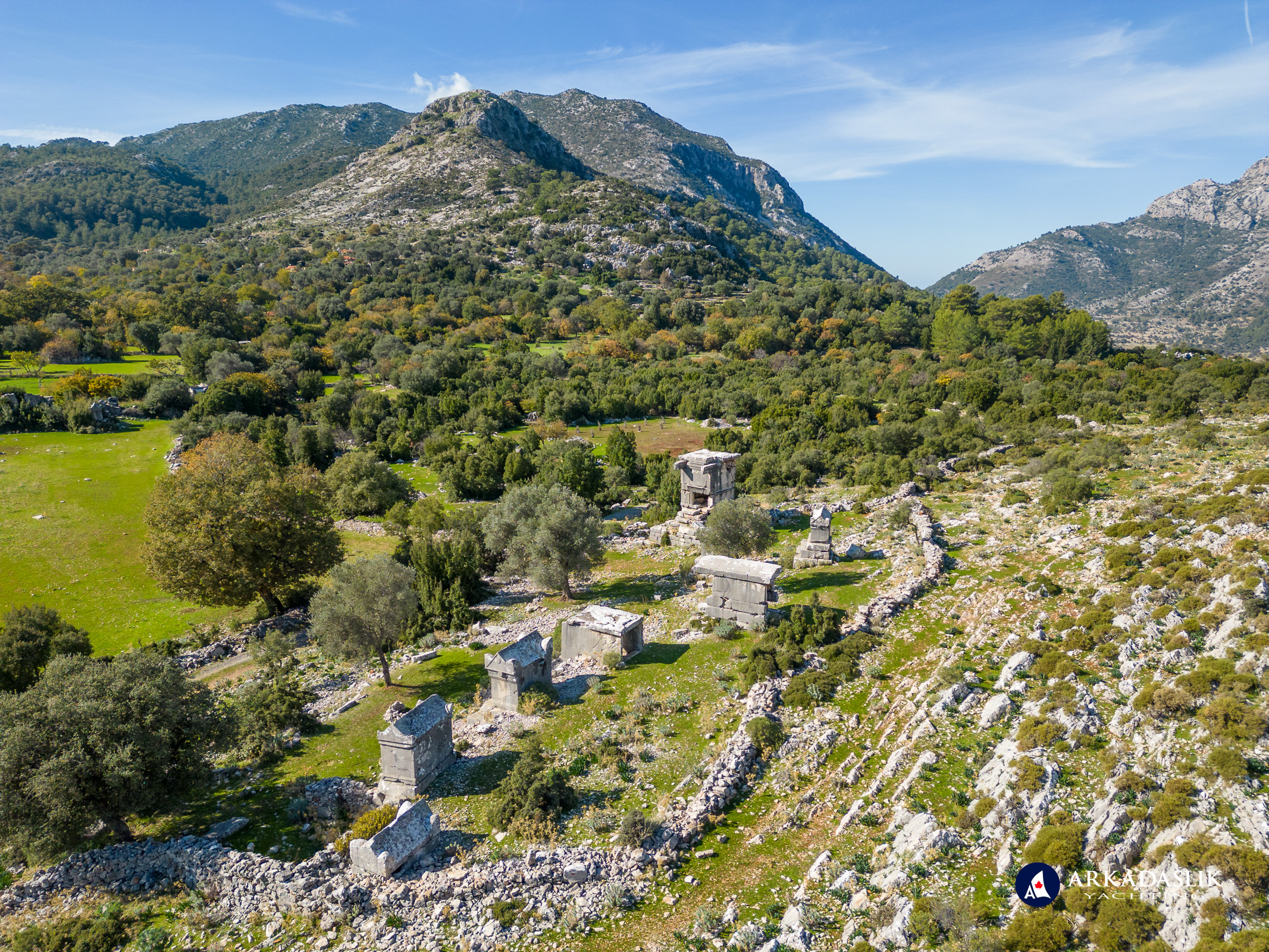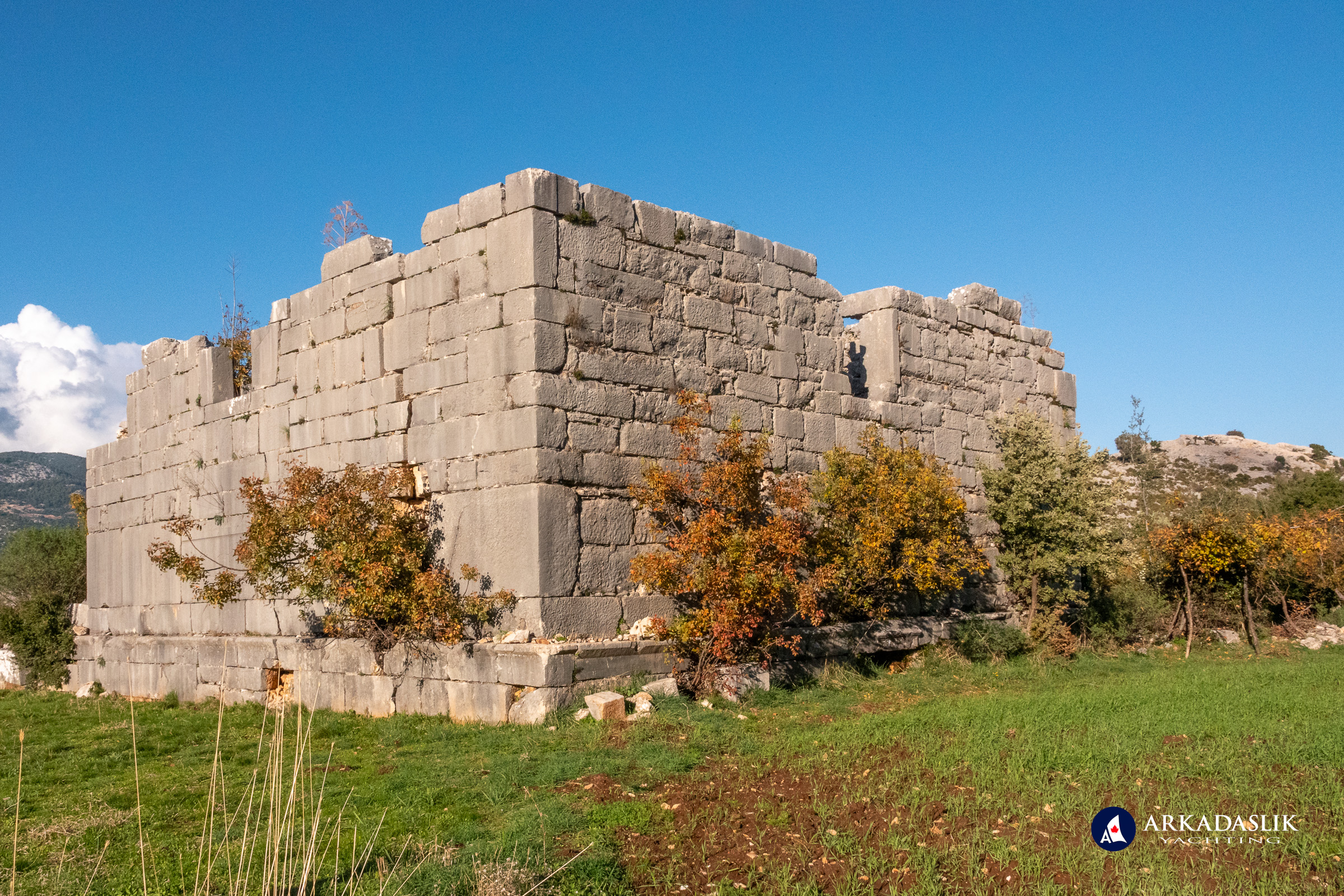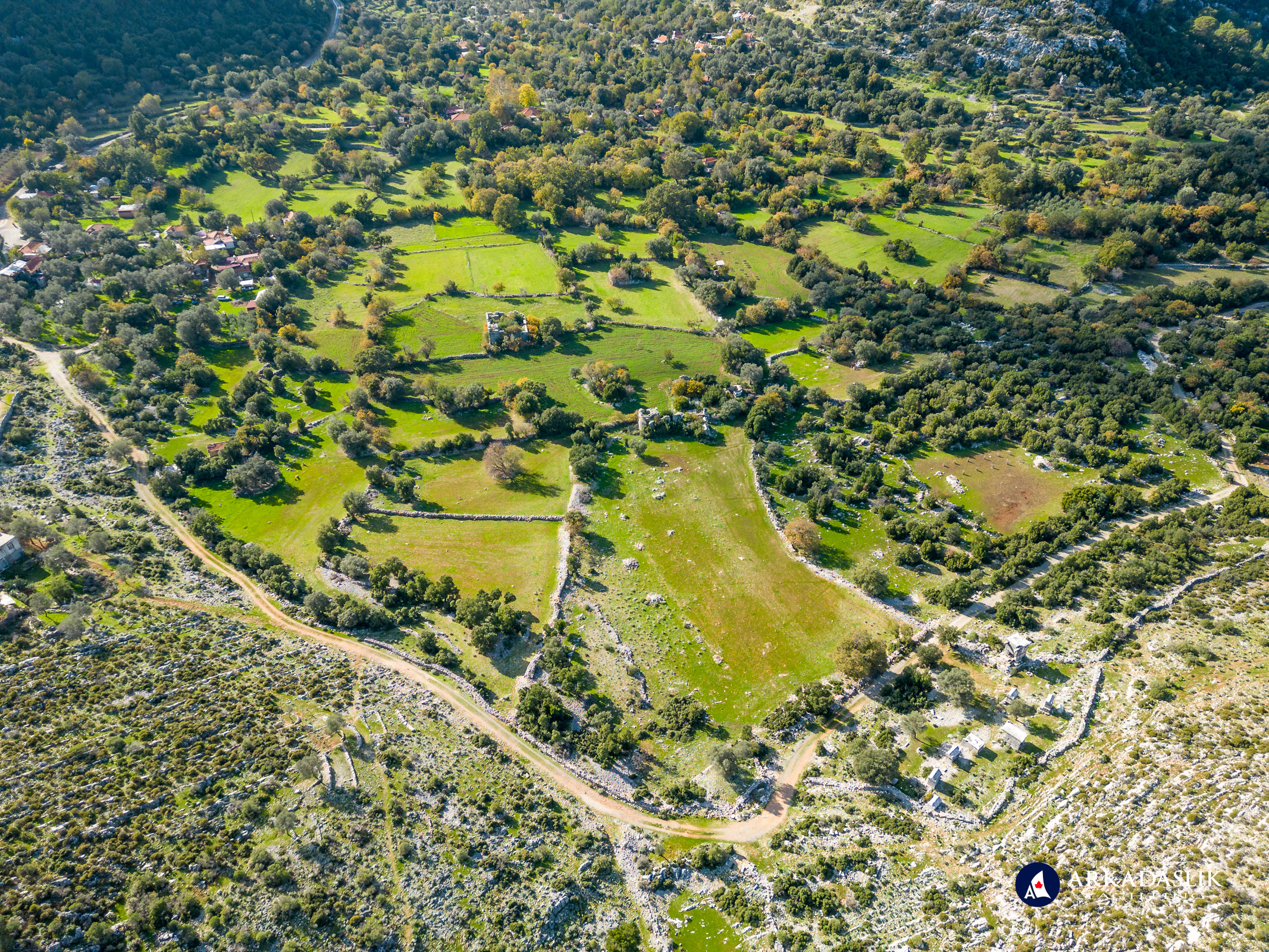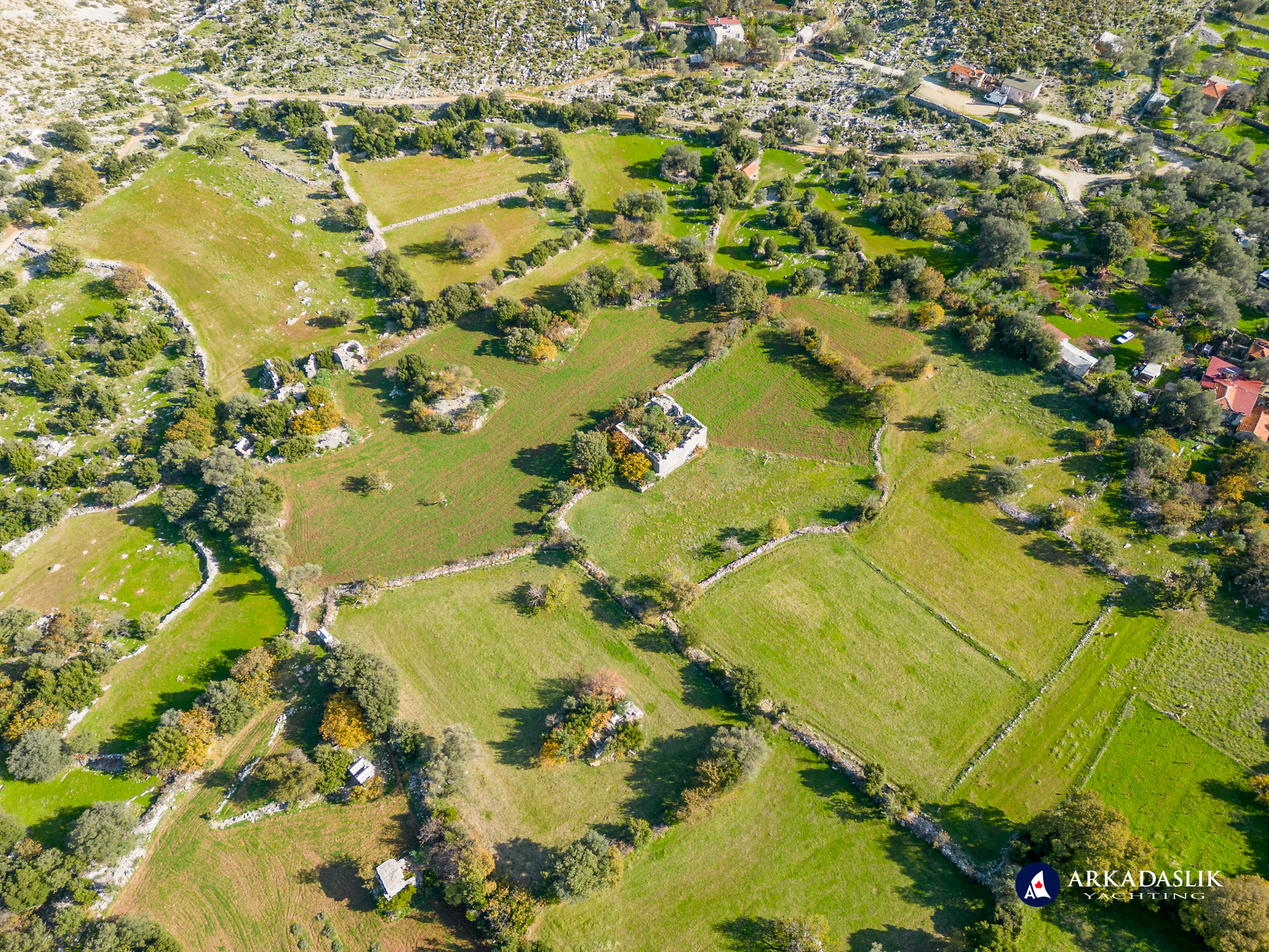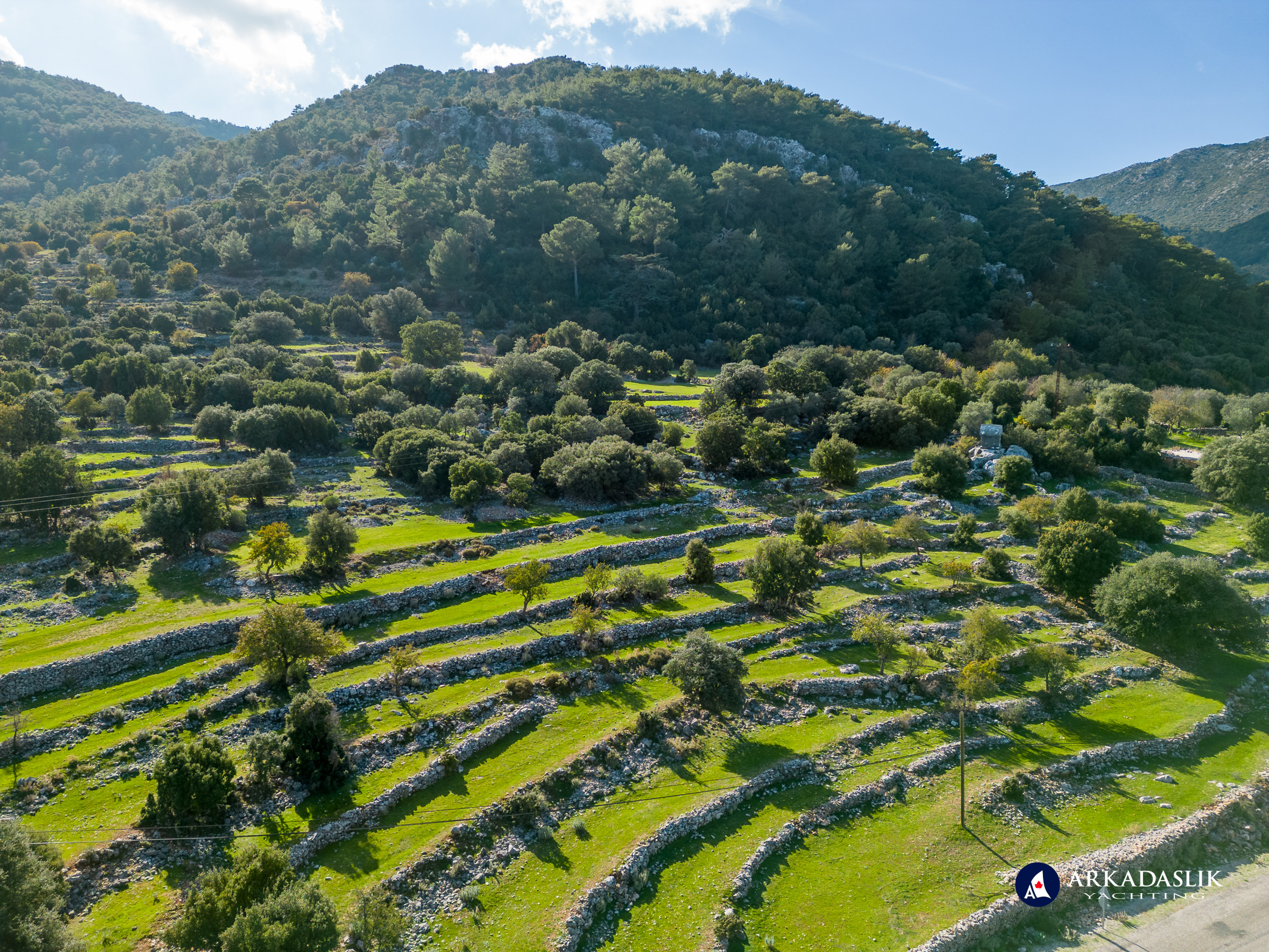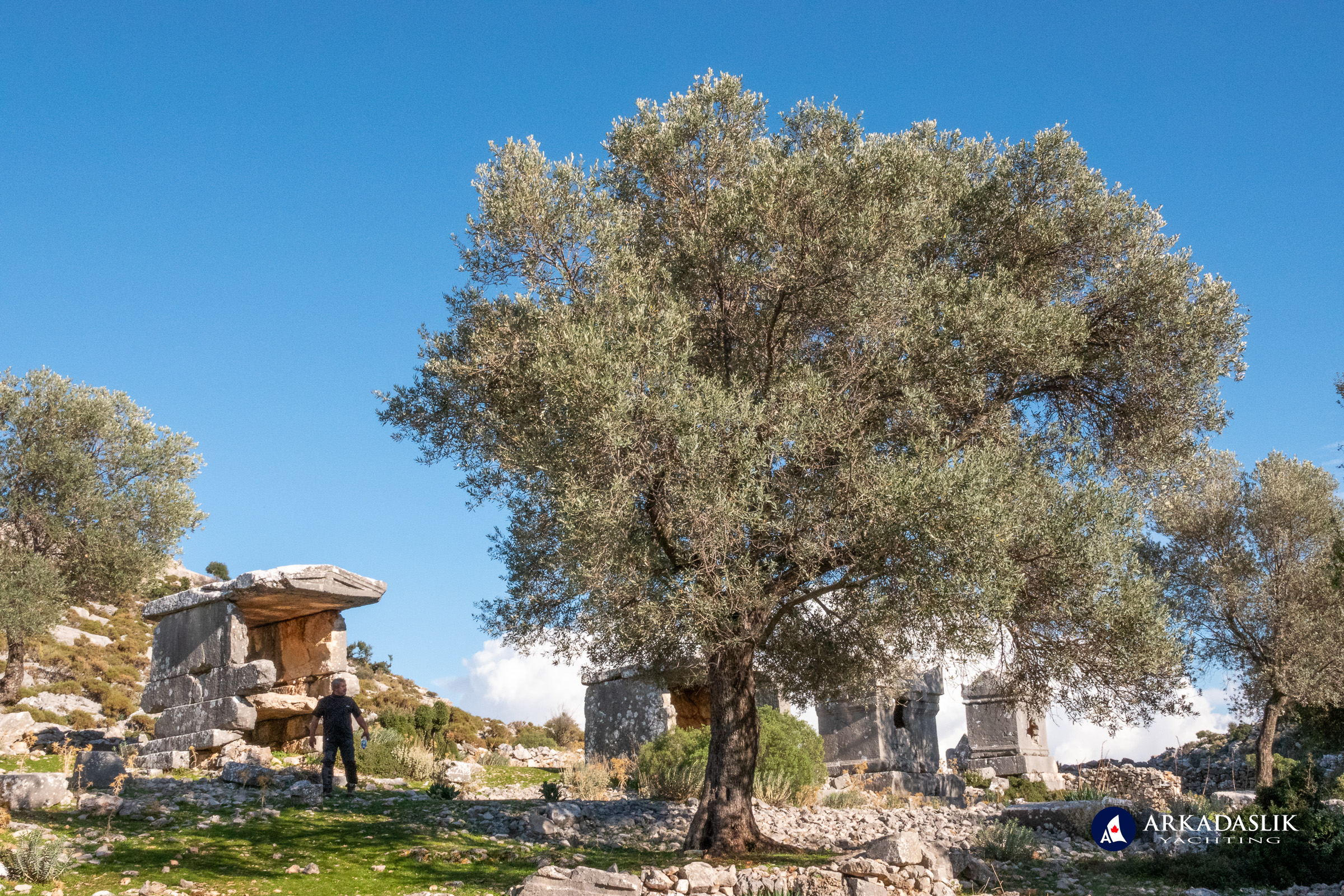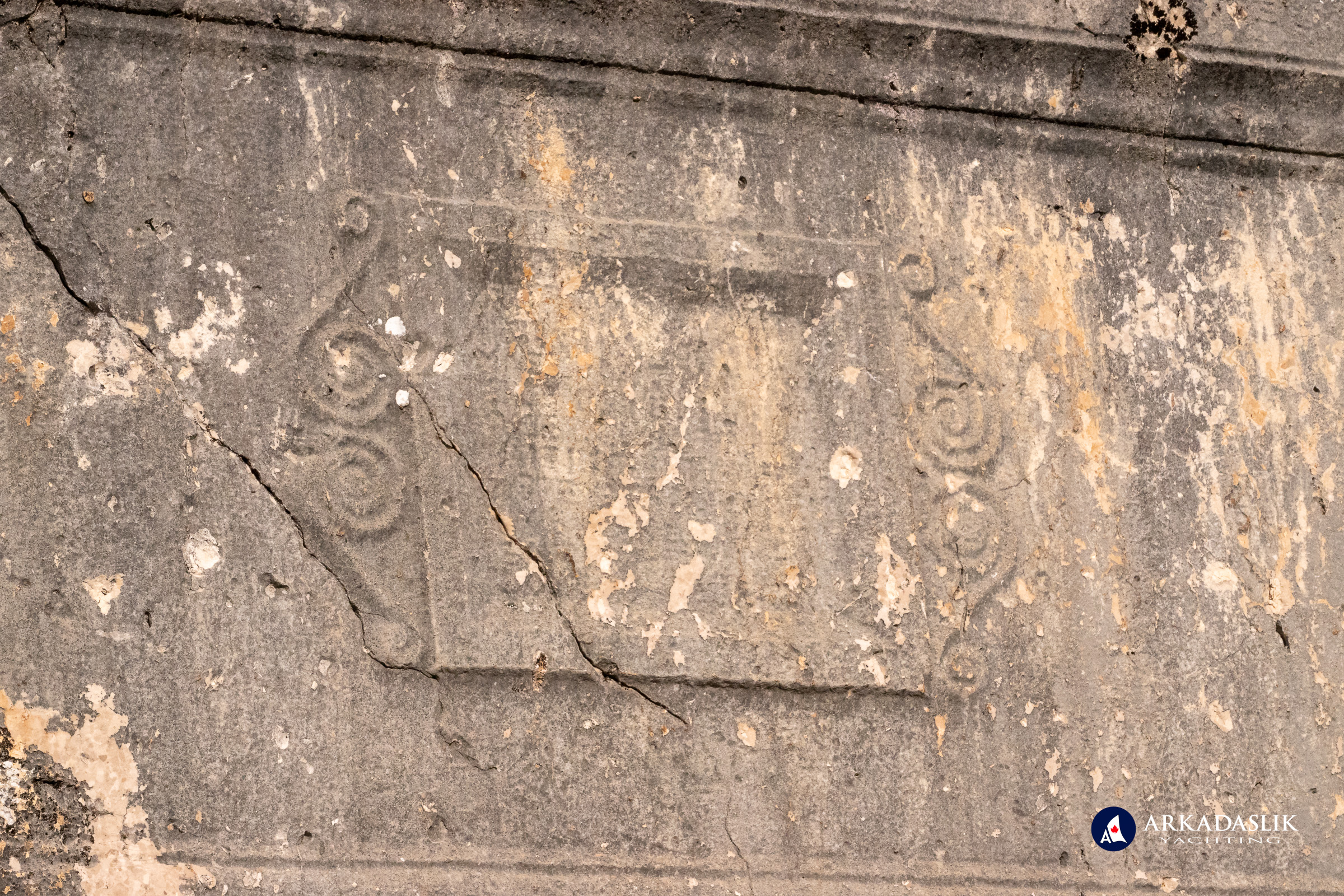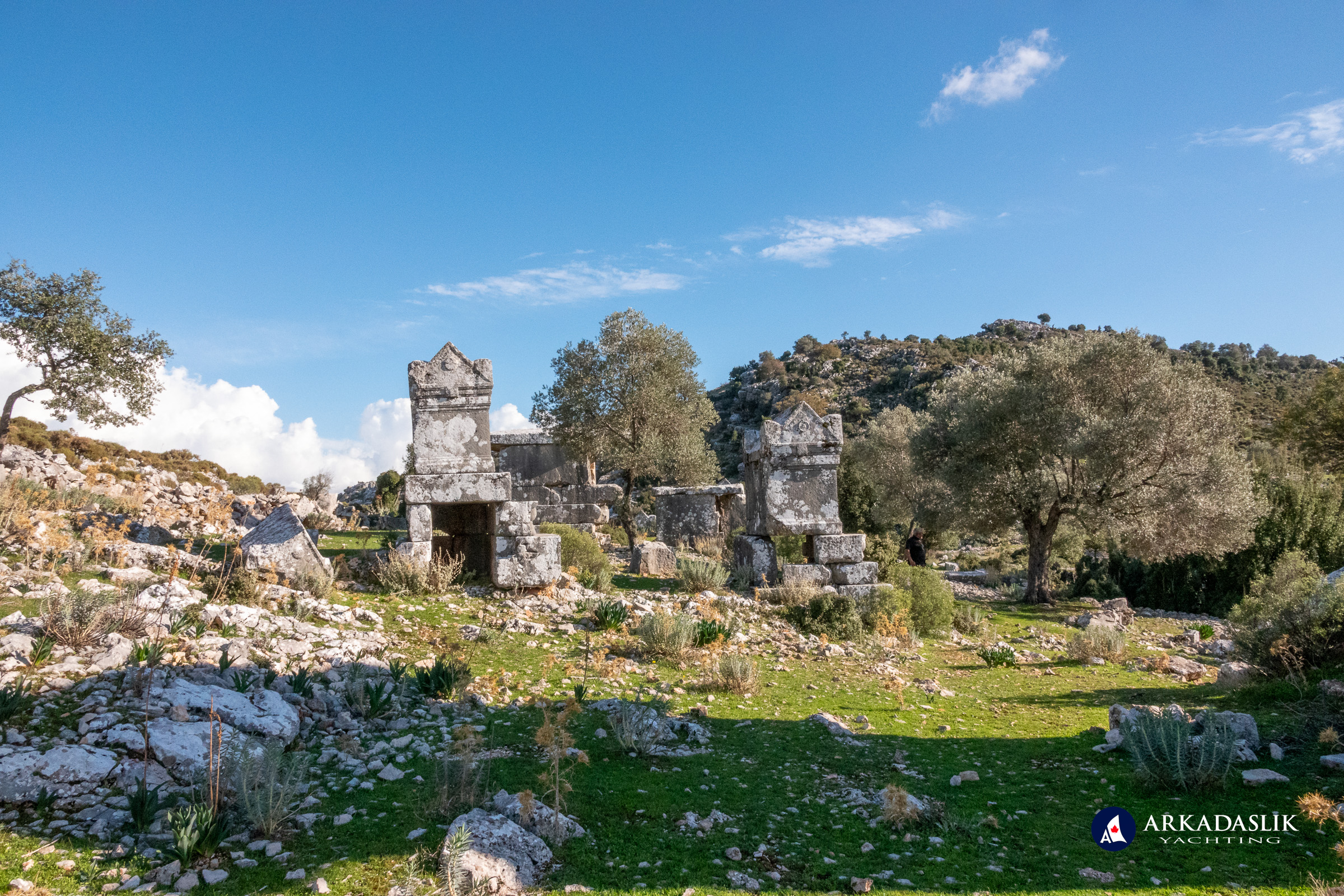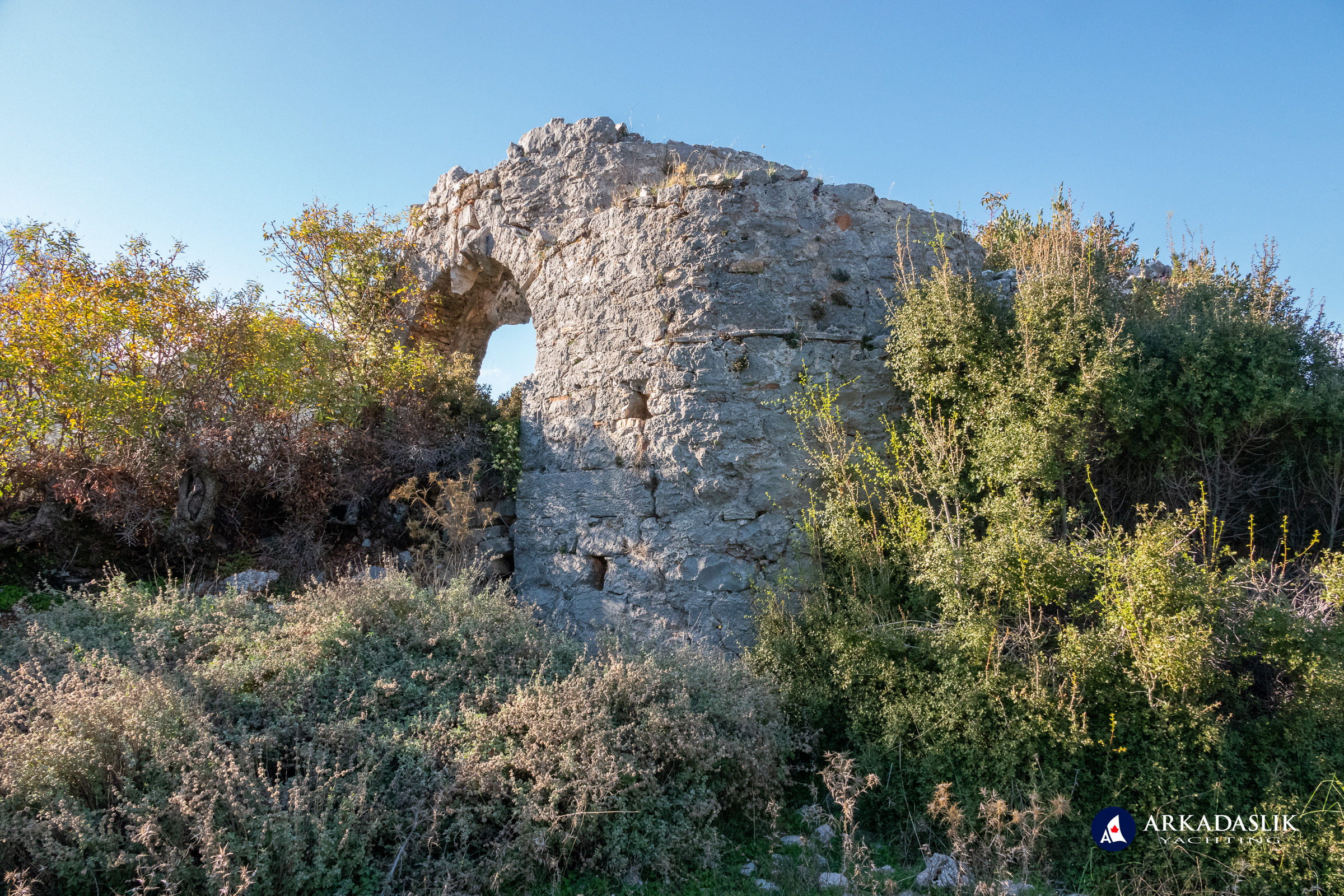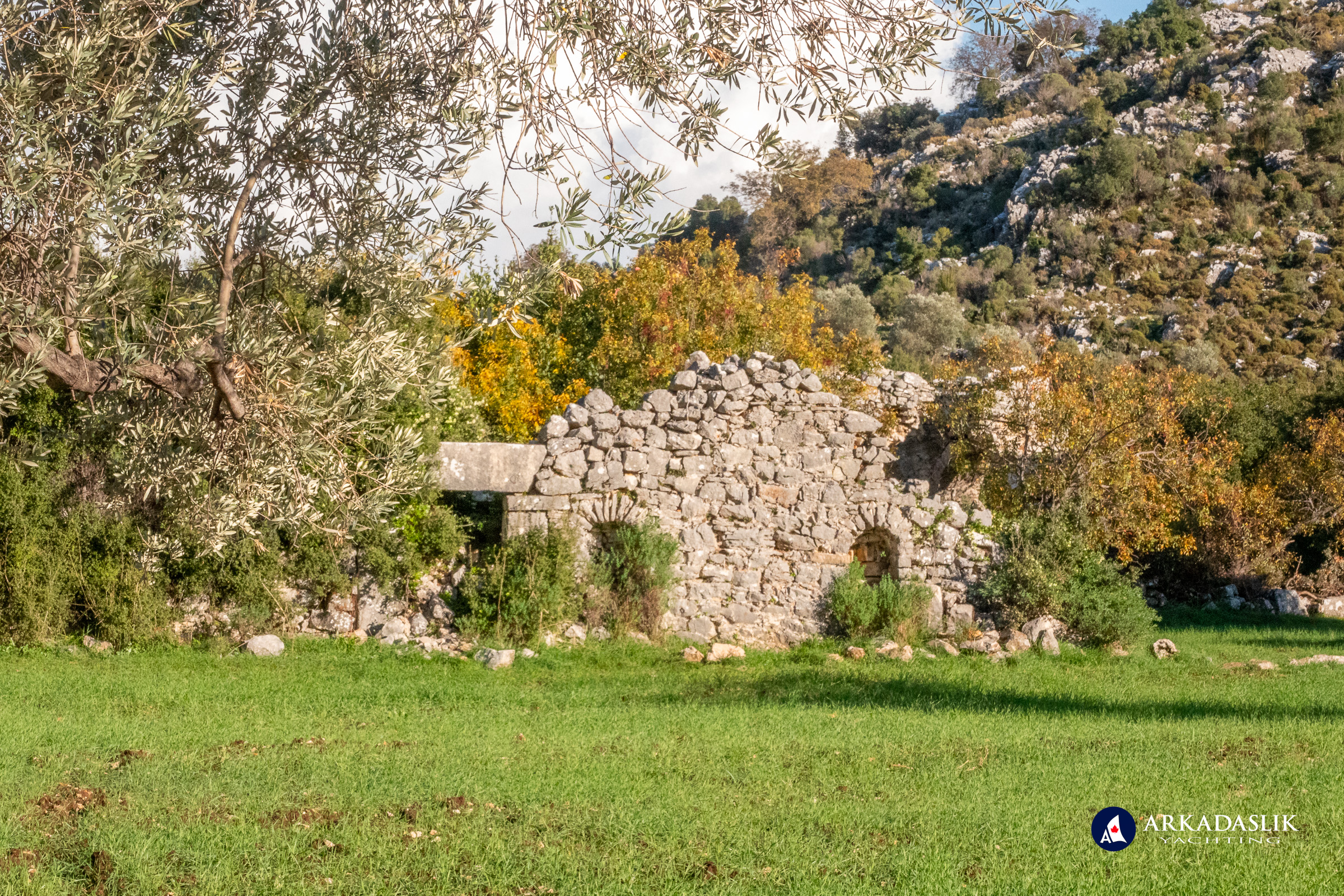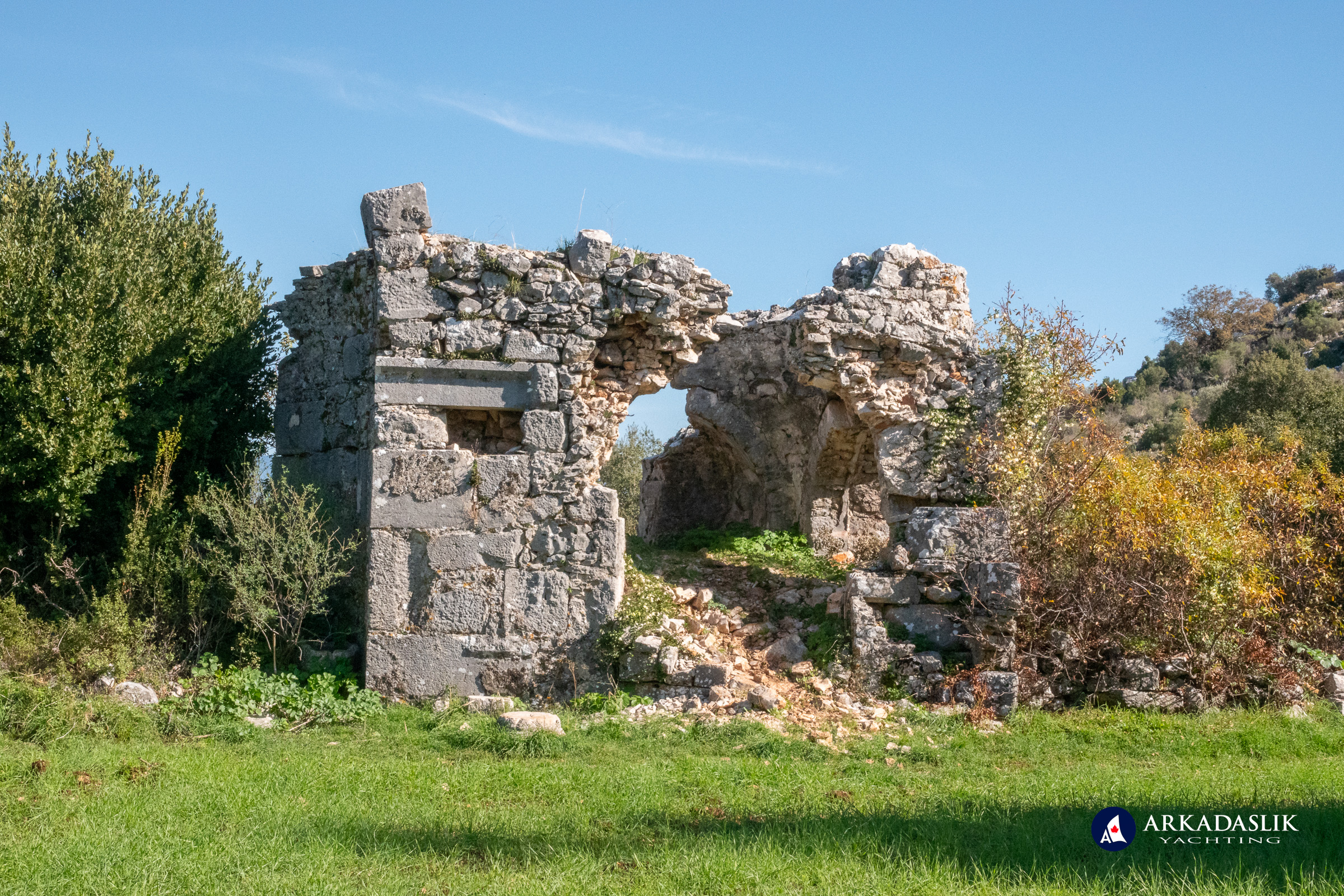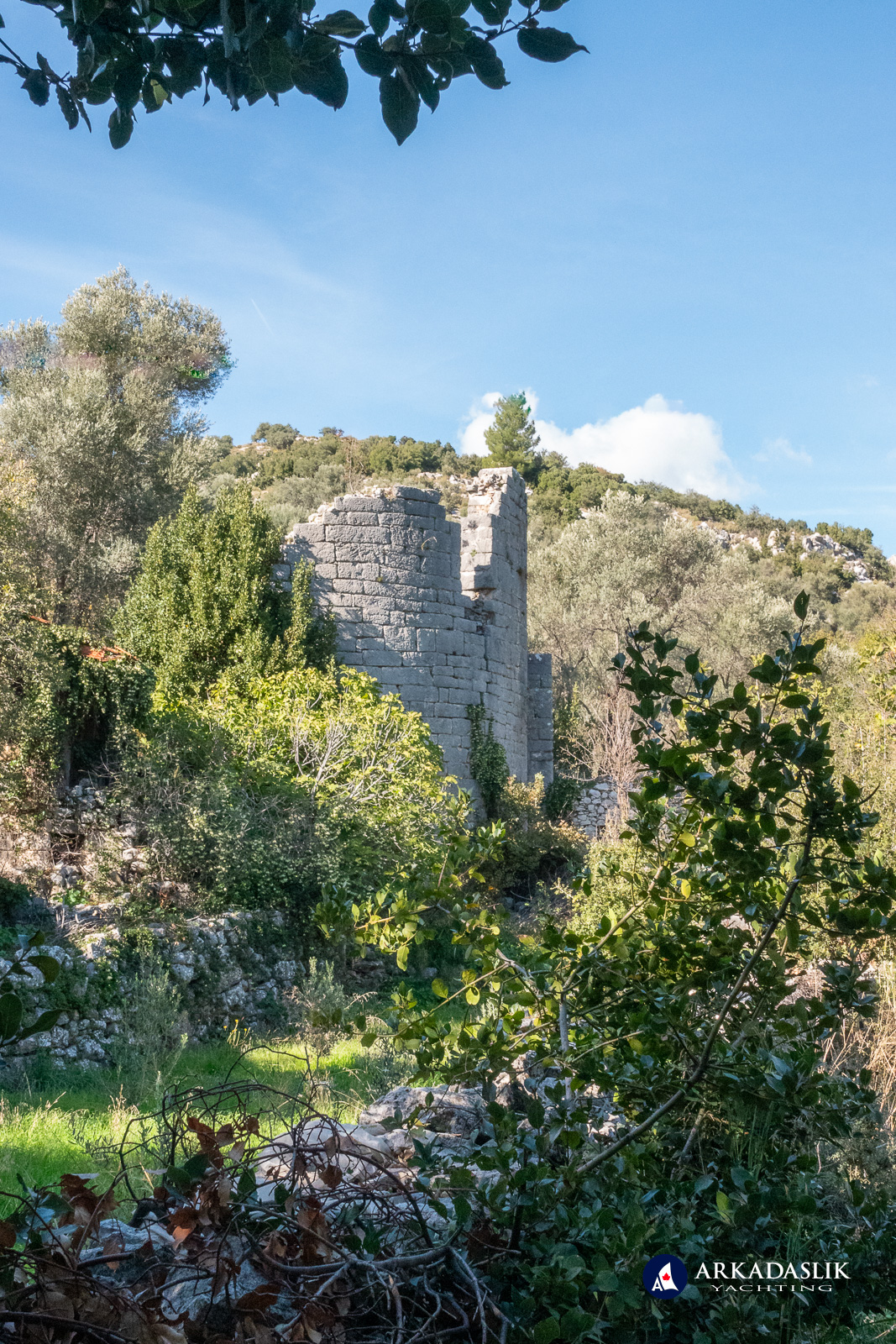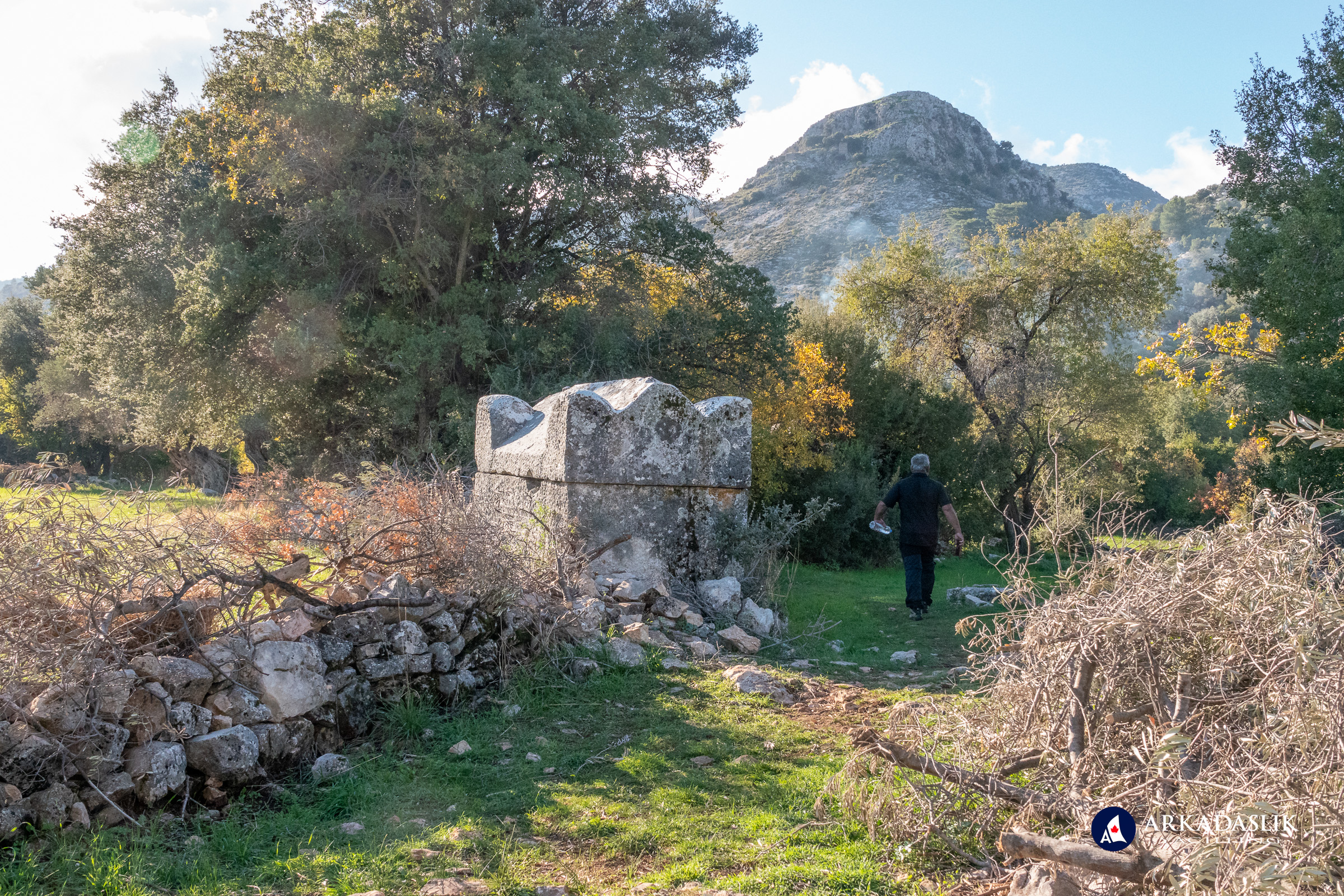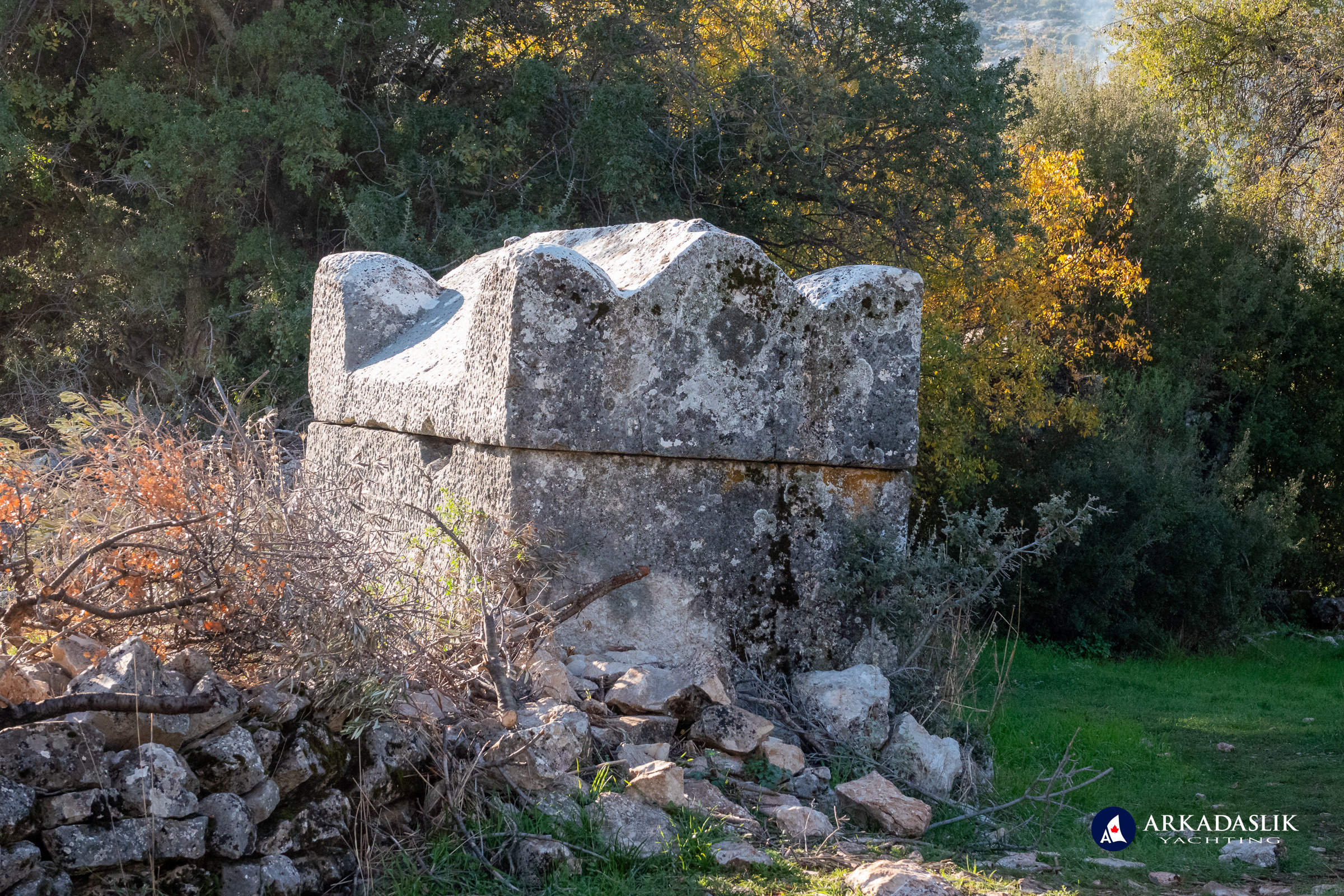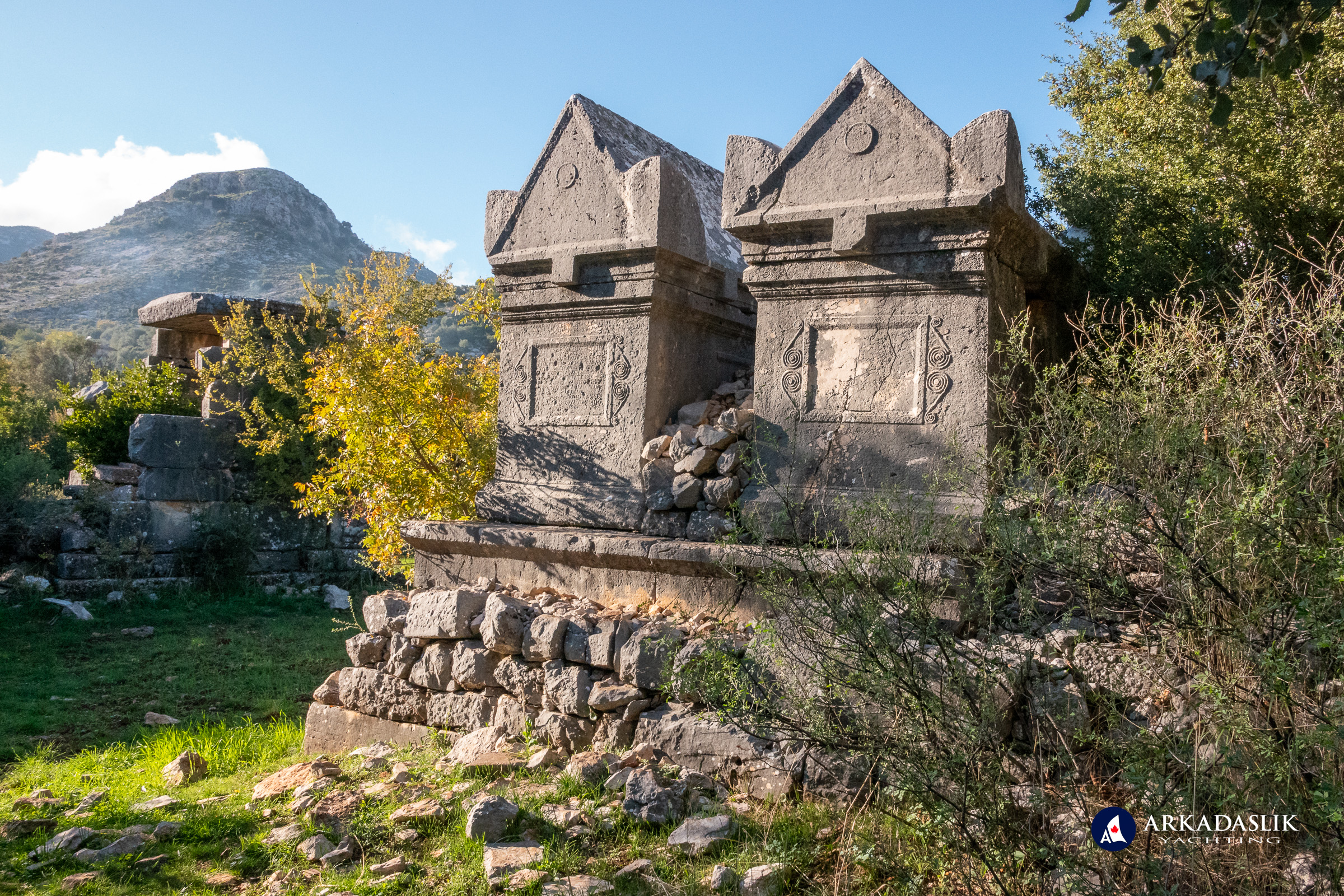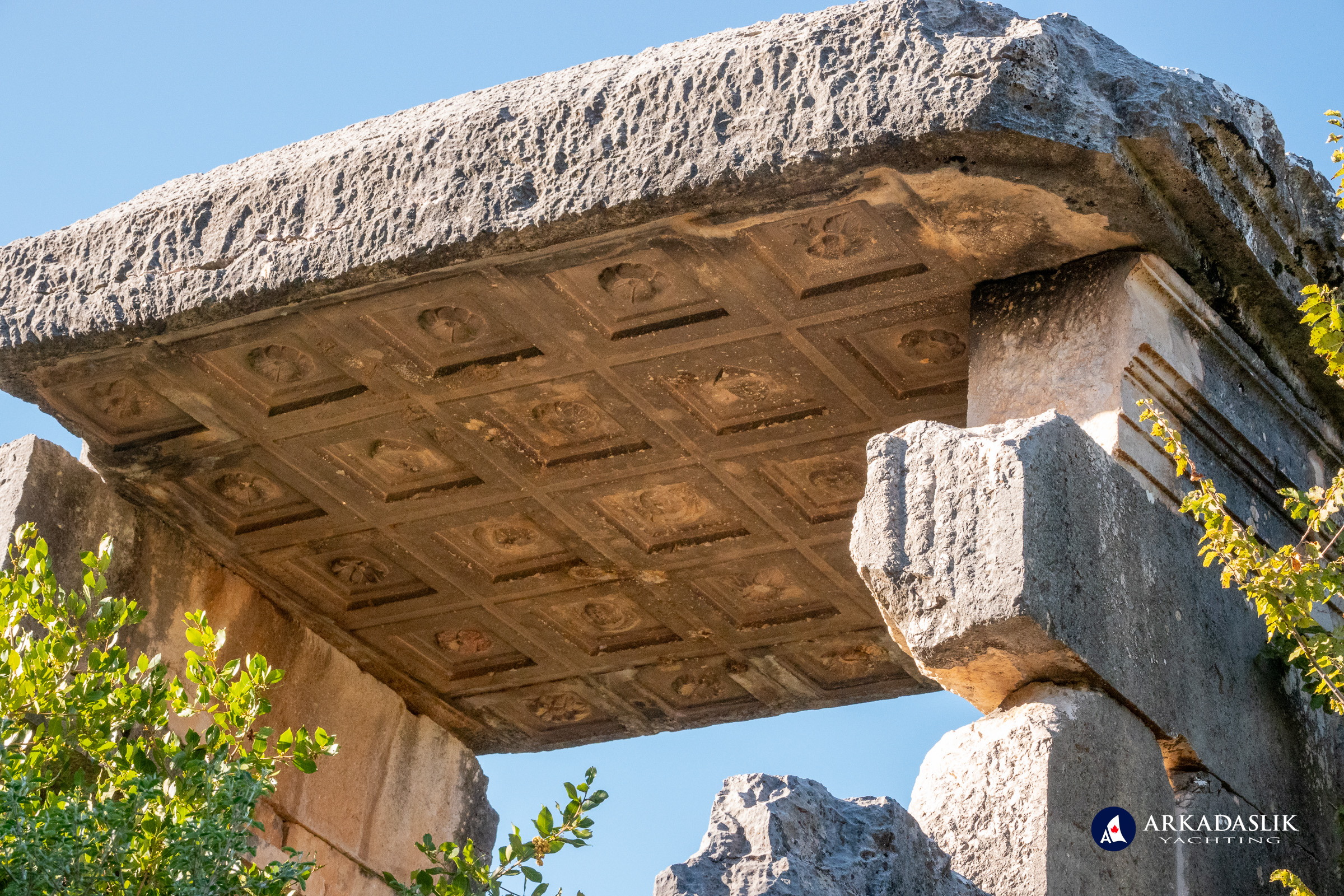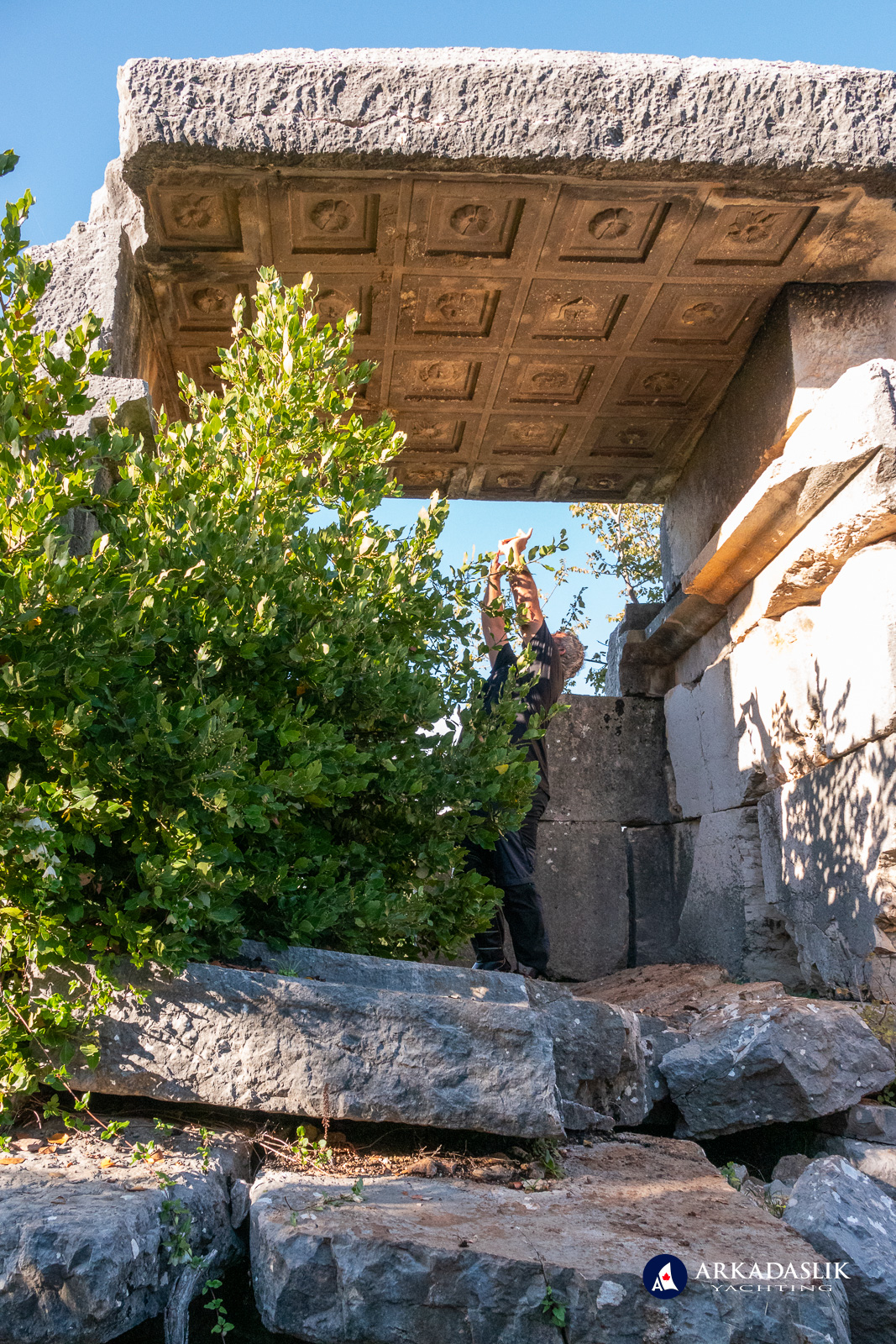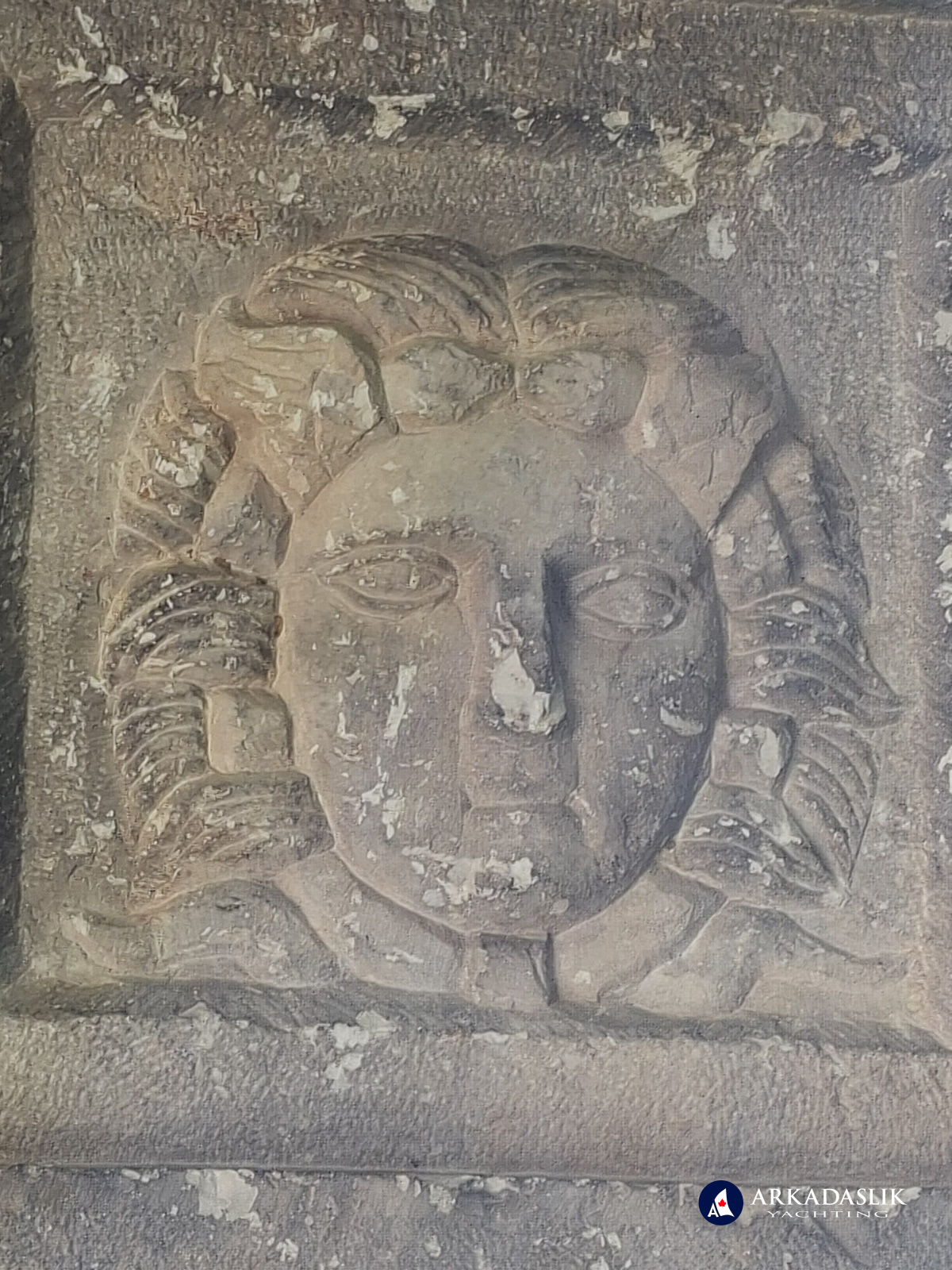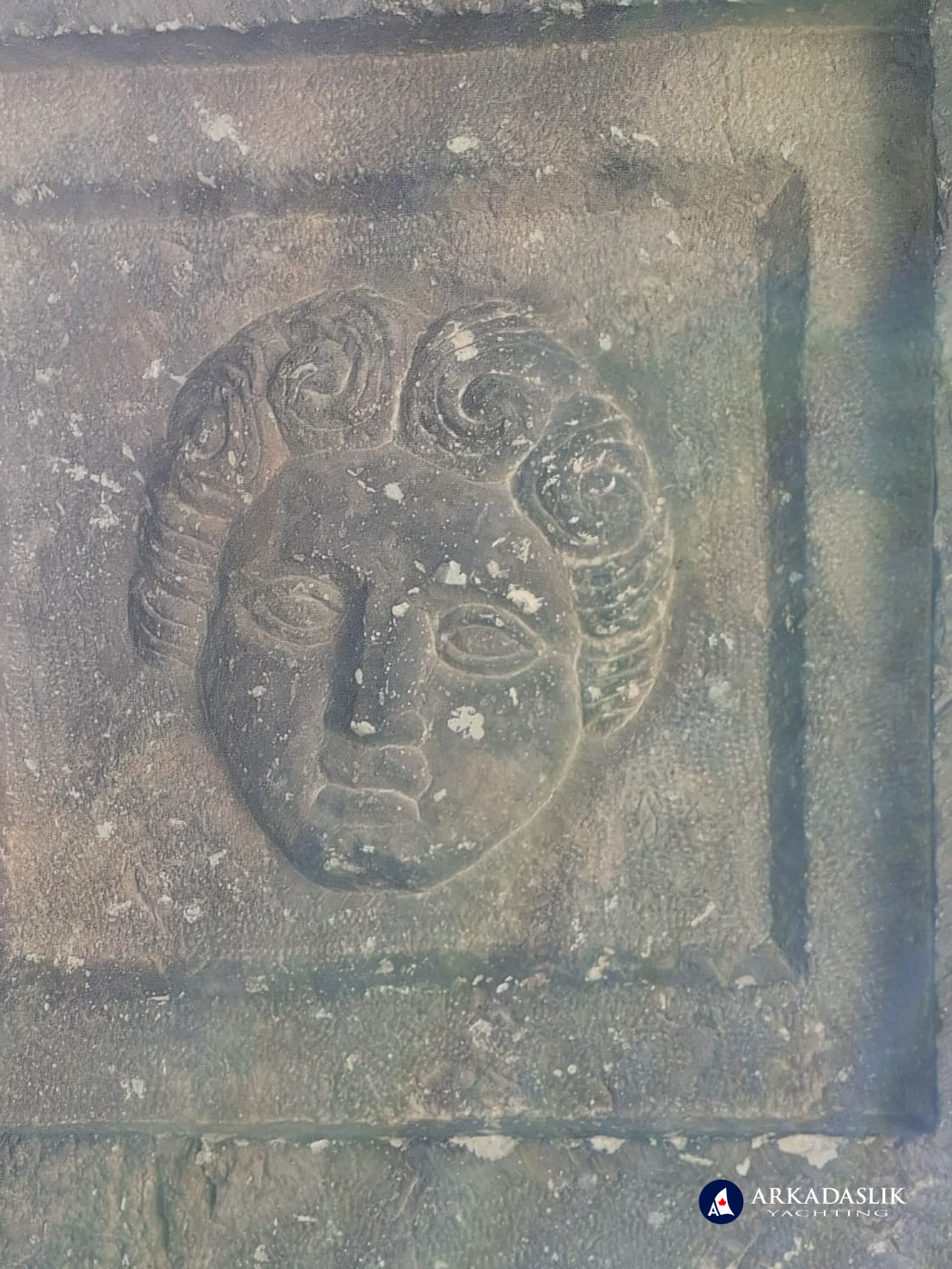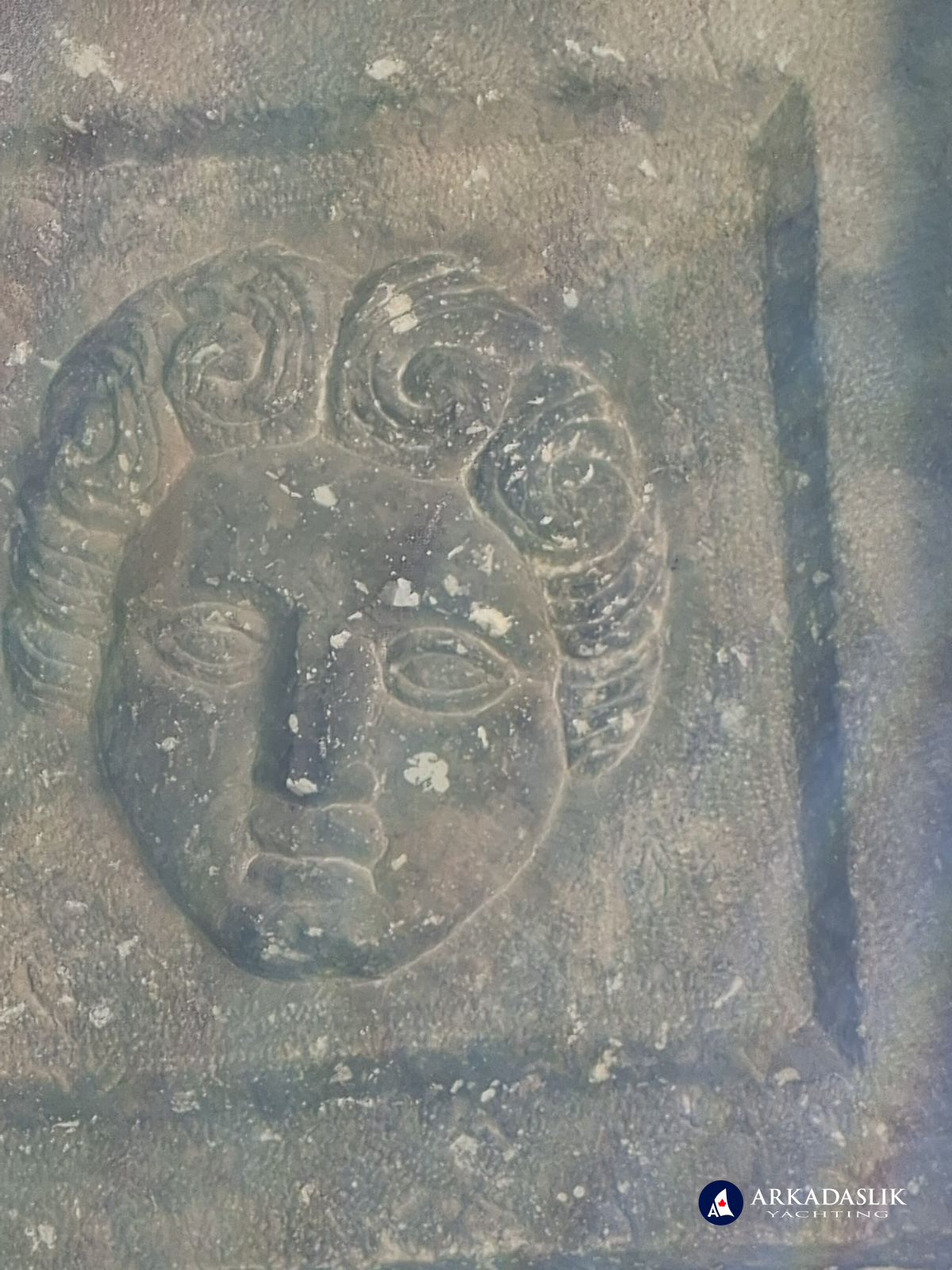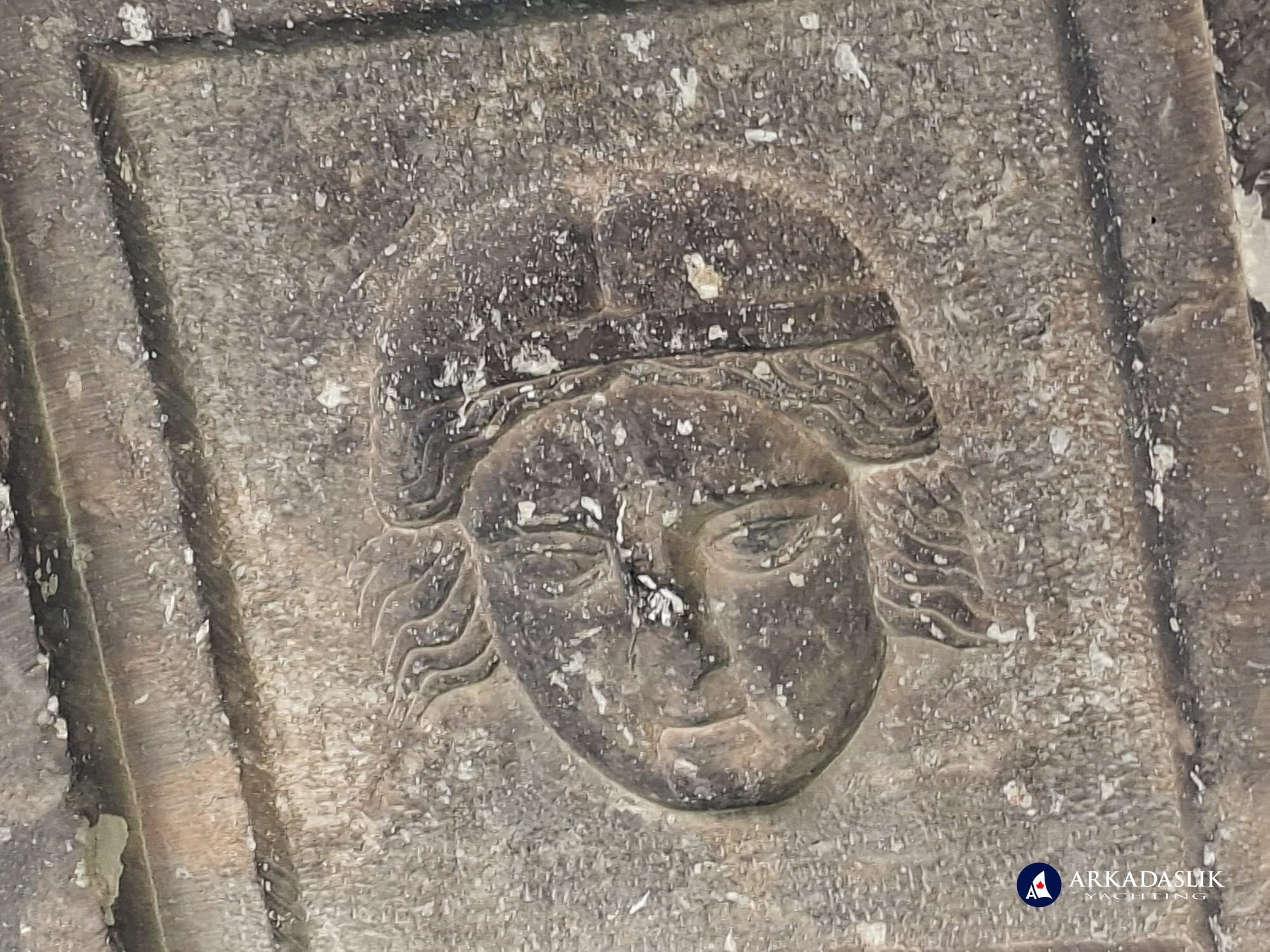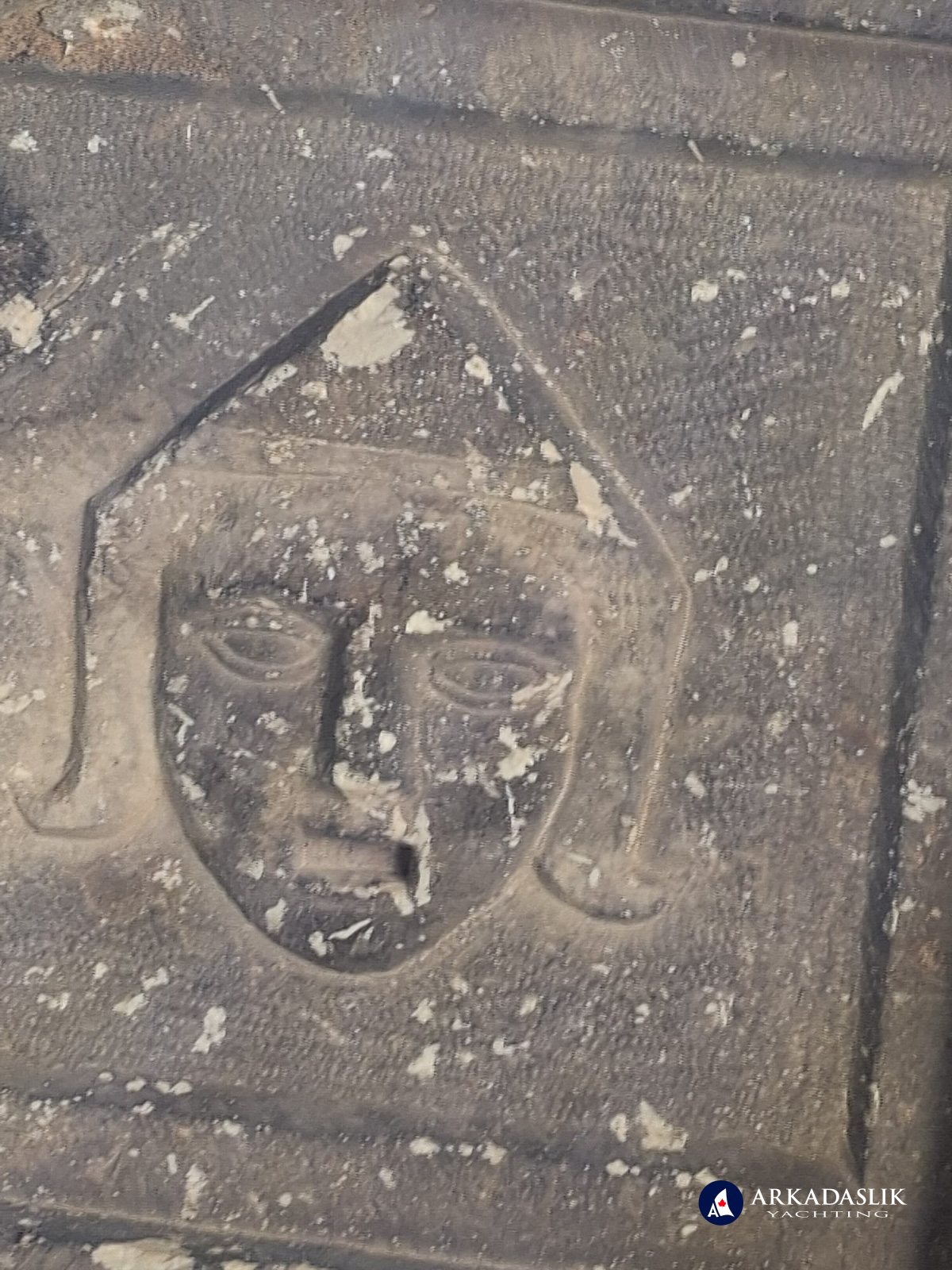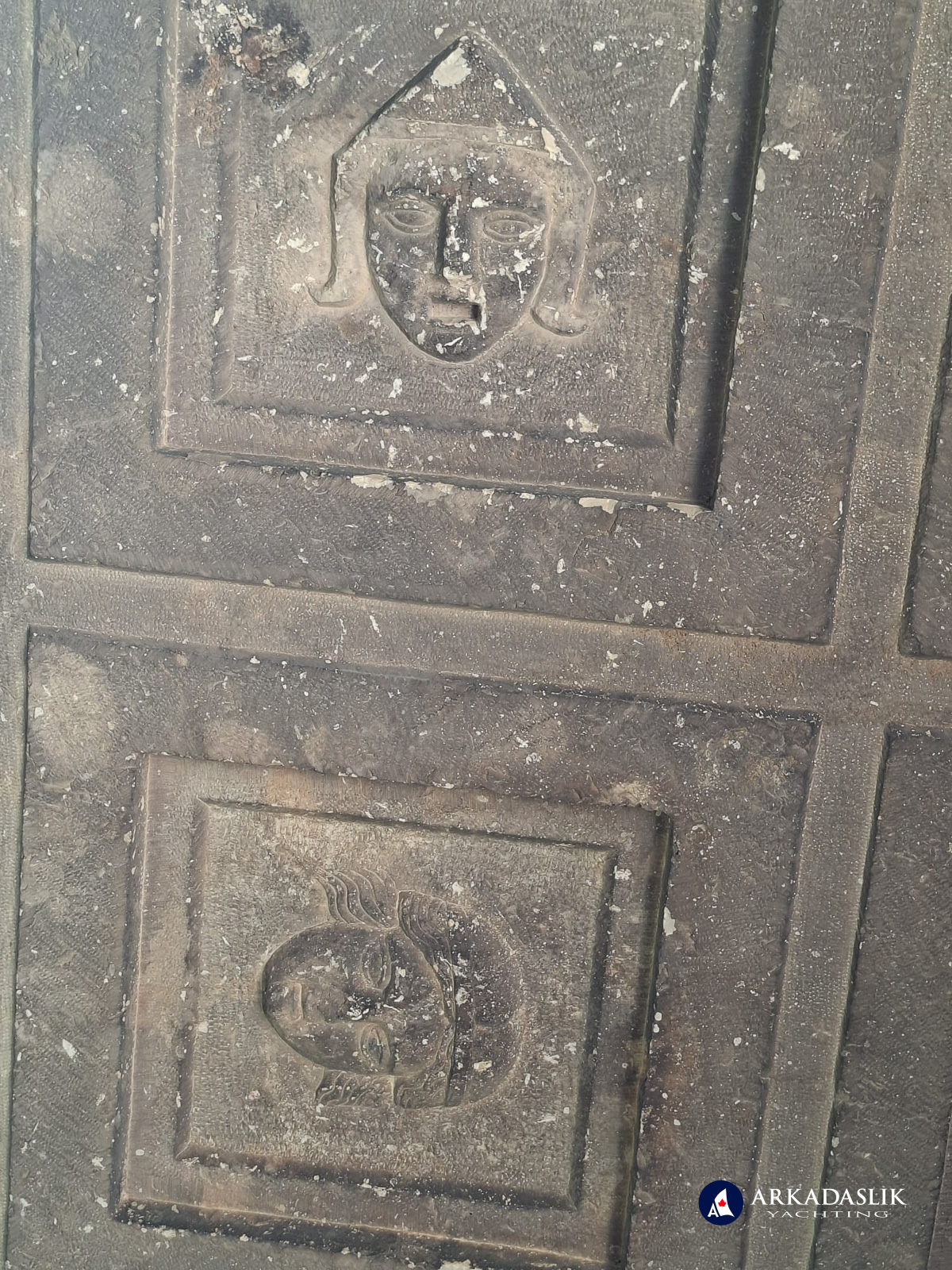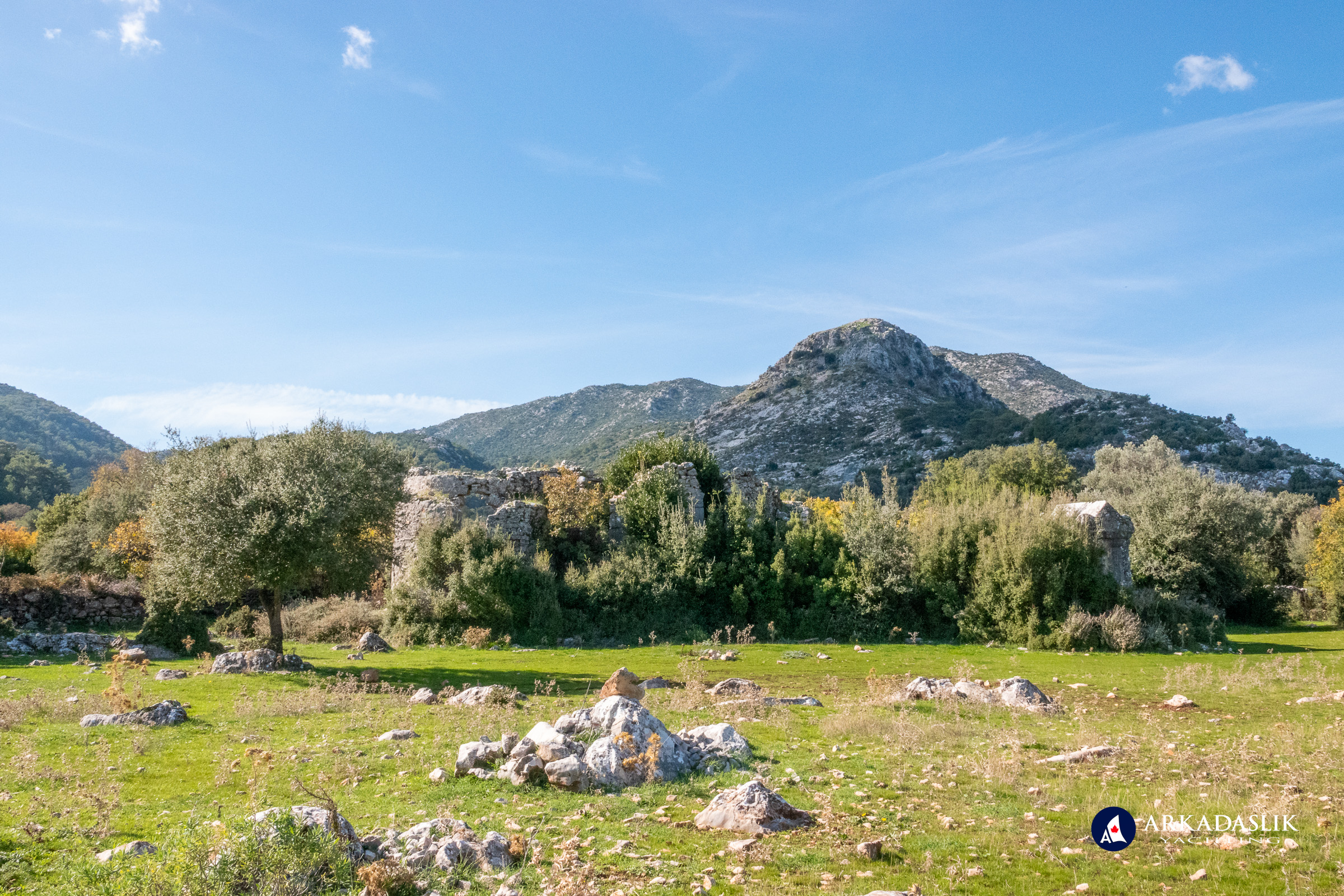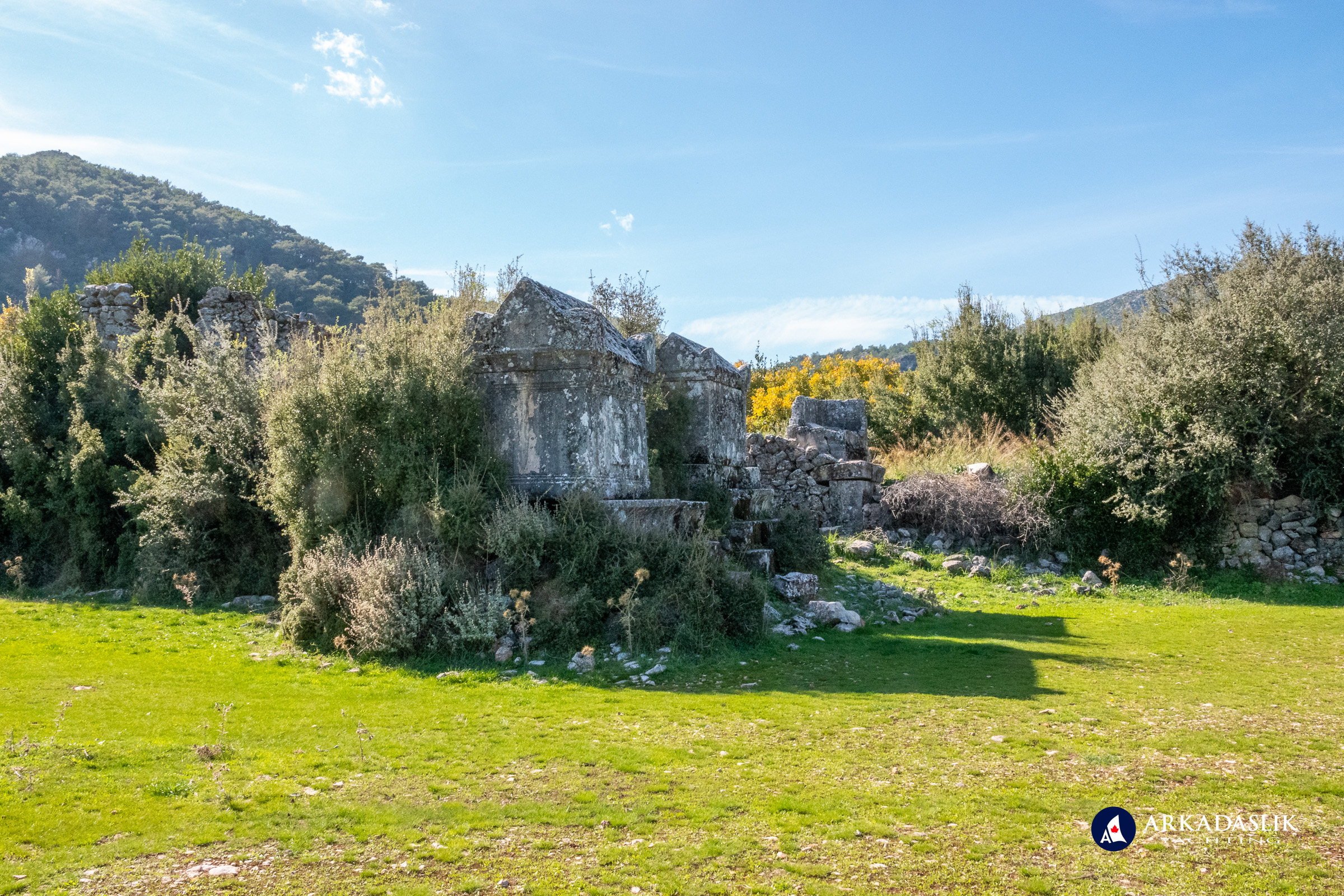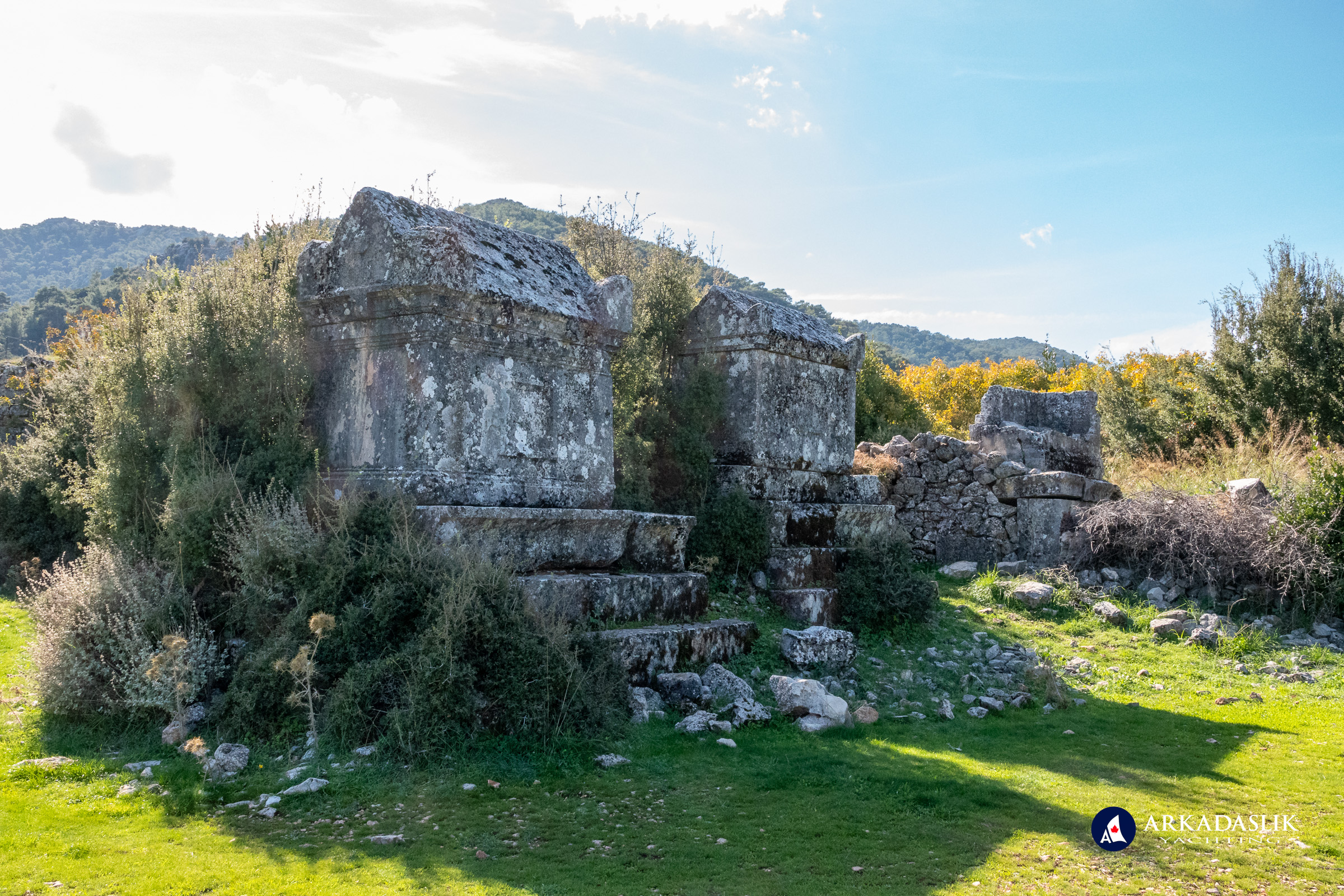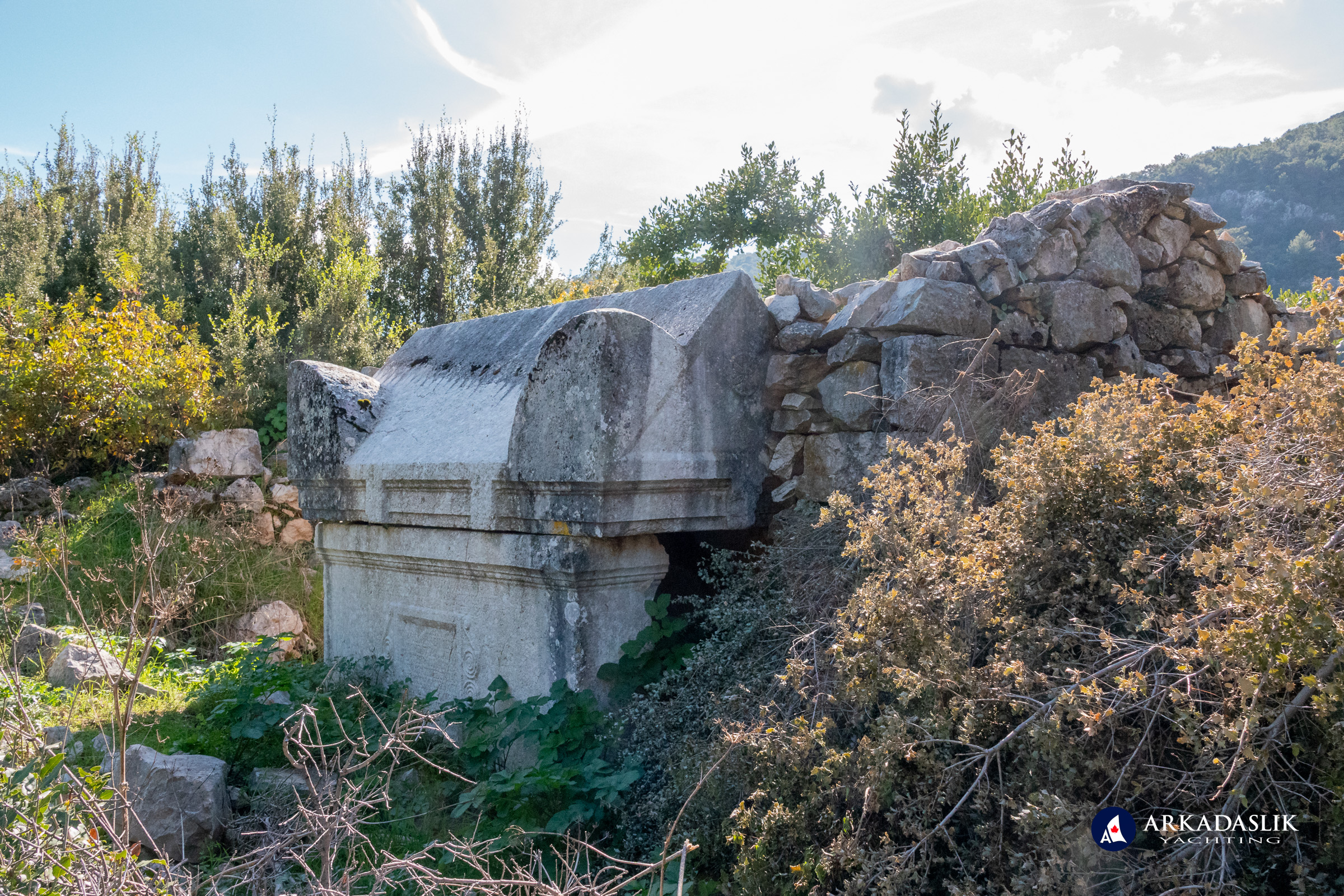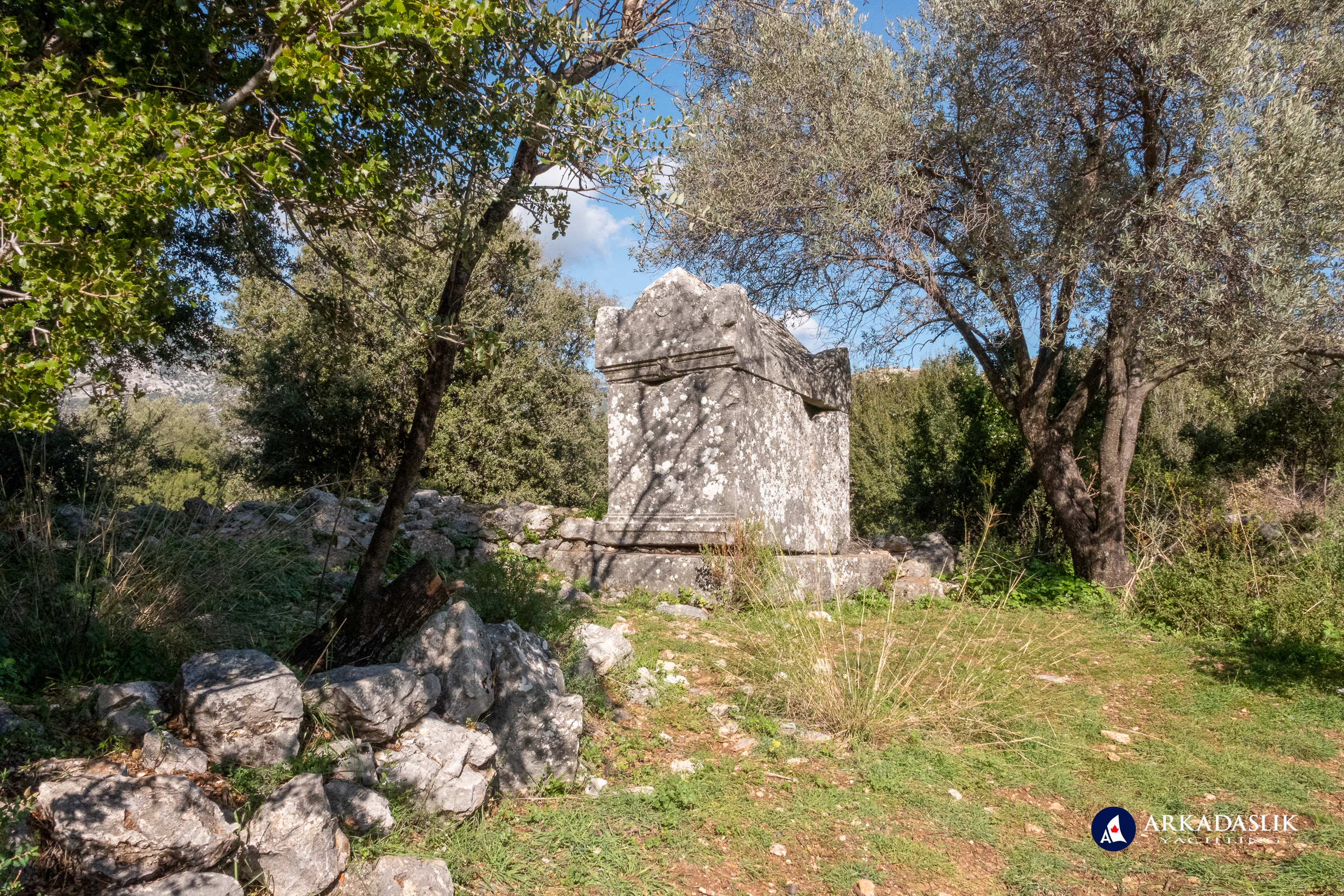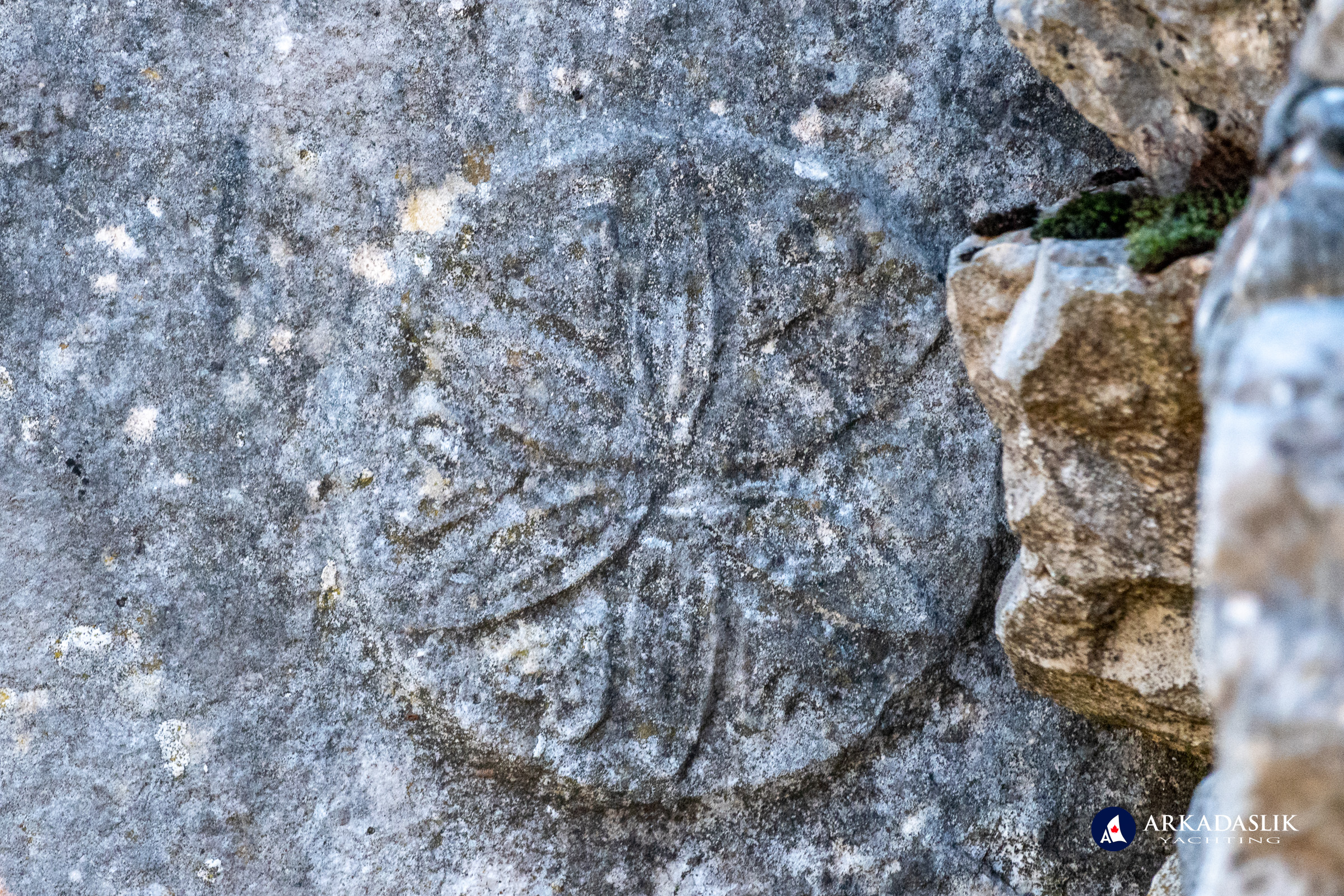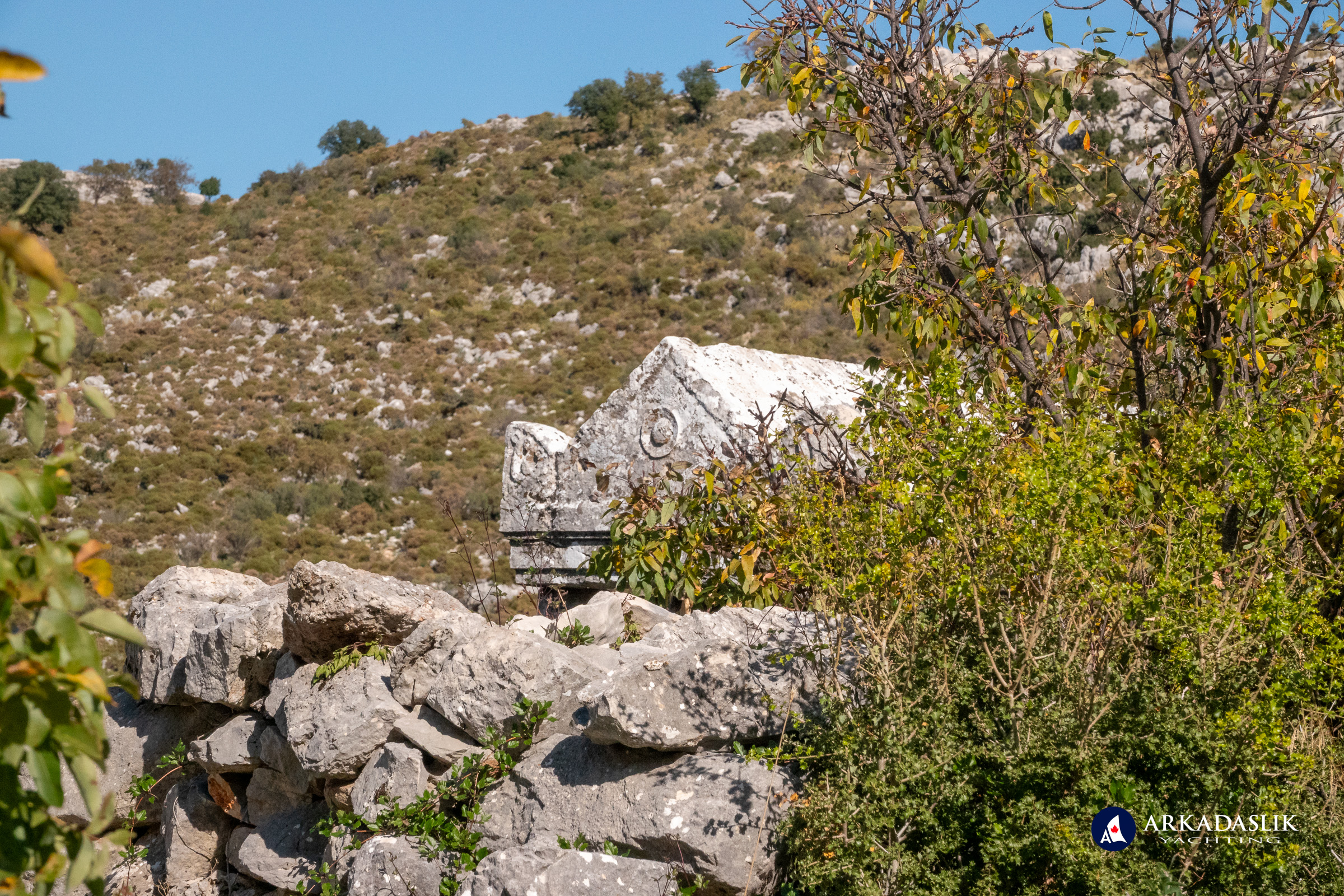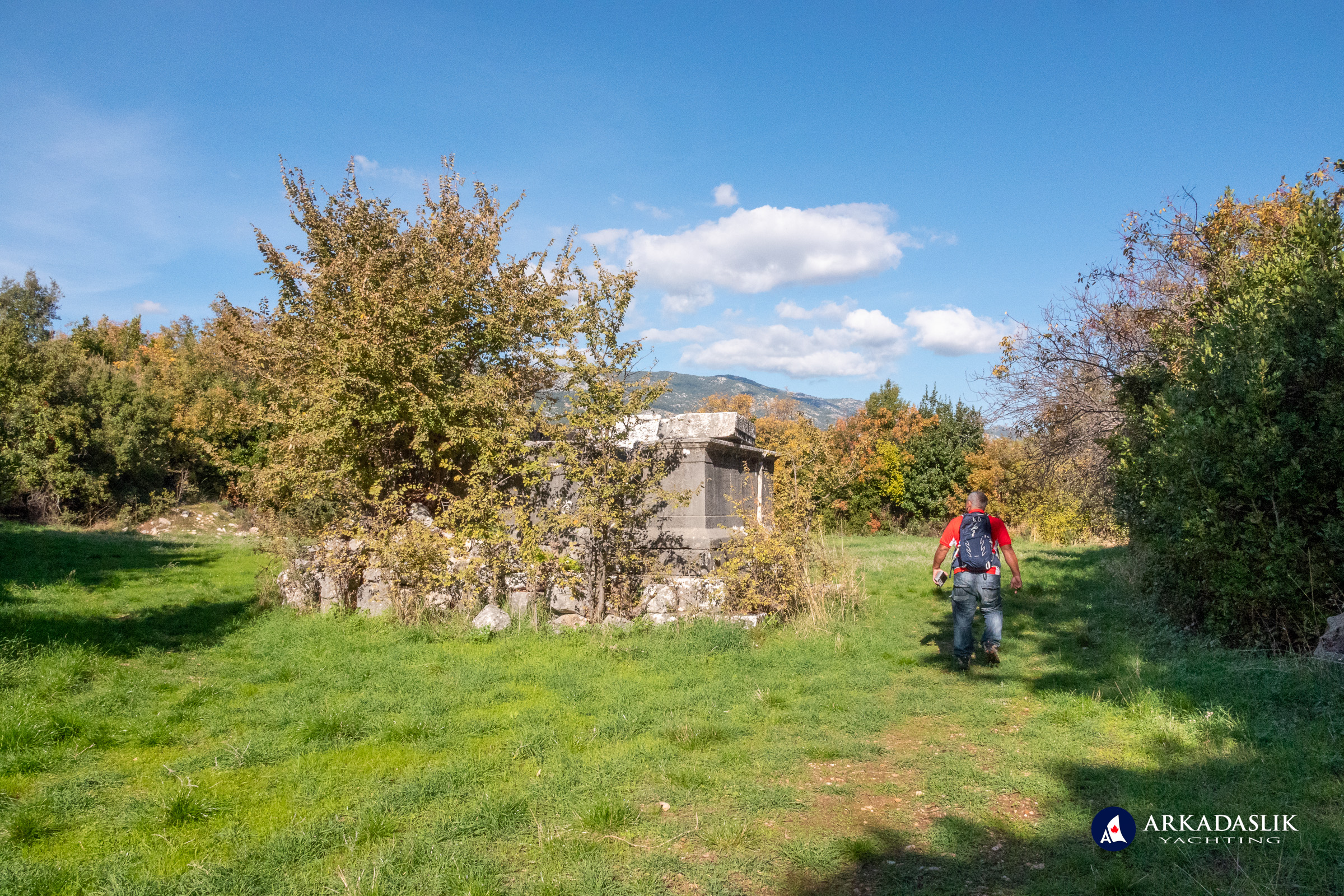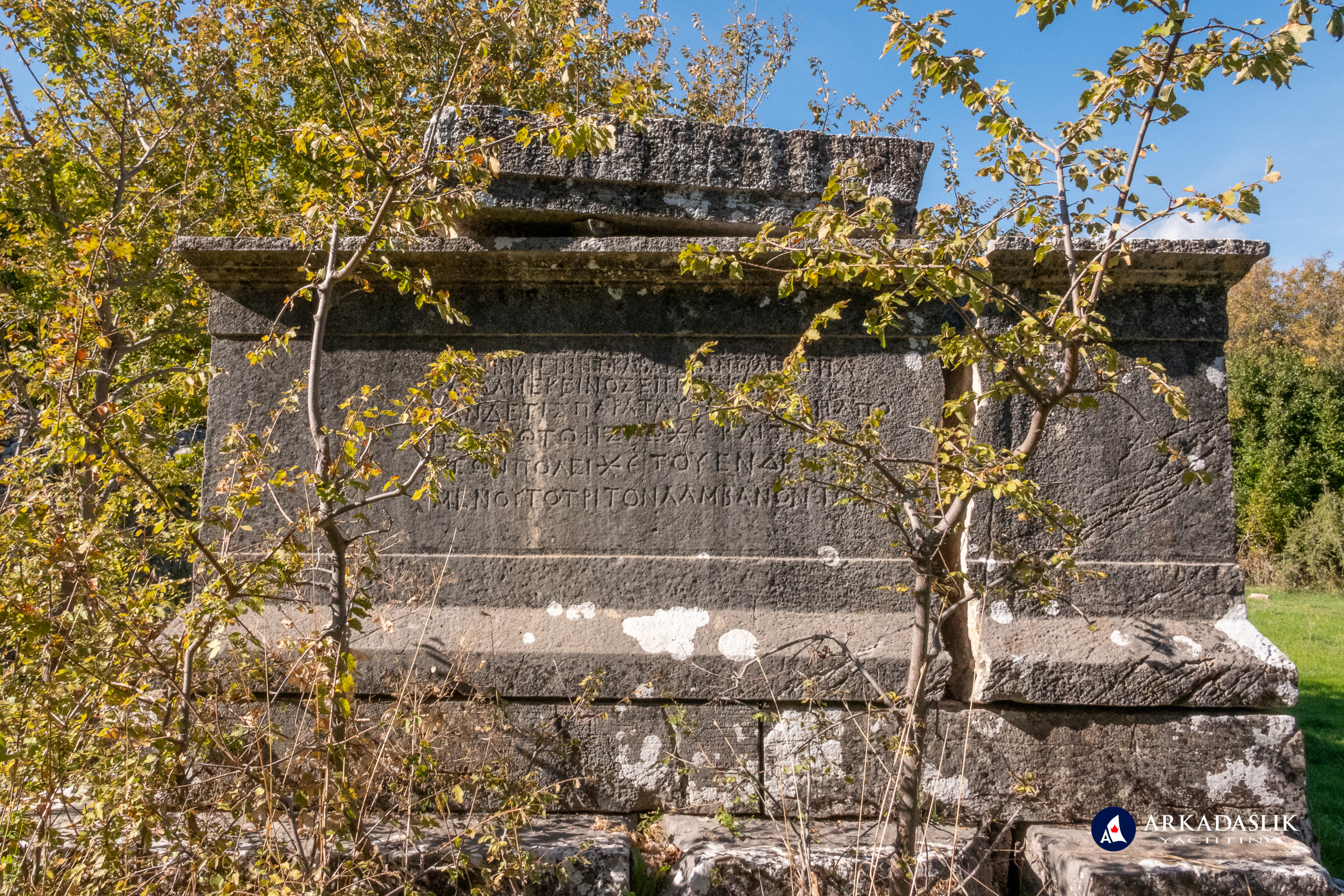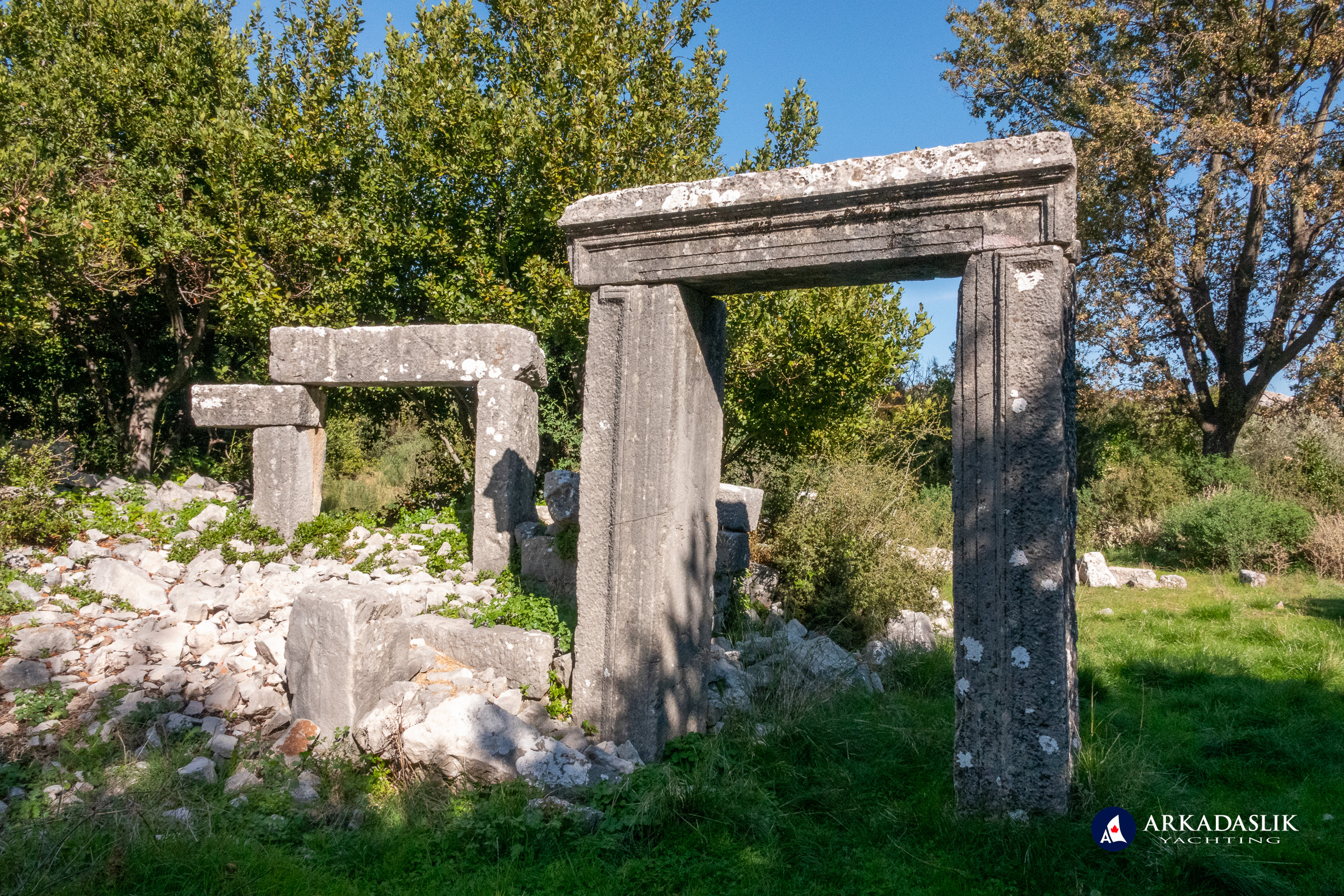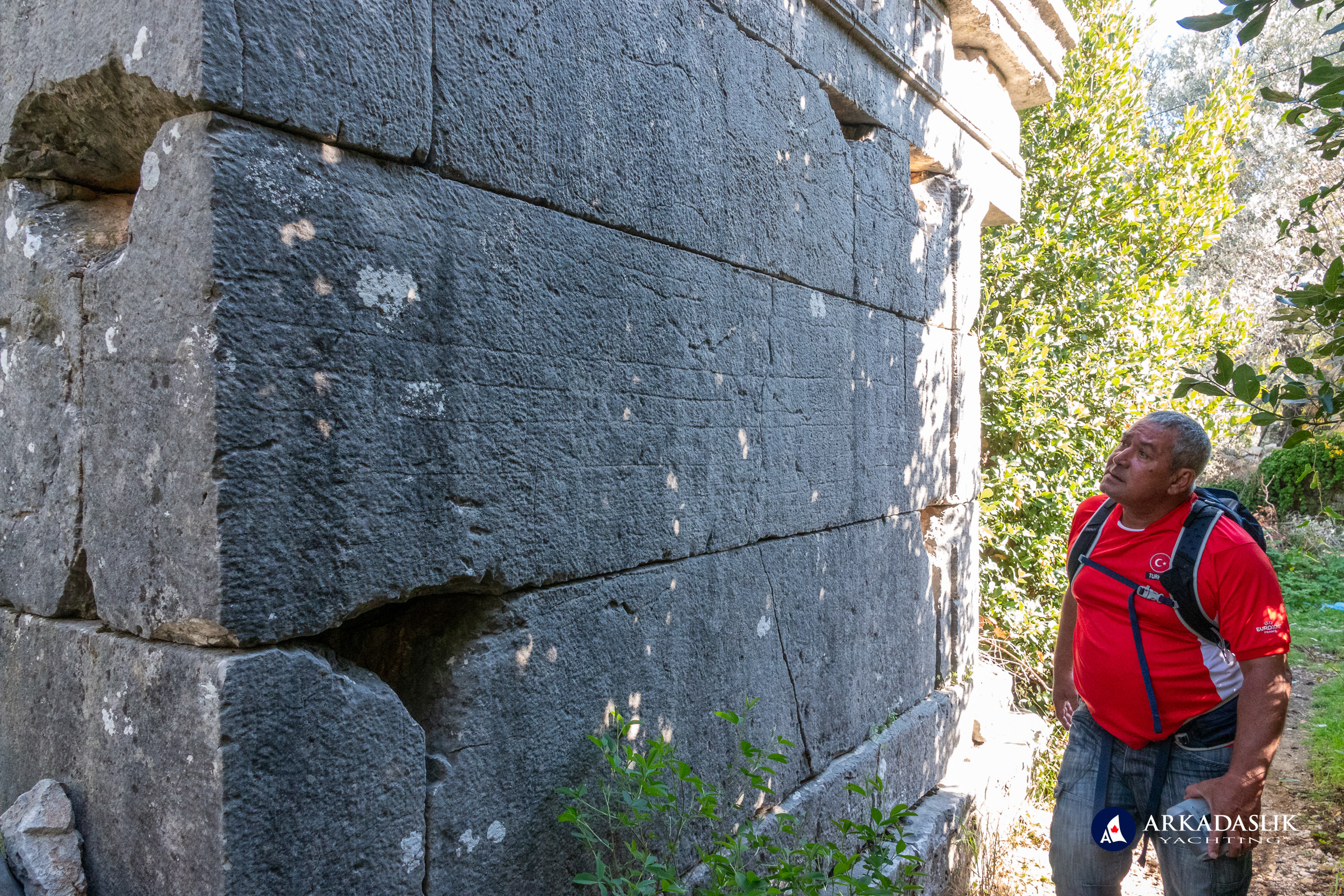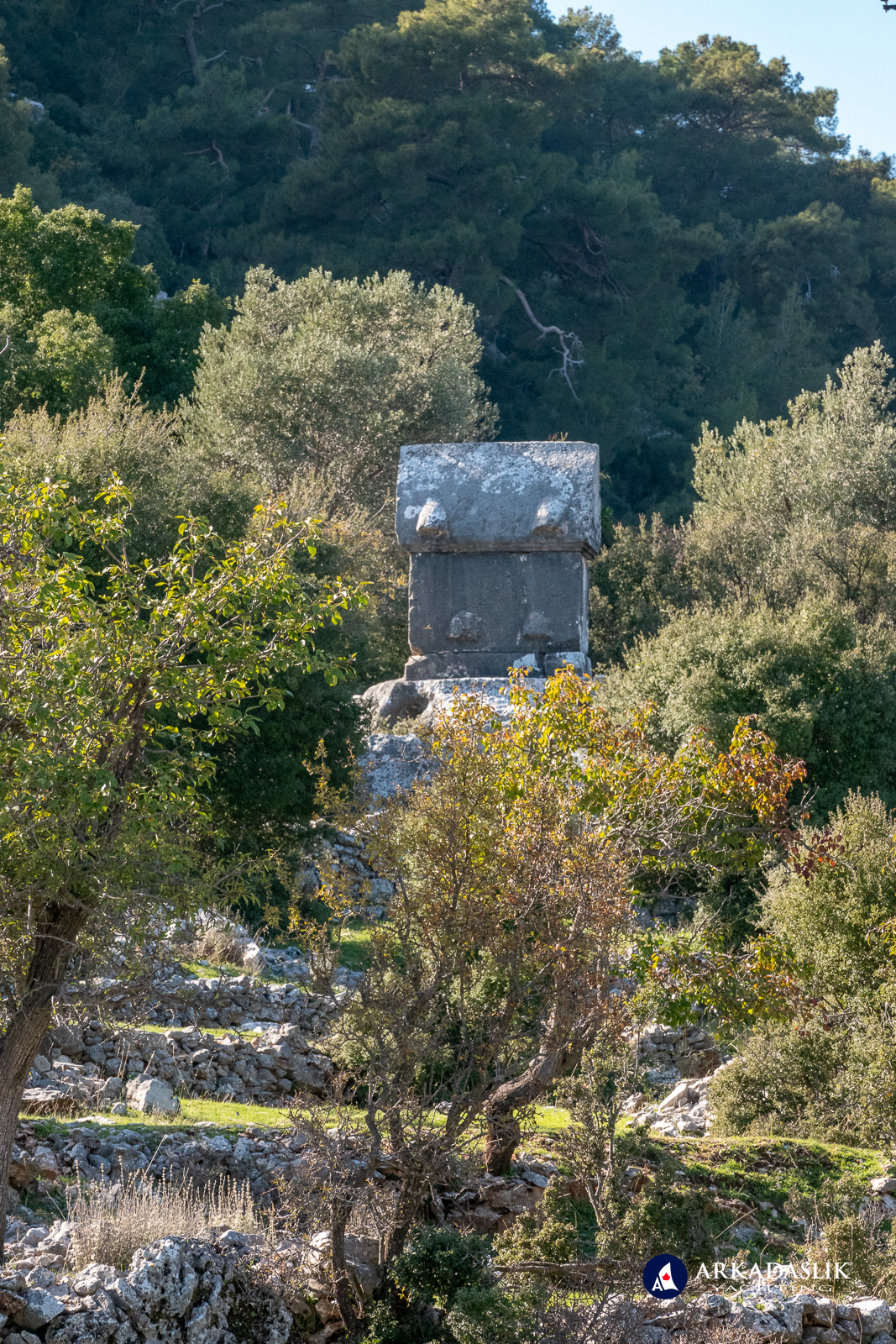Introduction: Why Sidyma Captures Attention
Ancient Sidyma (Sidyma Antique City) occupies a broad plateau high on the southern slope of Mount Cragus, surrounded by olive groves, stone terraces, and the quiet rhythm of village life. For travellers seeking historic sites near Fethiye that still feel authentic, Sidyma offers a rare experience. The ancient city and the contemporary village of Dodurga occupy the same ground. You walk from a farmyard into a necropolis, from an olive grove into a basilica foundation, from a footpath into a field of monumental tombs. The site remains unexcavated, which keeps the landscape open, understated, and intact.
We’ve been fortunate to visit Sidyma three times: once after a heavy rain in February 2022 and, more recently, twice on clear days in November 2025. Each visit revealed a different aspect of the ancient city and the village that lives with it. The combination of history, rural life, and open access intrigues us, so we are planning to return again, perhaps as part of a multi-day hike via the inland Lycian Trail.
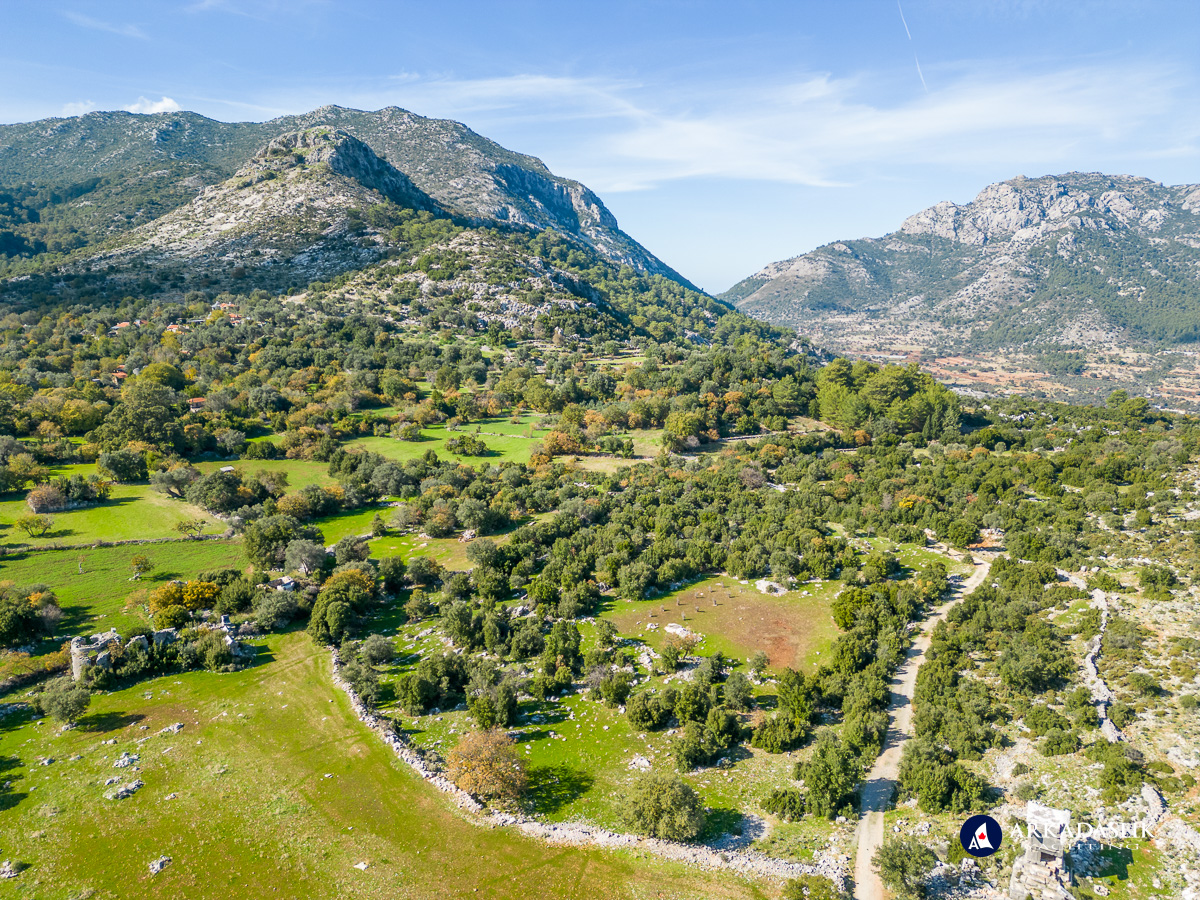
Our Three Visits
Our February 2022 visit gave us a first impression of Sidyma’s scale, but recent rains limited what we could reach. The lower terraces were flooded, and water pooled around sarcophagi and stone blocks. Despite its waterlogged state, the site was quiet and inviting, displaying the variety of tombs and density of ancient remains built into daily life.
The weather for our November 2025 visits was much nicer. Dry ground allowed us to explore freely, although we had to be careful to navigate around the crops growing in the pastures. We climbed the acropolis, located the Sebasteion, identified early church foundations, examined the cassette-ceiling tomb, and walked the full spread of the necropolis. The site was so appealing that we visited a second time a few days later, bringing upgraded camera gear and a picnic lunch.

We spent considerable time exploring the site during each of our visits. The combination of open views, scattered ruins, and quiet surroundings makes it an ideal place to linger and observe how the ancient settlement relates to the landscape. When uncertain about where to walk, we simply asked villagers. Their guidance led us to several features we might otherwise have missed.
The Approach to Sidyma
The drive from Fethiye is pleasant, climbing through small villages and terraced farmland. The final approach to Sidyma is steep and narrow, especially on a motorbike, but manageable with care. Once you reach Dodurga, ancient features begin to appear without even leaving the road: sarcophagi beside houses, tombs near gardens, inscriptions reused in modern walls.
Signs marked “Antik Kent” guide you toward an informal parking area near the mosque, although there is virtually no traffic in the village, so you can leave your vehicle almost anywhere.

Understanding the Layout of Ancient Sidyma
Sidyma spans three main zones:
- The Acropolis
- The Civic Plain
- The Necropolis
Because the ancient city has never been excavated, much of this layout must be reconstructed through landscape reading and academic research. Modern Dodurga covers parts of the civic core, and centuries of agricultural activity have softened architectural outlines. For visitors, this means discoveries happen accidentally, often after leaving a footpath or rounding a terrace.
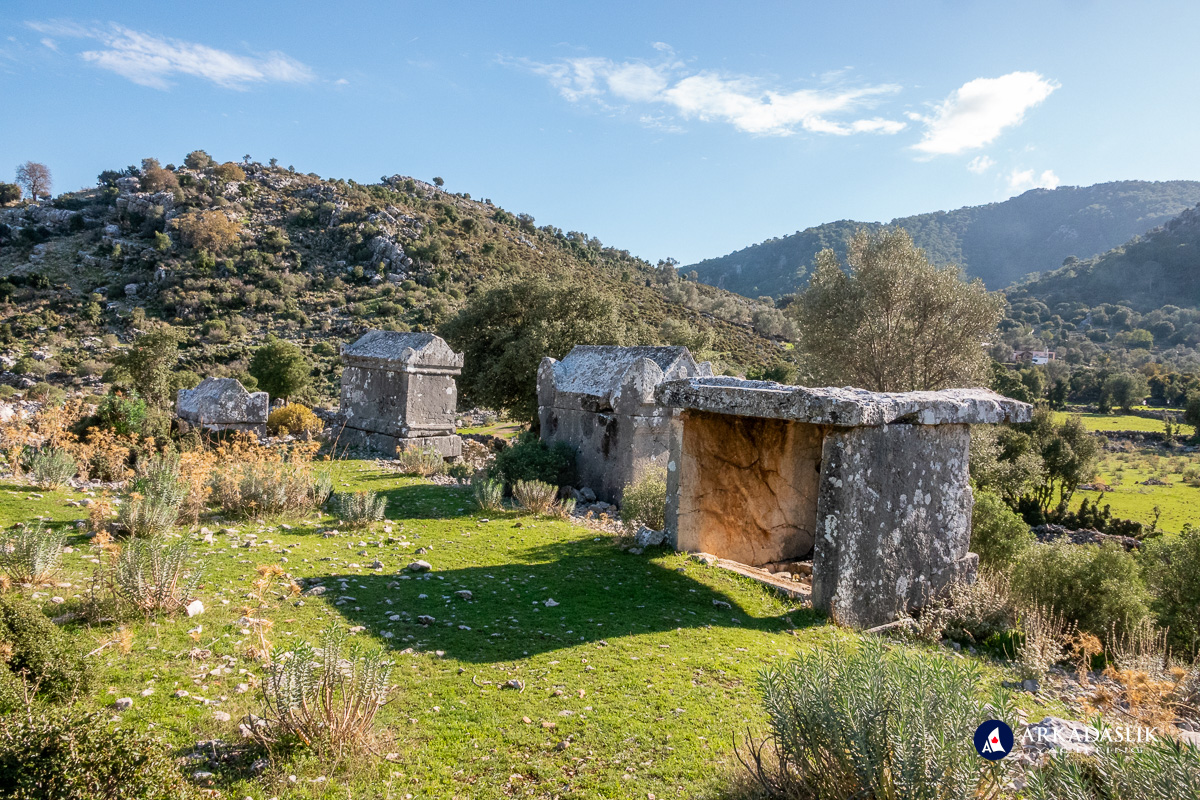
How to Navigate Sidyma Without Signs
Sidyma is easy to explore if you simply let yourself wander. Paths are unmarked, but the distances are short and the ruins are spread across terraces rather than hidden deep in vegetation. Foundations of large buildings appear, although they are subtle. Tombs and temple-style structures are more obvious. This lack of infrastructure may be a drawback for some visitors, but for travellers who enjoy exploratory travel, it adds to Sidyma’s appeal.
Highlights of Sidyma Antique City
The Acropolis
The acropolis rises above the northern edge of the plateau and contains the city’s earliest fortifications, built in the Dynastic and Hellenistic periods. The ascent is short and manageable, with impressive views across the valley. Parts of the ancient defensive wall remain visible. The stonework is weathered, but surviving sections of wall, building foundations, and stones likely associated with a watchtower can still be seen. From the top, you see the necropolis spreading across the terraces and understand Sidyma’s strategic position.
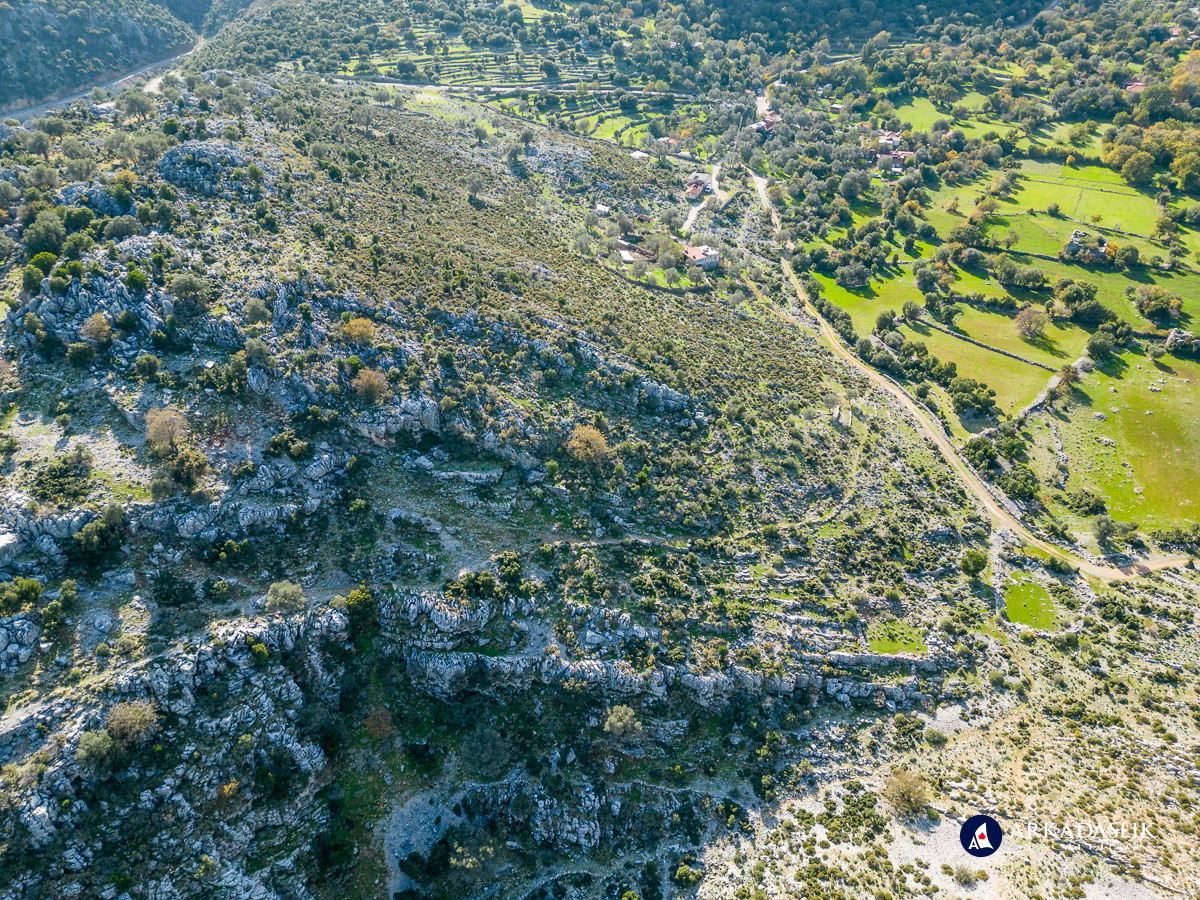
The Necropolis
The funerary monuments are Sidyma’s most impressive and best-preserved features, with nearly a hundred tomb structures scattered across the agricultural landscape. These tombs, dating back to the 5th century BCE, demonstrate an extraordinary variety of styles that reflect centuries of cultural fusion and elite expression.
Tombs appear everywhere: beside footpaths, among trees, at field edges, and near village lanes. Unlike many Lycian sites where sarcophagi cluster along steep hillsides, Sidyma’s funerary landscape spreads across level ground, making the monuments easy to see from multiple angles.
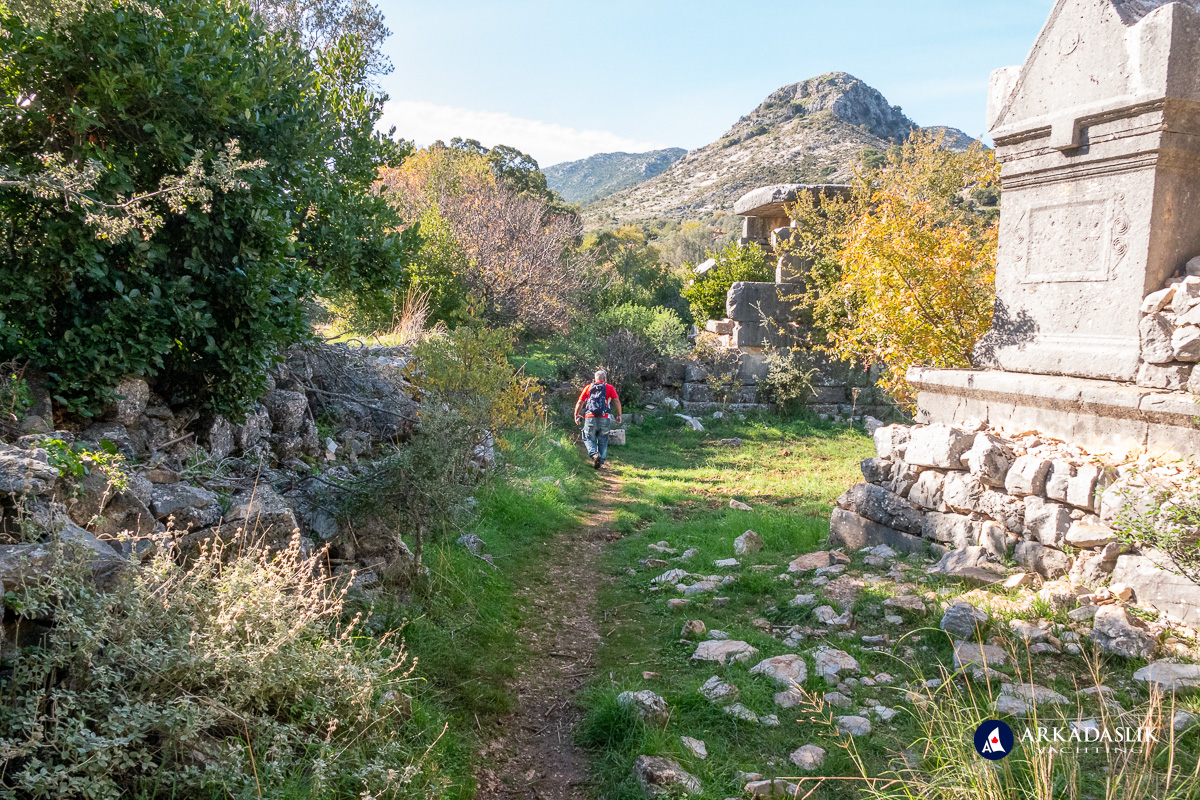
The Cassette-Ceiling Tomb
One of Sidyma’s most remarkable monuments is the cassette-ceiling tomb, named for the carved ceiling panels that interlock to form a single massive stone lid. The eight carved faces within the ceiling coffers are unusual in Lycia and suggest a family of considerable local standing.
The artistry is refined for a rural settlement. The tomb stands on an elevated platform in a quiet part of the plateau, surrounded by trees, other tombs, and a few ruined buildings. The interior is well preserved, and stepping inside feels like entering a private space that has remained intact while the world around it changed.
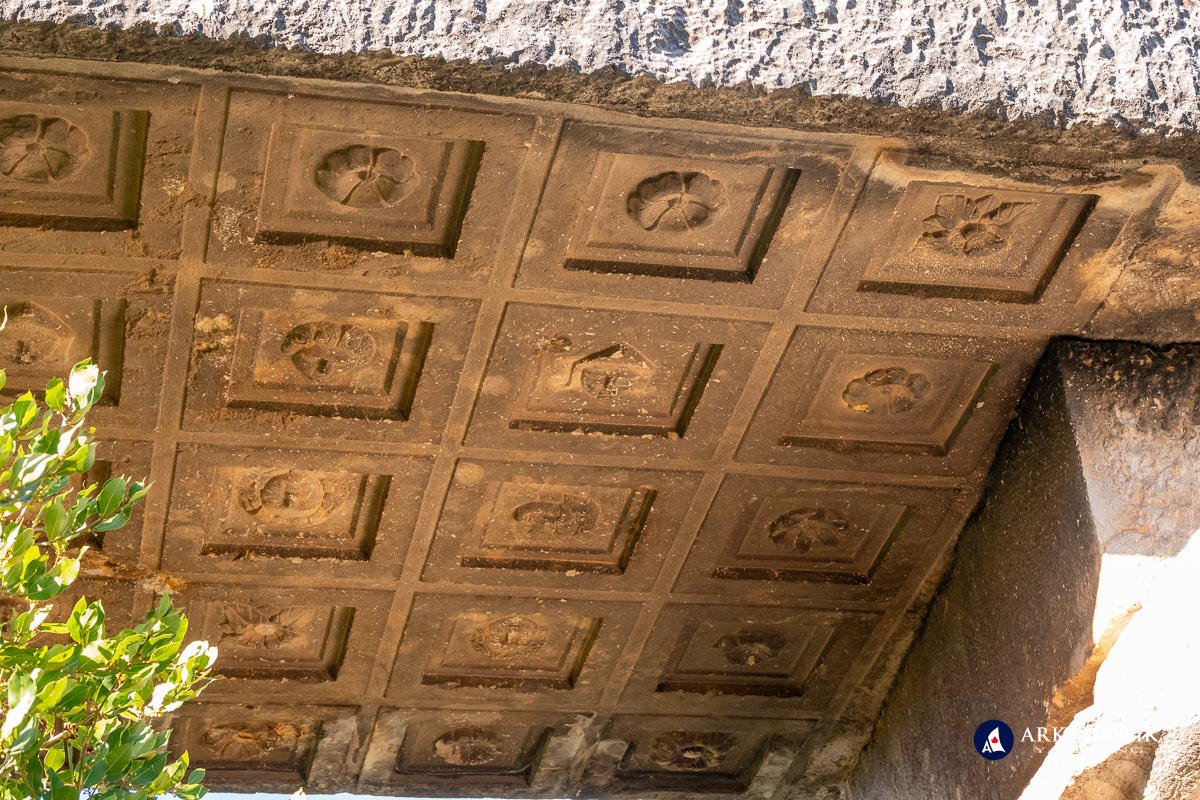
The Tomb of Flavia Nanne
Sidyma’s best-known temple tomb, built for Flavia Nanne, a priestess of the Imperial Cult, was pointed out to us by a local resident. With several monumental tombs in close proximity and no signage, determining which structure it was proved difficult. Visitors with time and interest may wish to explore more thoroughly or seek clearer guidance from locals. (As a reminder of our tendency to miss obvious features, we once completely overlooked the famed sundial at Knidos.)
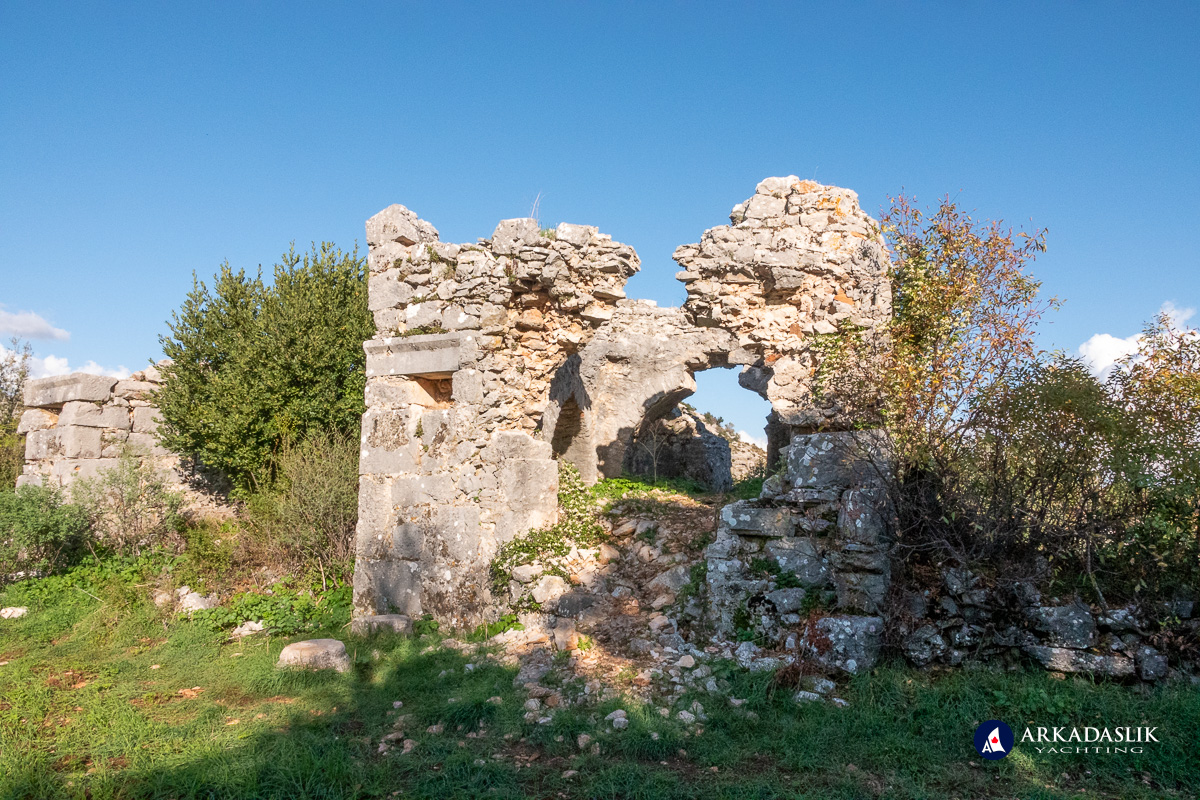
Heroons & Podium Sarcophagi
Near the cassette-ceiling tomb, a few freestanding structures appear that look like small buildings. These are heroons, monuments built to honour prominent individuals or families. Heroons blur the line between tomb and shrine and may have housed statues or dedicatory altars.
We also encountered several monumental podium sarcophagi, large stone chests set on stepped platforms. These are not heroons but high-status tombs typical of Roman Lycia. Their elevated platforms give them prominence even though centuries of weathering have softened their edges. These tombs were often built for extended families and served as both burial places and expressions of status.
Their placement suggests that this part of the plateau functioned as an elite necropolis, distinct from the more dispersed tombs further east.

Civic and Religious Structures
Most of Sidyma’s civic buildings stood on the level ground below the acropolis. The agora (marketplace), stoa (long covered walkway), gymnasium, baths, and theatre once formed Sidyma’s civic heart. Today these structures appear as low foundations or scattered architectural blocks. In some places, ancient stones sit beside homes; in others, they lie between fields or along goat paths. The theatre, noted by early explorers, has nearly disappeared.
The Sebasteion
One of the most substantial buildings still standing on the plateau is the Sebasteion, a temple dedicated to the Imperial Cult. Its tall ashlar walls form a near-perfect rectangle, a reminder of Sidyma’s loyalty to Rome during the early Imperial period. The interior is filled with earth and vegetation, but the scale of the structure suggests it once housed statues and official dedications. It remains one of the most striking features on the plateau.
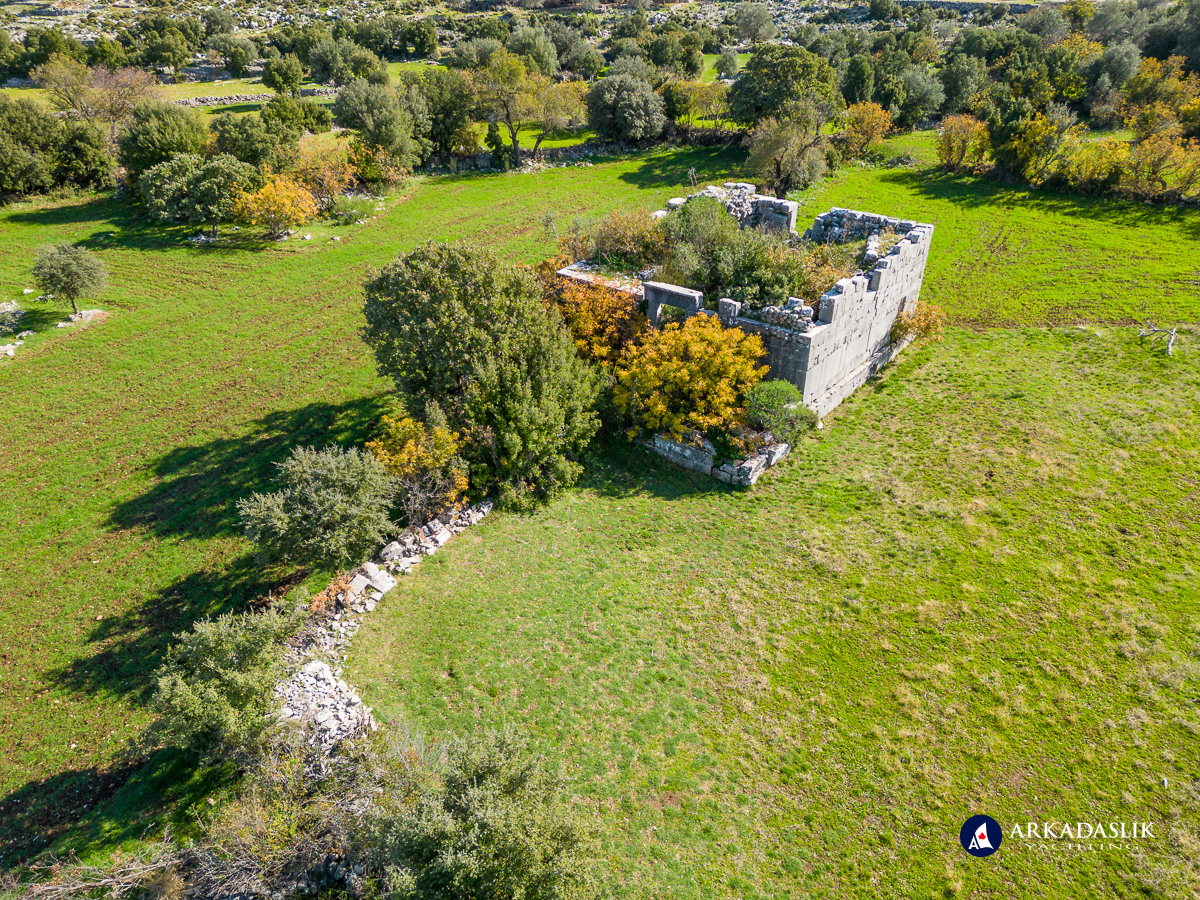
Churches in Sidyma
We identified at least two early church structures. Each consists of rectangular foundations, apsidal ends, and scattered architectural elements. These churches reflect Sidyma’s status as a Christian bishopric subordinate to Myra.

A Living Settlement
Dodurga is a living archaeological site. During our visits, villagers were gathering olives, tending animals, and preparing firewood for winter. Livestock wandered freely, and during our picnic, a herd of sheep kept us company.
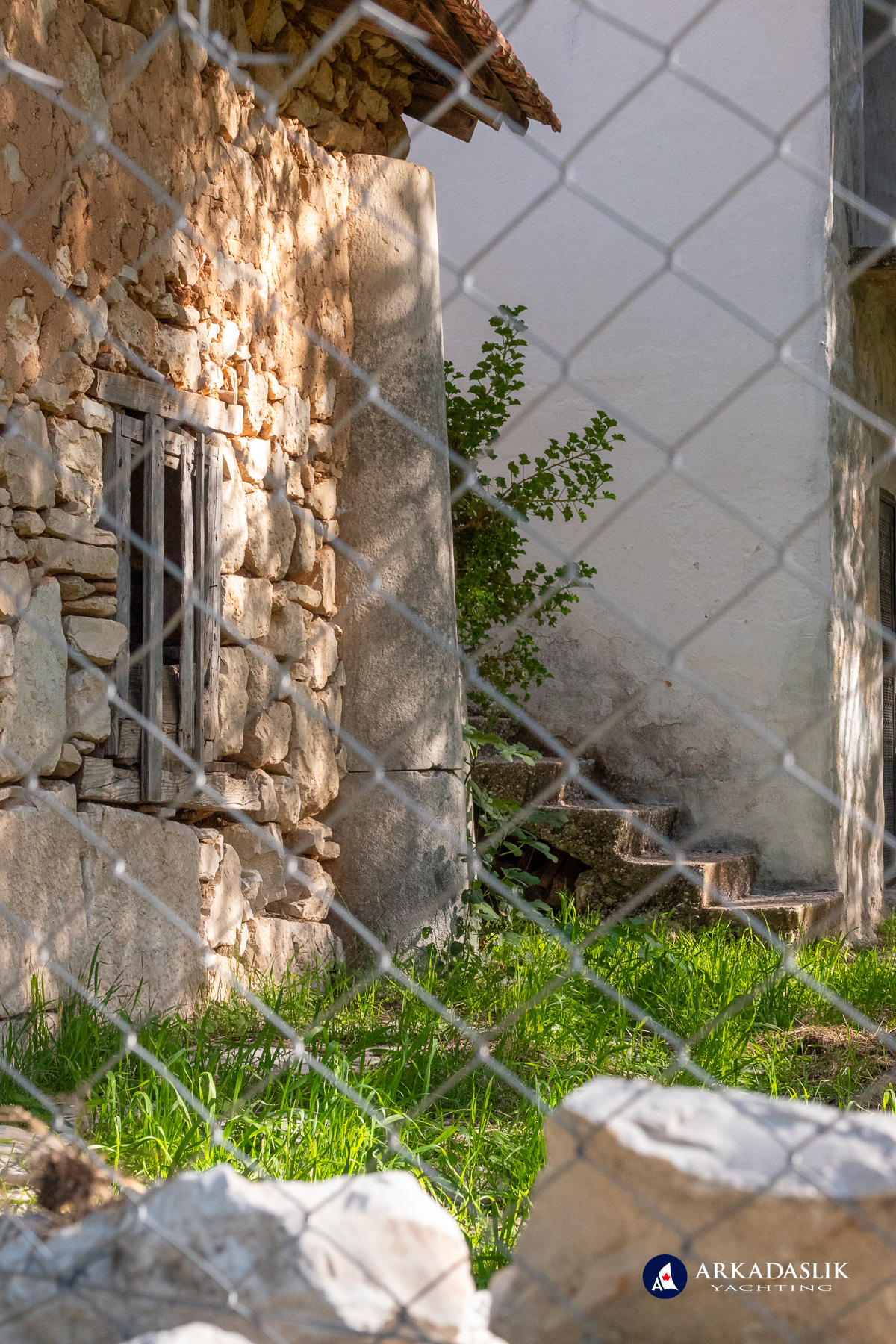
Inscribed Stones in the Mosque
One of Sidyma’s clearest examples of ancient–modern overlap appears in the village mosque, which incorporates several ancient inscription blocks in its walls. Some stones are positioned sideways or upside down, suggesting they were reused for practicality rather than to preserve their texts.
This combination of ancient and modern material highlights the long continuity of settlement on the plateau.

Why Sidyma Matters
Sidyma stands out among ancient settlements in Lycia because its history does not follow the usual regional pattern. Many Lycian cities flourished early, declined during Roman rule, and then revived briefly in the Byzantine period. Sidyma took a different path. It began modestly, gained political visibility earlier than expected, reached its peak in the Roman era, and maintained significance well into Late Antiquity.
The city’s origins trace back to the Iron Age, but Sidyma enters the historical record with real clarity in 425 BCE, when it appears in the tribute lists of the Delian League. Its political importance grew when Sidyma became one of the 23 founding members of the Lycian League, a democratic federation admired by ancient writers. This early membership suggests that Sidyma held influence long before its surviving architecture was built.
One unusual aspect of Sidyma is the absence of Lycian inscriptions. Most cities in Lycia preserve numerous examples of the Lycian language carved into tombs and civic monuments. Sidyma, however, preserves only Greek inscriptions, indicating that local elites adopted Greek administrative practices earlier than their counterparts elsewhere. These inscriptions reveal names, professions, public honours, and even connections to the nearby coastal settlement of Kalabatia, Sidyma’s port.
The Roman period marked Sidyma’s greatest prosperity. While other upland cities declined as trade shifted toward the coast, Sidyma benefited from wealthy families with ties to Xanthos and Patara who invested in their ancestral home. This explains the monumental tombs and civic buildings that seem out of proportion to the city’s remote location. The Sebasteion reflects both loyalty to Roman authority and the desire to express status through architecture.

Sidyma’s significance continued into the Byzantine era, when it became a Christian bishopric subordinate to Myra. Its bishops appear in historical records, serving at councils and regional gatherings. The churches visible today reflect this long period of occupation and adaptation.
Understanding Sidyma requires seeing both the deep past and the living present. Its unexcavated state allows visitors to interpret the landscape directly. At the same time, the coexistence of ancient structures and modern village life makes Sidyma distinct among historic sites near Fethiye. It is a place where the past has never been fully separated from the present.
How Sidyma Differs From Other Lycian Cities
Sidyma offers a different experience from other historic sites near Fethiye. Most well-known Lycian cities have been excavated, stabilized, and organized into clear visitor zones. Sidyma is the opposite. Its ruins remain embedded in the village of Dodurga, spread across terraces, gardens, and olive groves.
A few key differences make Sidyma unique:
- Unexcavated landscape: Sites like Xanthos or Patara present formal archaeological layouts. Sidyma remains integrated with daily life.
- Lack of Lycian inscriptions: Cities such as Pinara and Tlos preserve abundant Lycian texts. Sidyma preserves only Greek inscriptions, indicating an early shift toward Greek cultural norms.
- Different funerary traditions: Many Lycian cities have rock-cut tombs carved into cliffs. Sidyma has none. Instead, it preserves monumental built tombs, podium sarcophagi, heroons, and family chambers.
- Village coexistence: Few places in Lycia show such close overlap between past and present. Ancient stones appear in modern walls. Terraces contain monumental tombs. The mosque incorporates reused inscriptions.
- Quiet atmosphere: Sidyma receives far fewer visitors than the UNESCO-listed sites, offering a relaxed pace for exploration.
Why Visit Sidyma?
Sidyma combines accessibility, calm surroundings, and substantial ancient remains. Its plateau setting makes walking relatively easy, while the variety of funerary and civic structures provides depth for those interested in Lycian and Roman architecture. The presence of the modern village adds context and continuity.
For travellers seeking historic sites near Fethiye, Sidyma offers a calm environment and a different kind of encounter with the ancient world, guided by curiosity, observation, and respectful wandering.
Practical Information for Visitors
- Location: Dodurga, Seydikemer district, Muğla province.
- Access: About one hour’s drive from Fethiye on well-maintained highways and secondary roads. The final road section is steep but doable, even on a motorbike.
- Entrance: Entrance to the site is free.
- Navigation: Very limited signage. A few Lycian Trail markers appear near the village, but within the site itself, paths are unmarked. Expect to follow informal tracks and avoid cultivated areas.
- Terrain: Rocky and uneven. Wear proper walking shoes or runners suitable for rough ground.
- Time Needed: About two hours for a focused visit; longer if you enjoy photography or picnics.
- Supplies: Bring food and water.
For more stories and insights about historic sites in Lycia and beyond, we invite you to visit our website, where we continue to document archaeological landscapes during our adventures throughout Turkey.
Sidyma Through Our Lens: A Photo Gallery
Click on any image to expand.
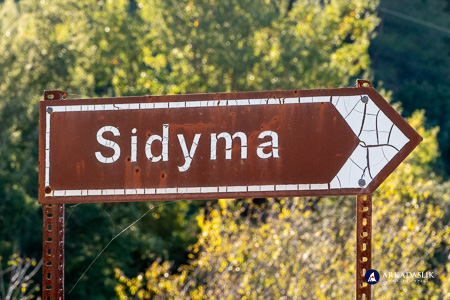

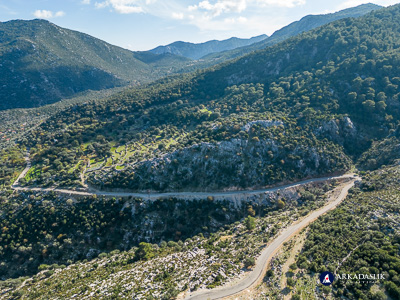
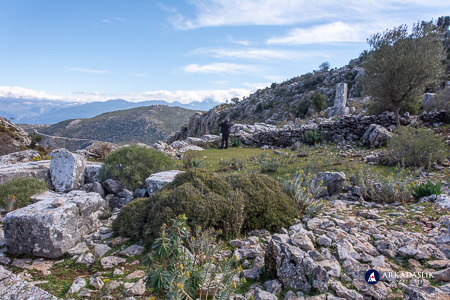

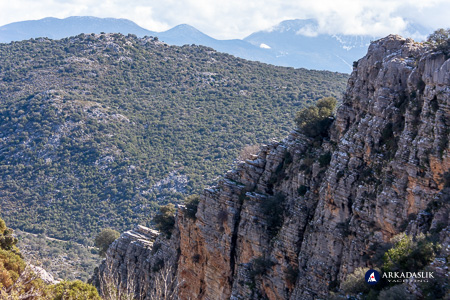



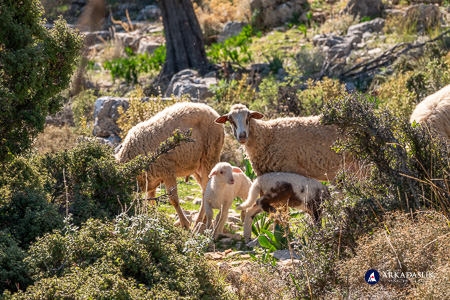
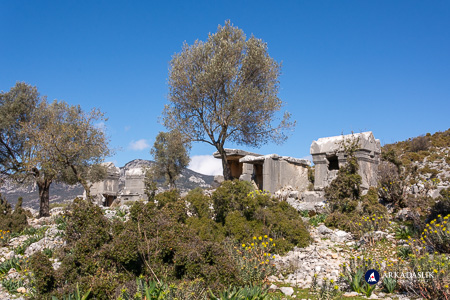
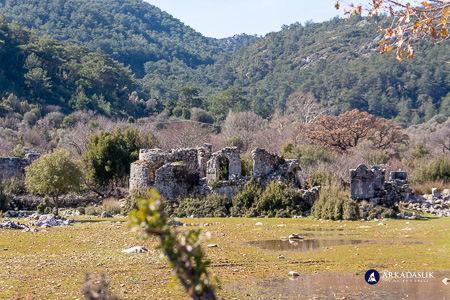
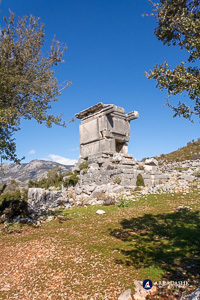
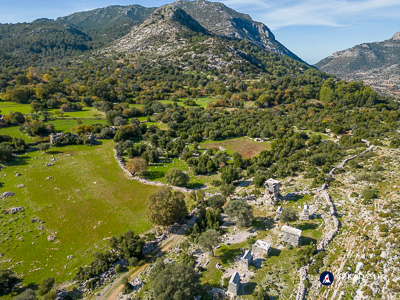
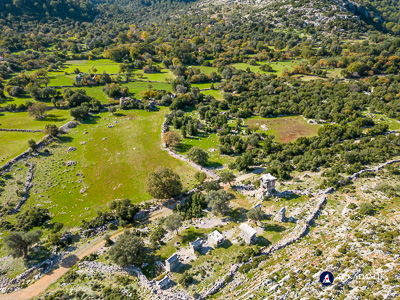
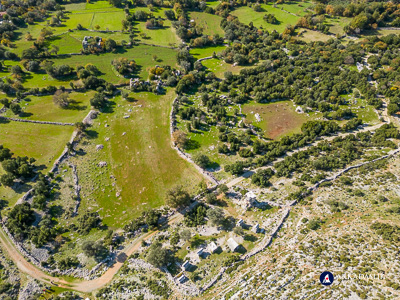

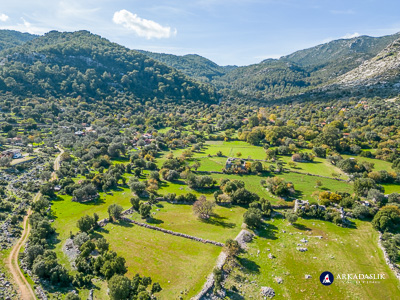
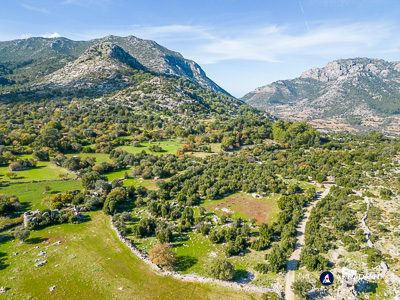
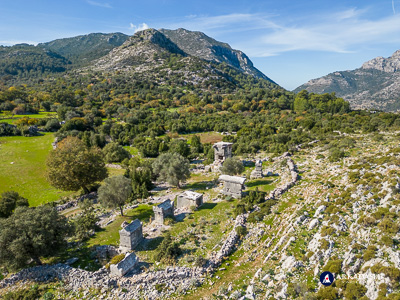
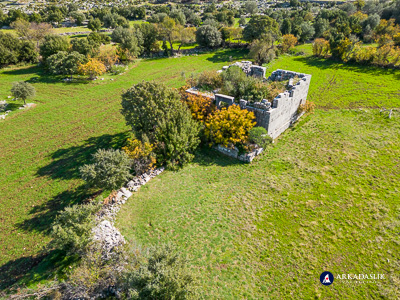

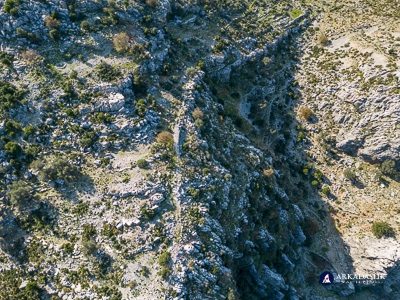
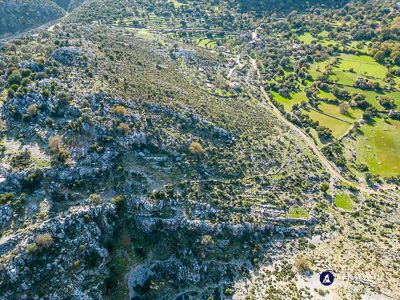


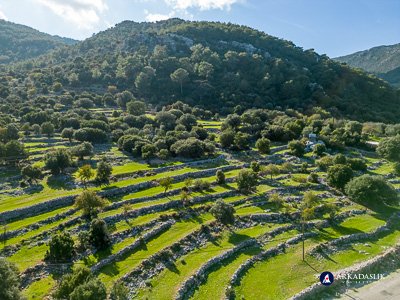

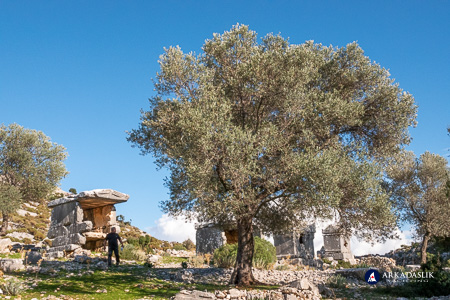

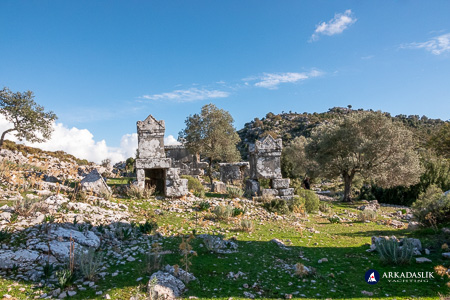

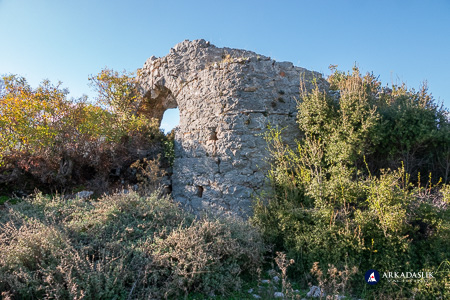

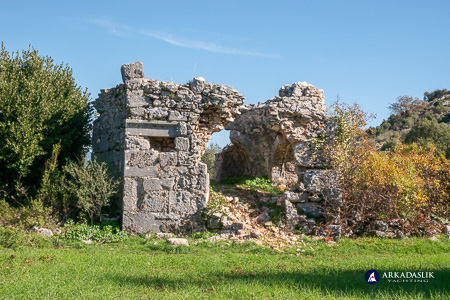

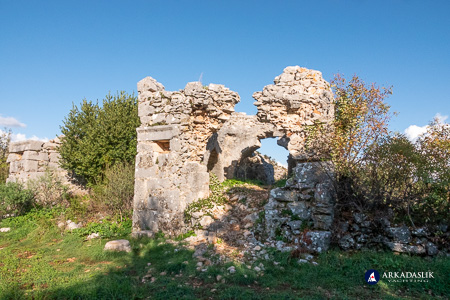



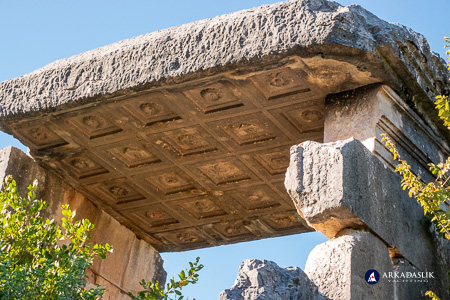
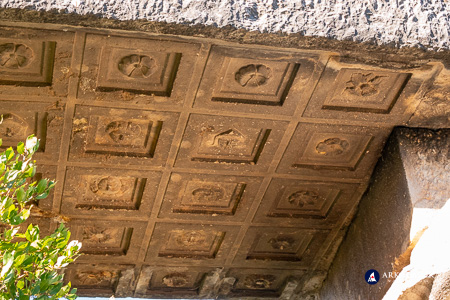
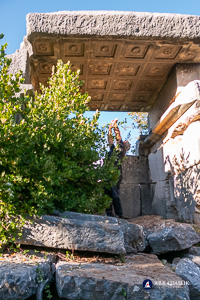
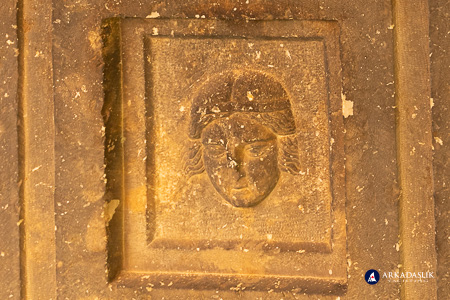
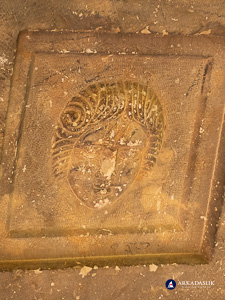
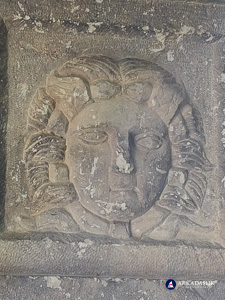

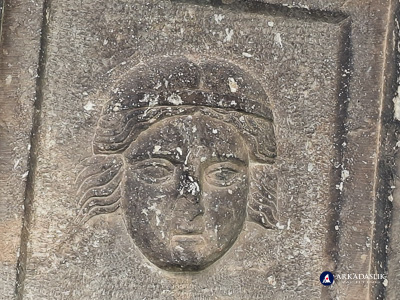

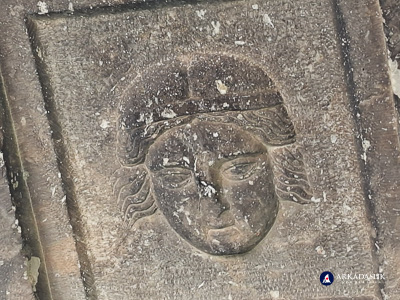

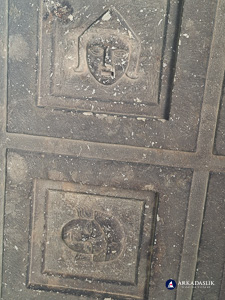

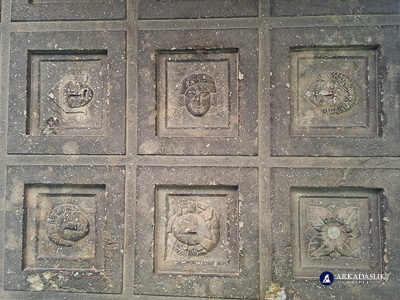



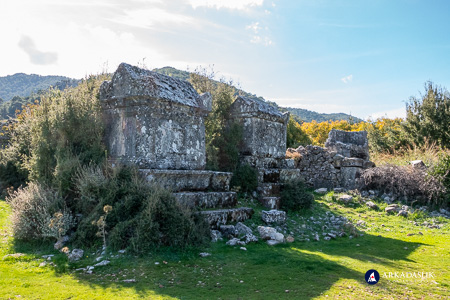
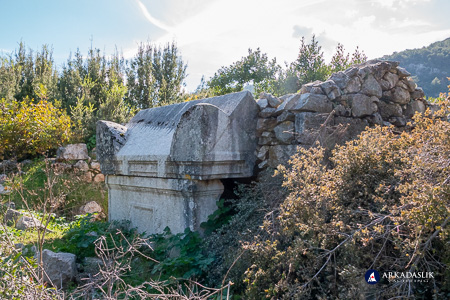
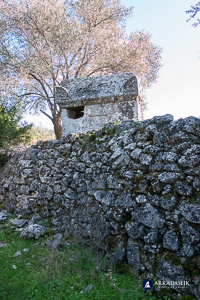
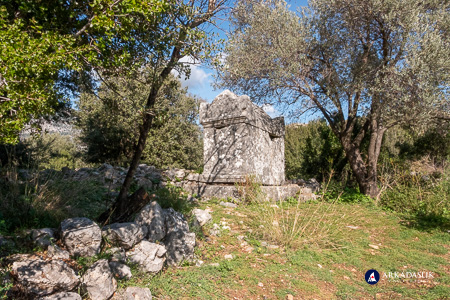
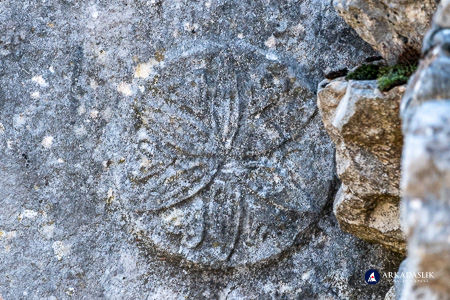
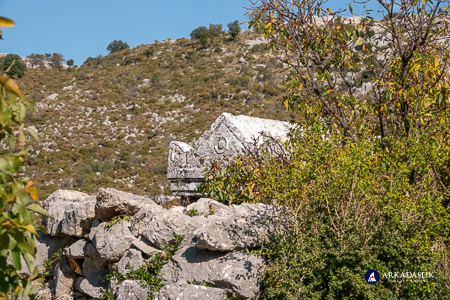
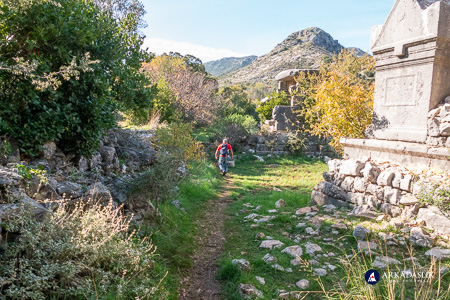
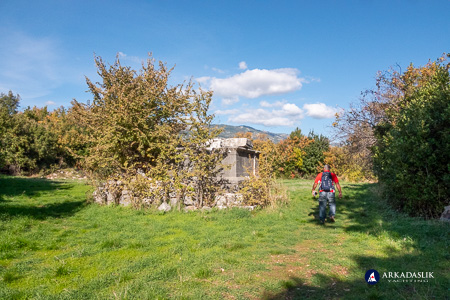
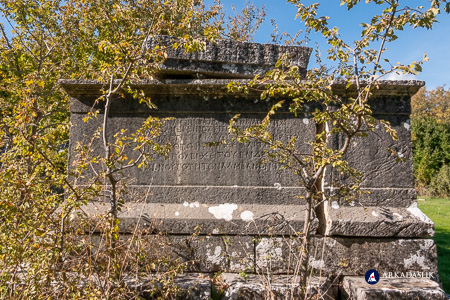
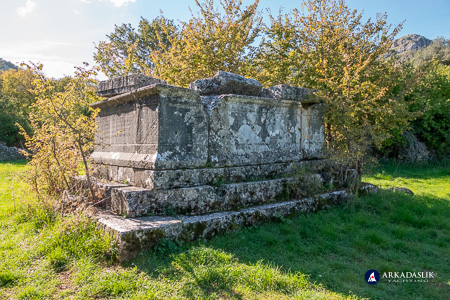

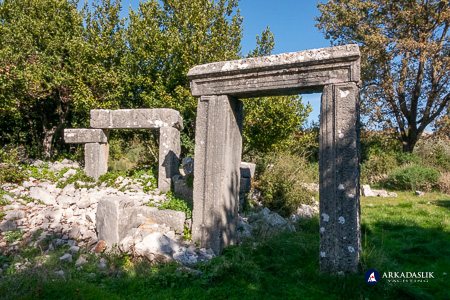
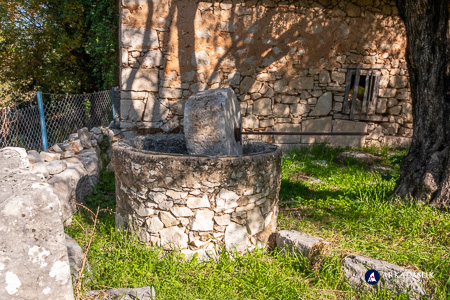
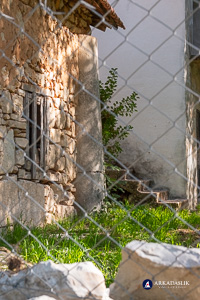

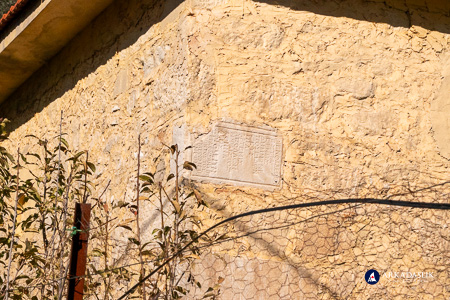
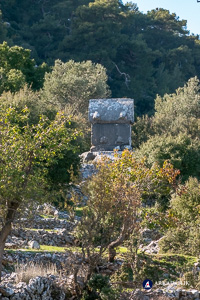
Helpful Resources
- Bean, G.E. (1989) Lycian Turkey: An Archaeological Guide.
- Fellowes, Charles. An Account of Discoveries in Lycia.
- Lycian Monuments. (n.d.) Sidyma Ancient City.
